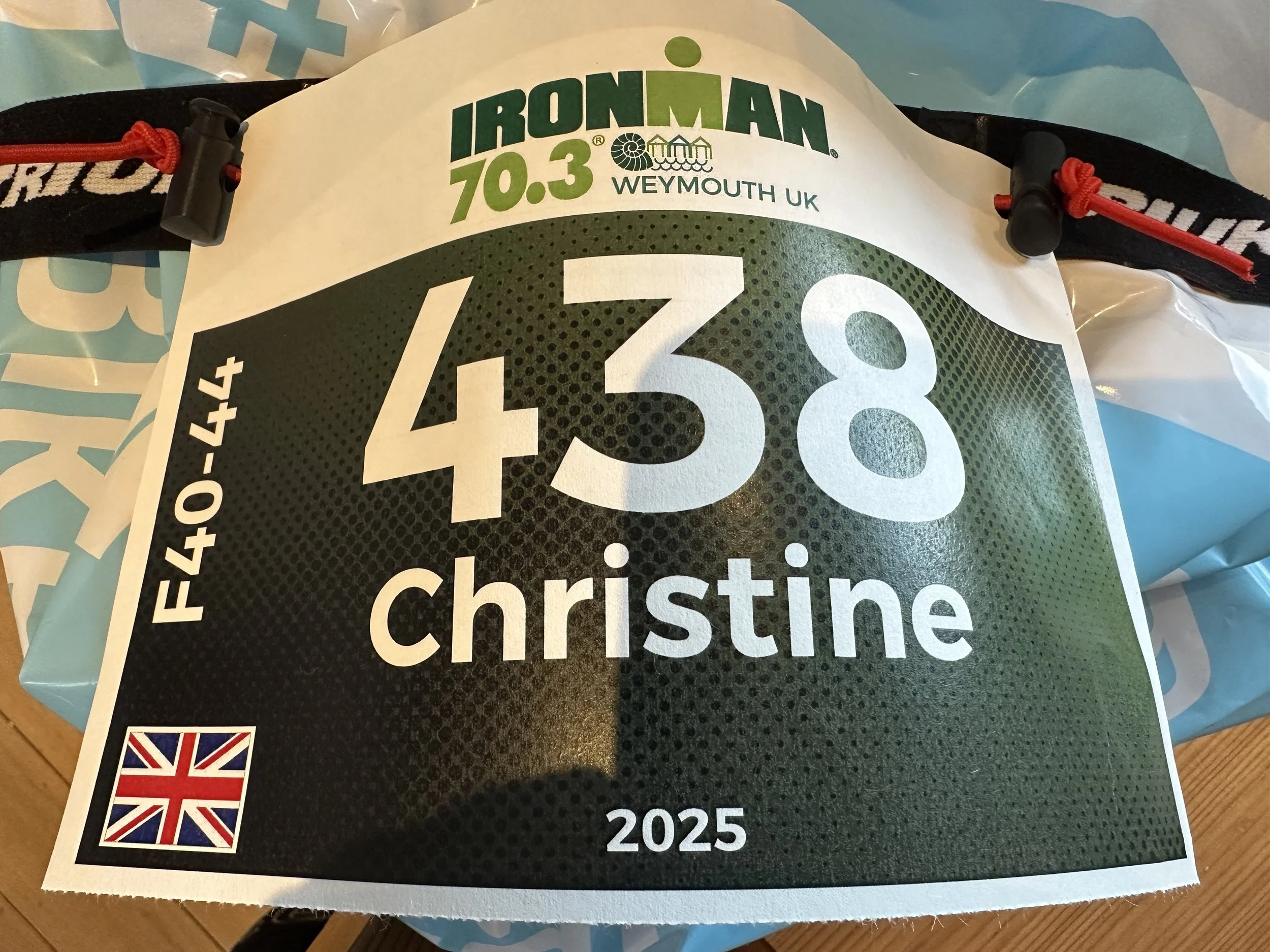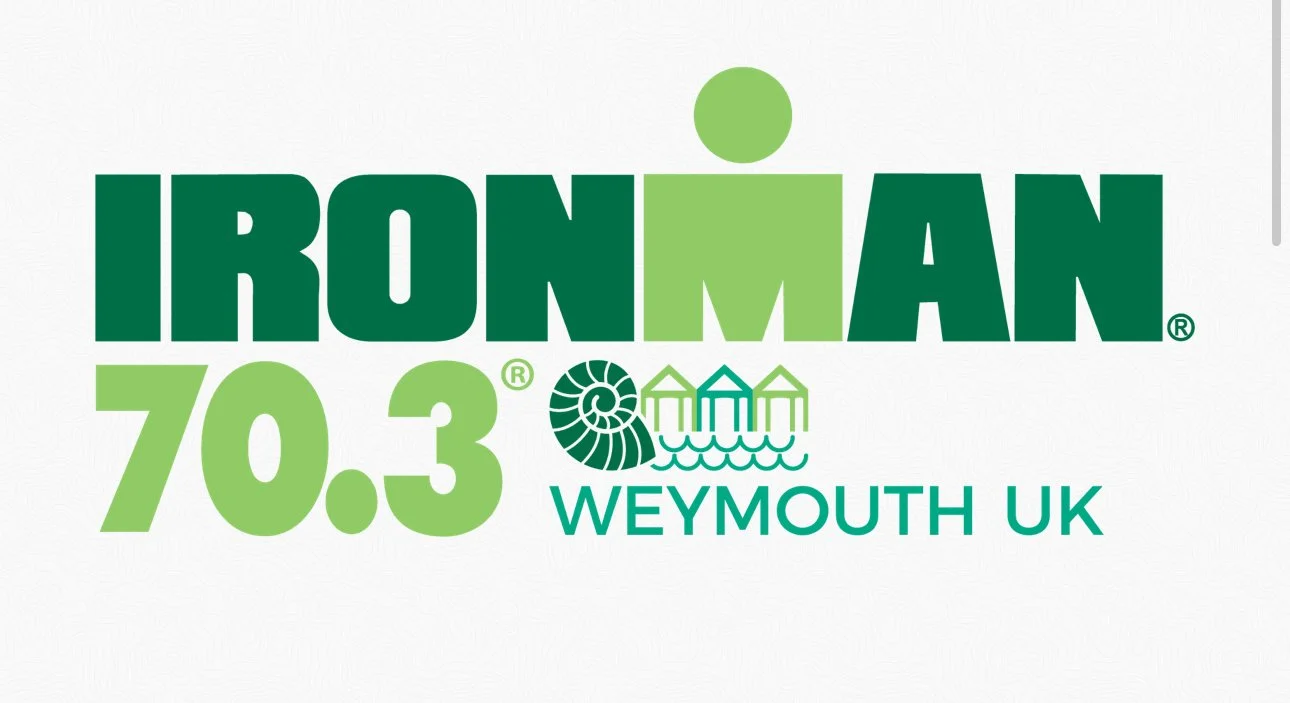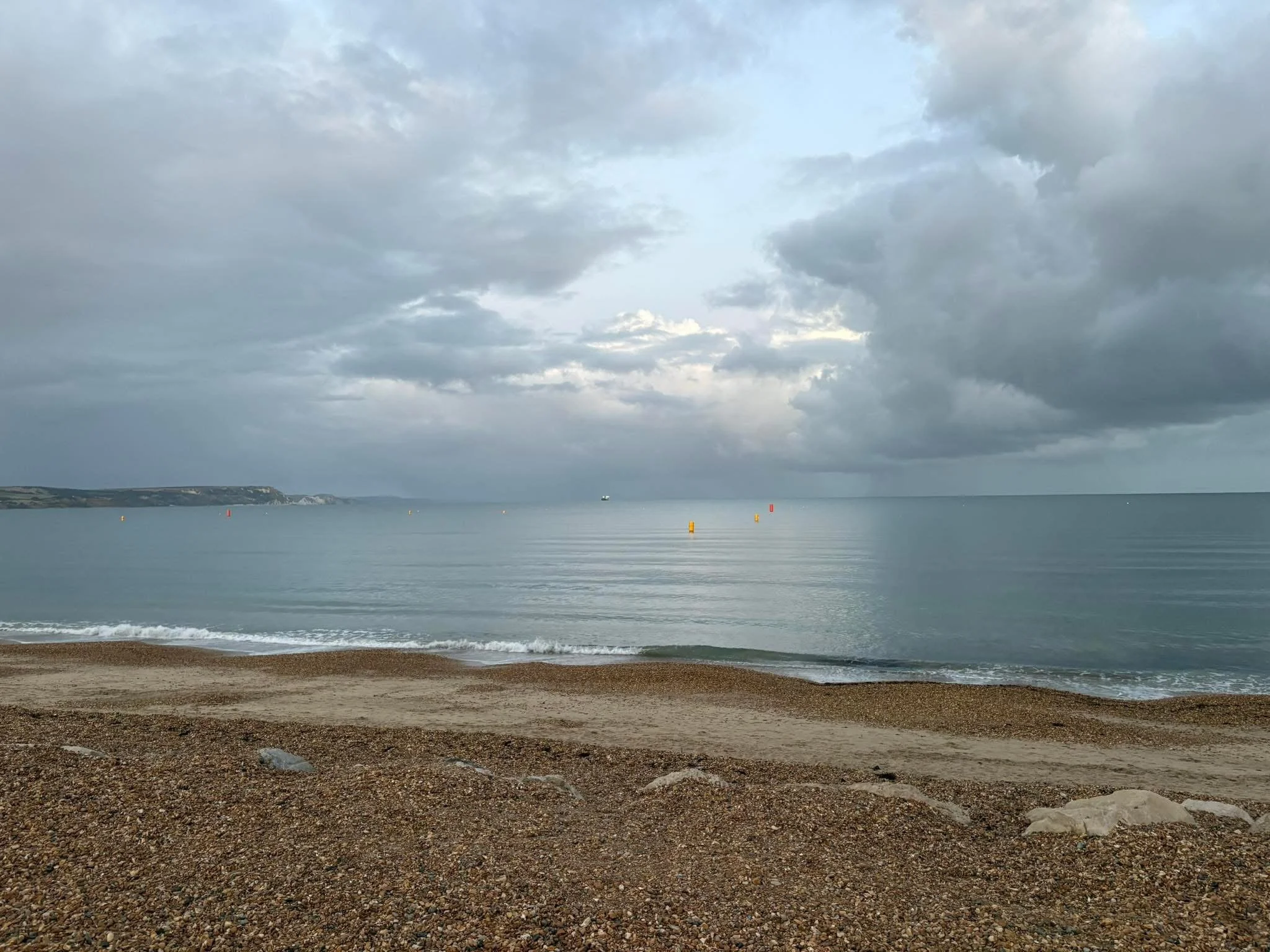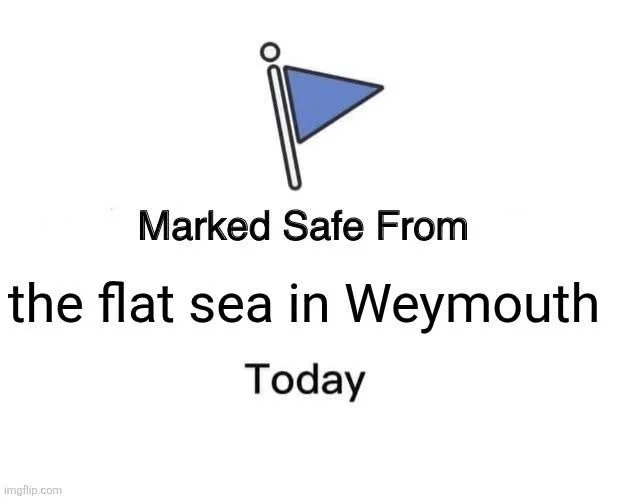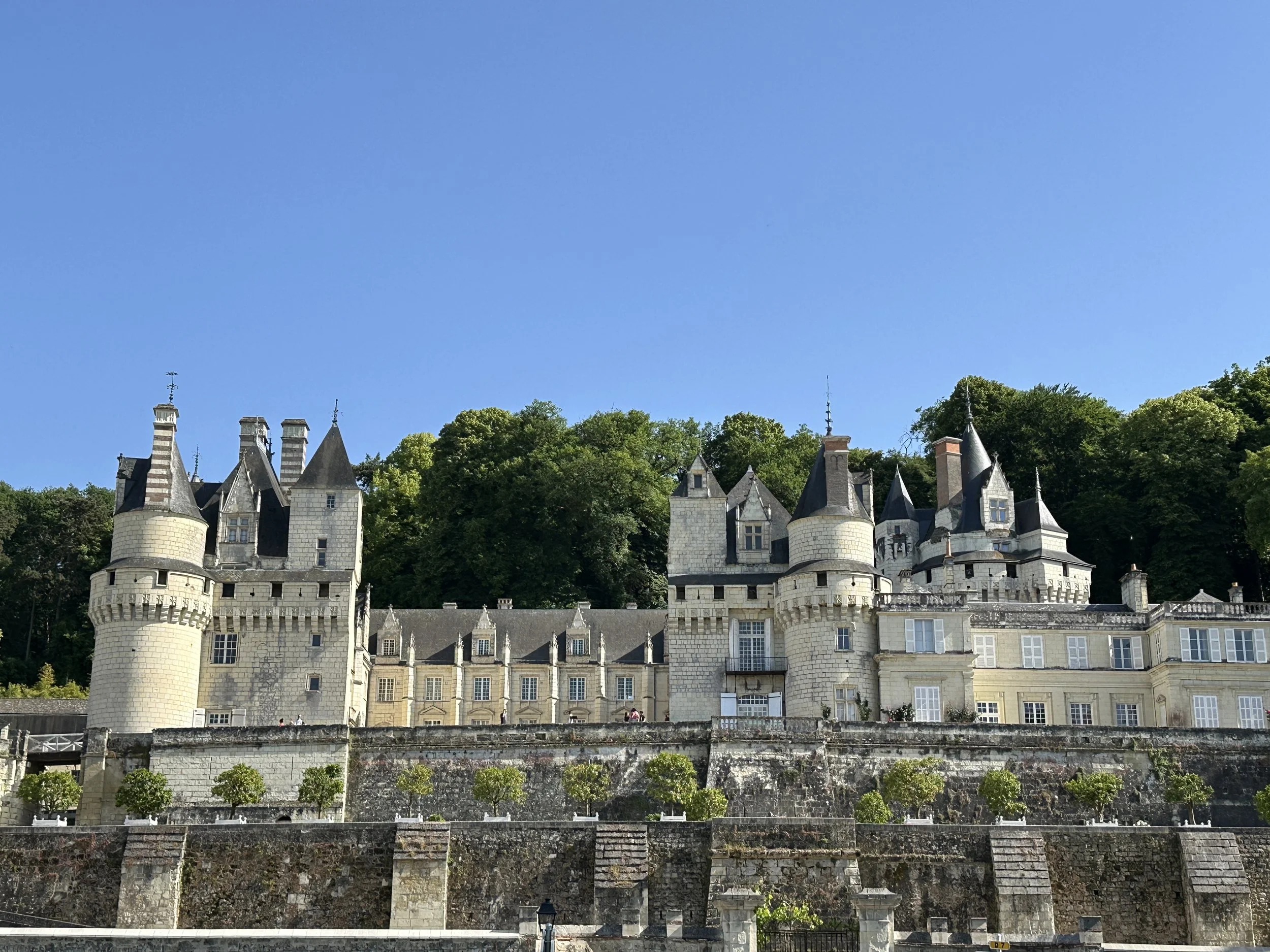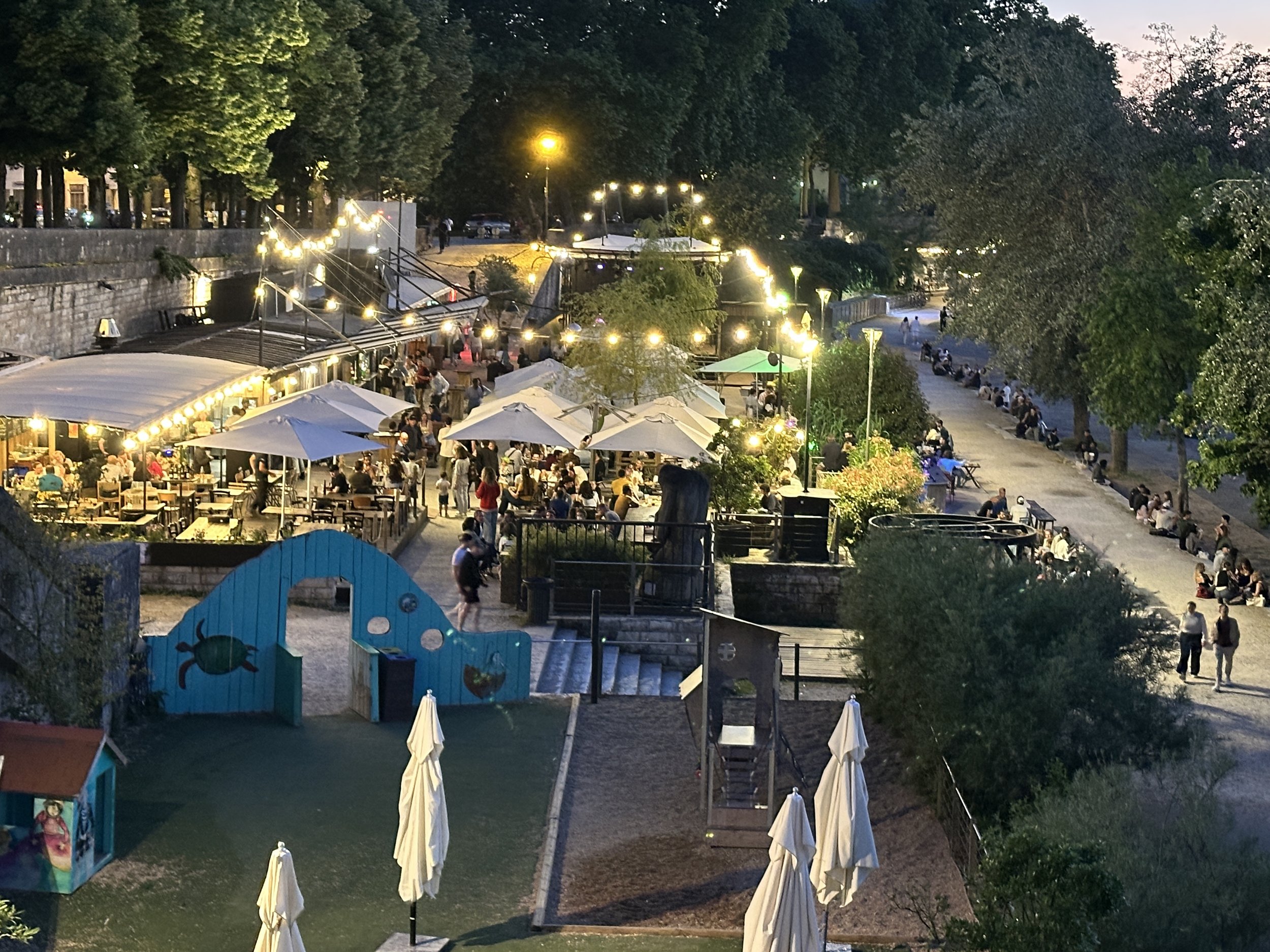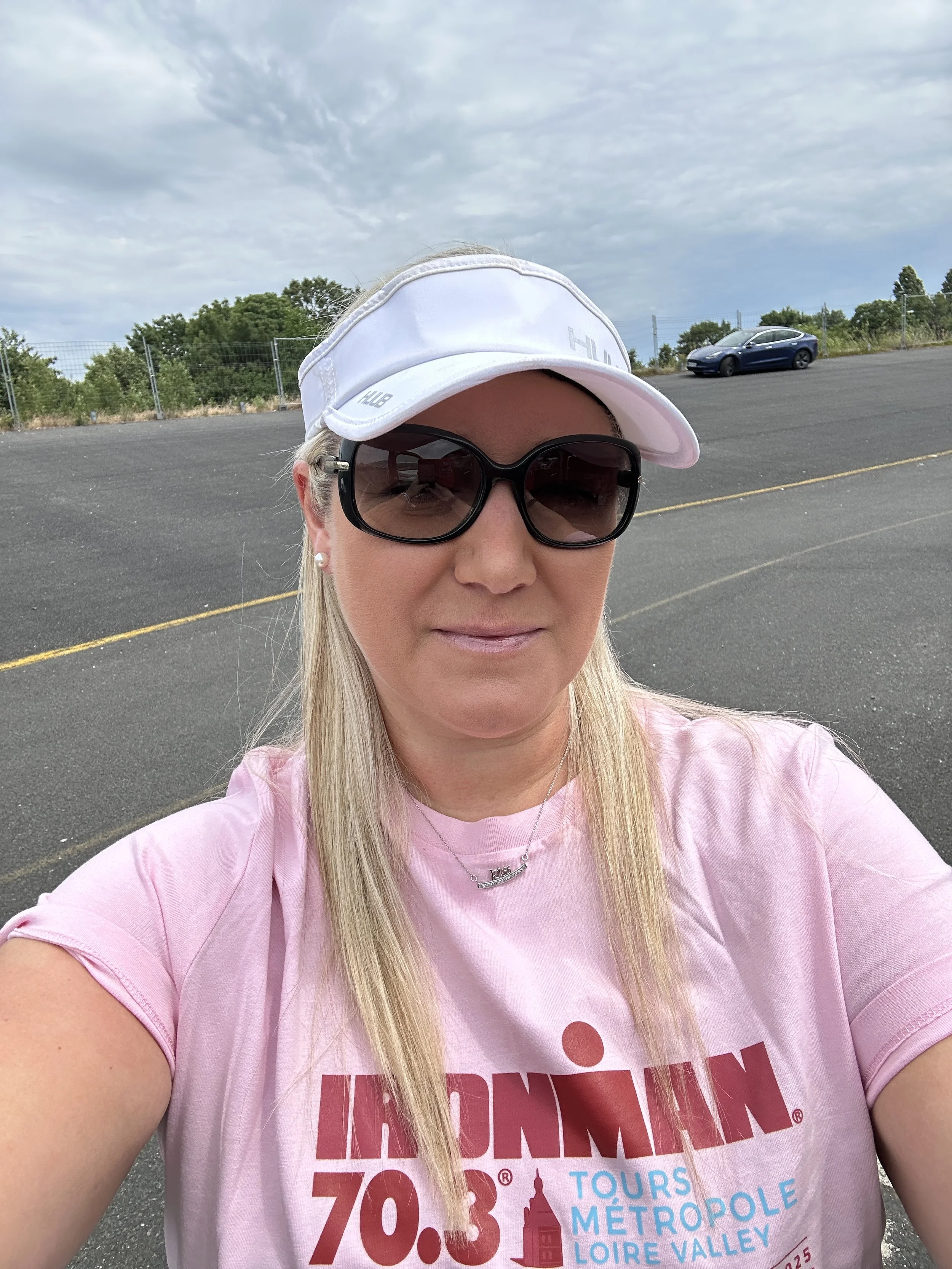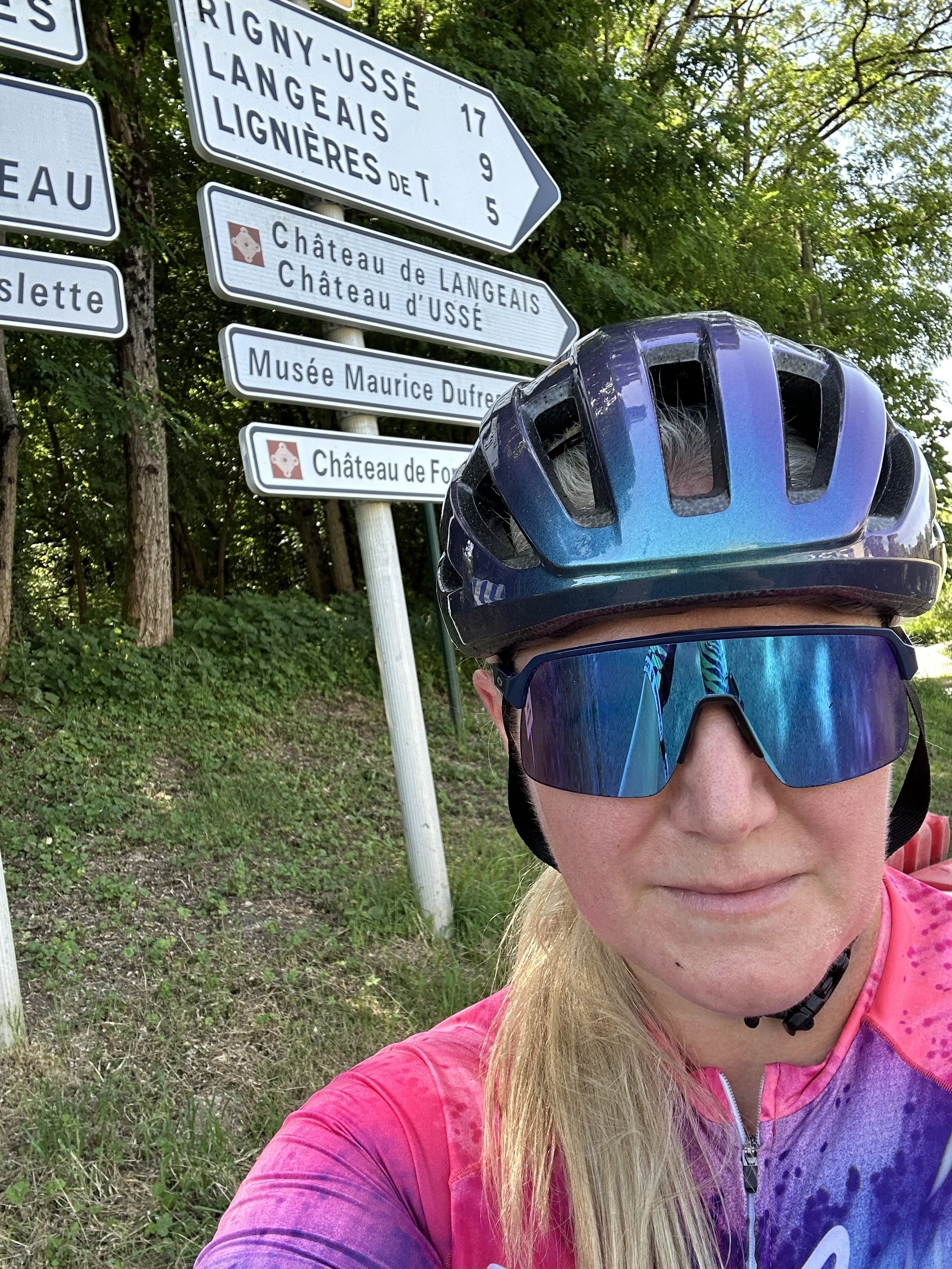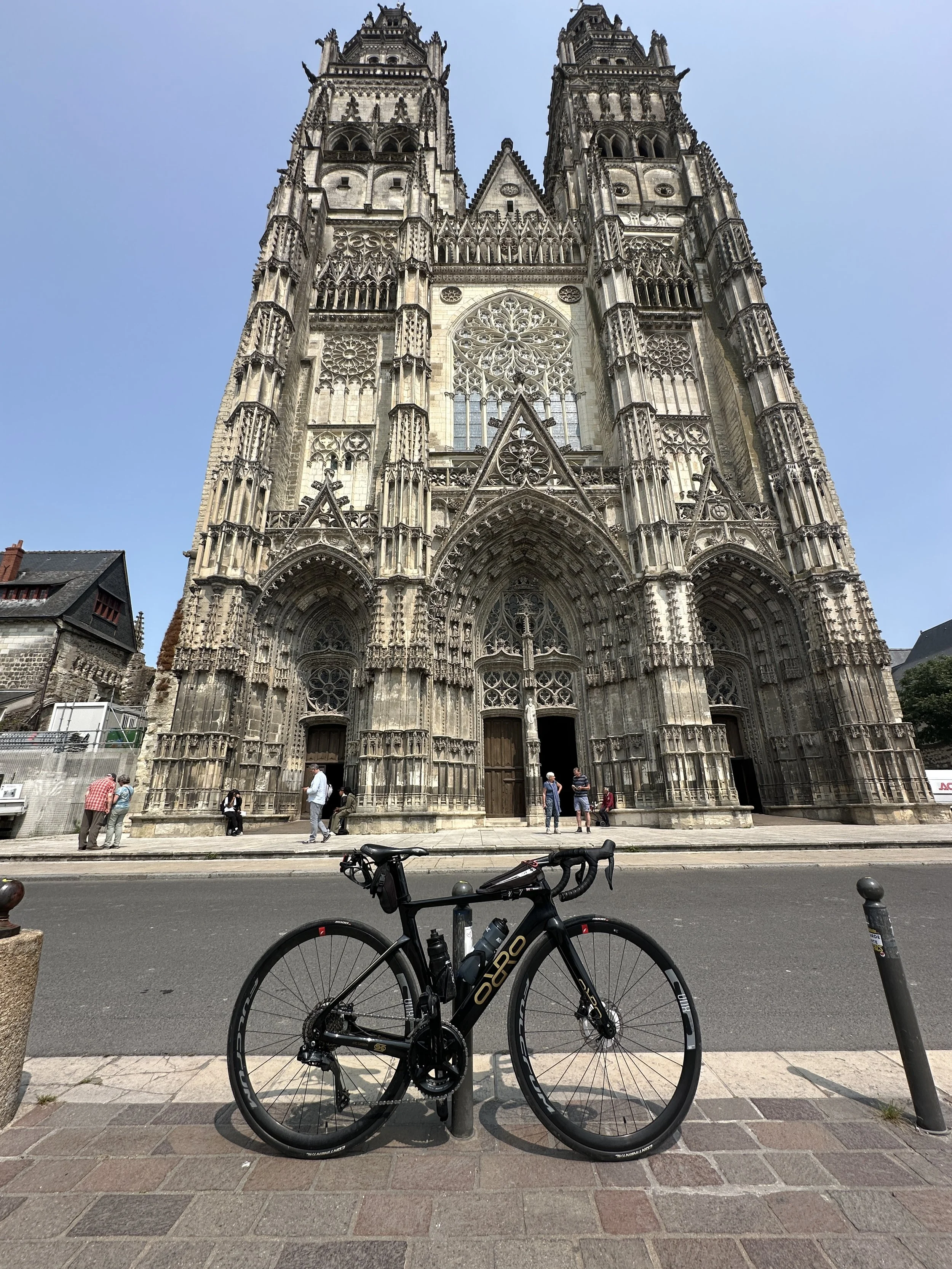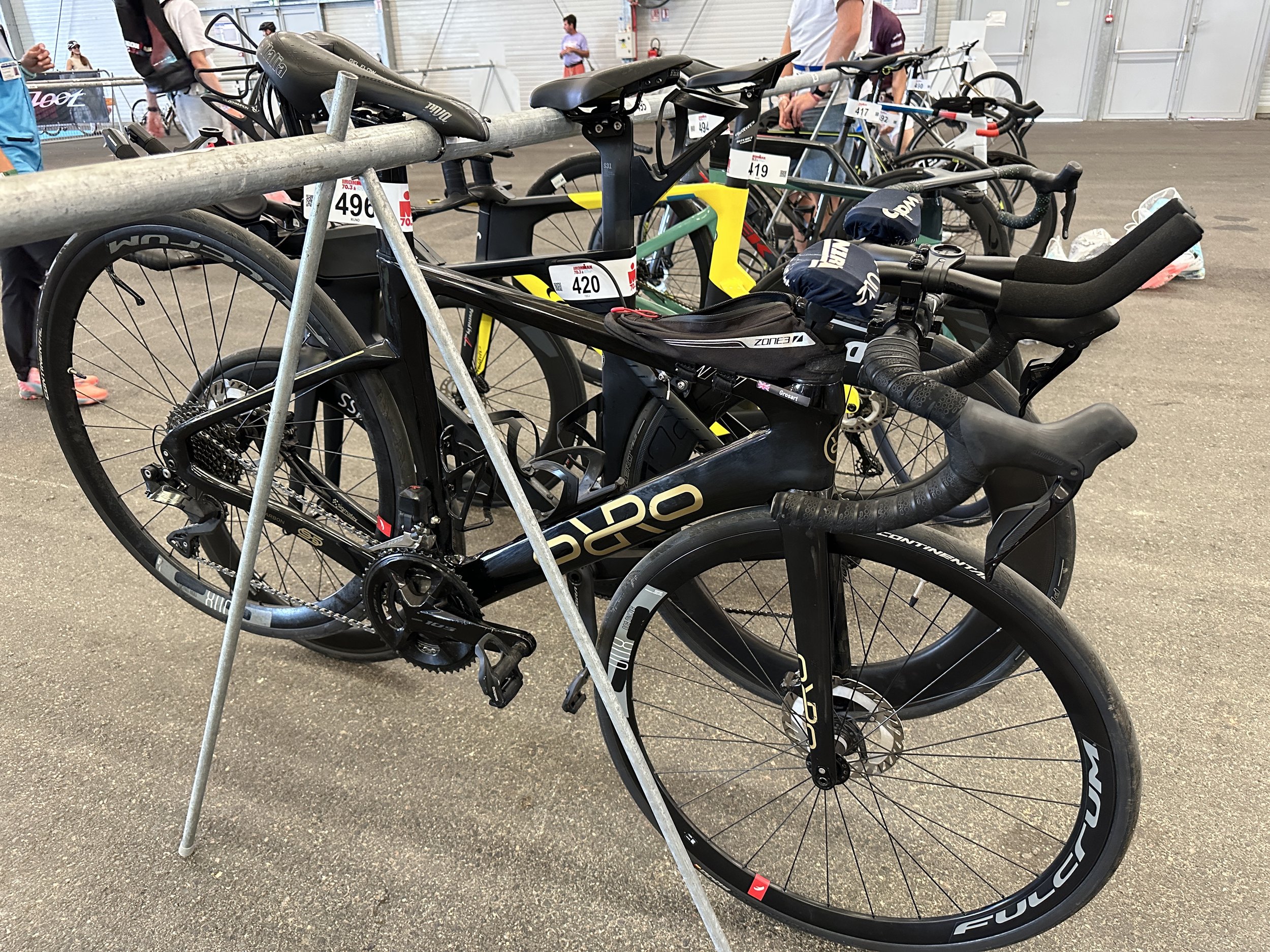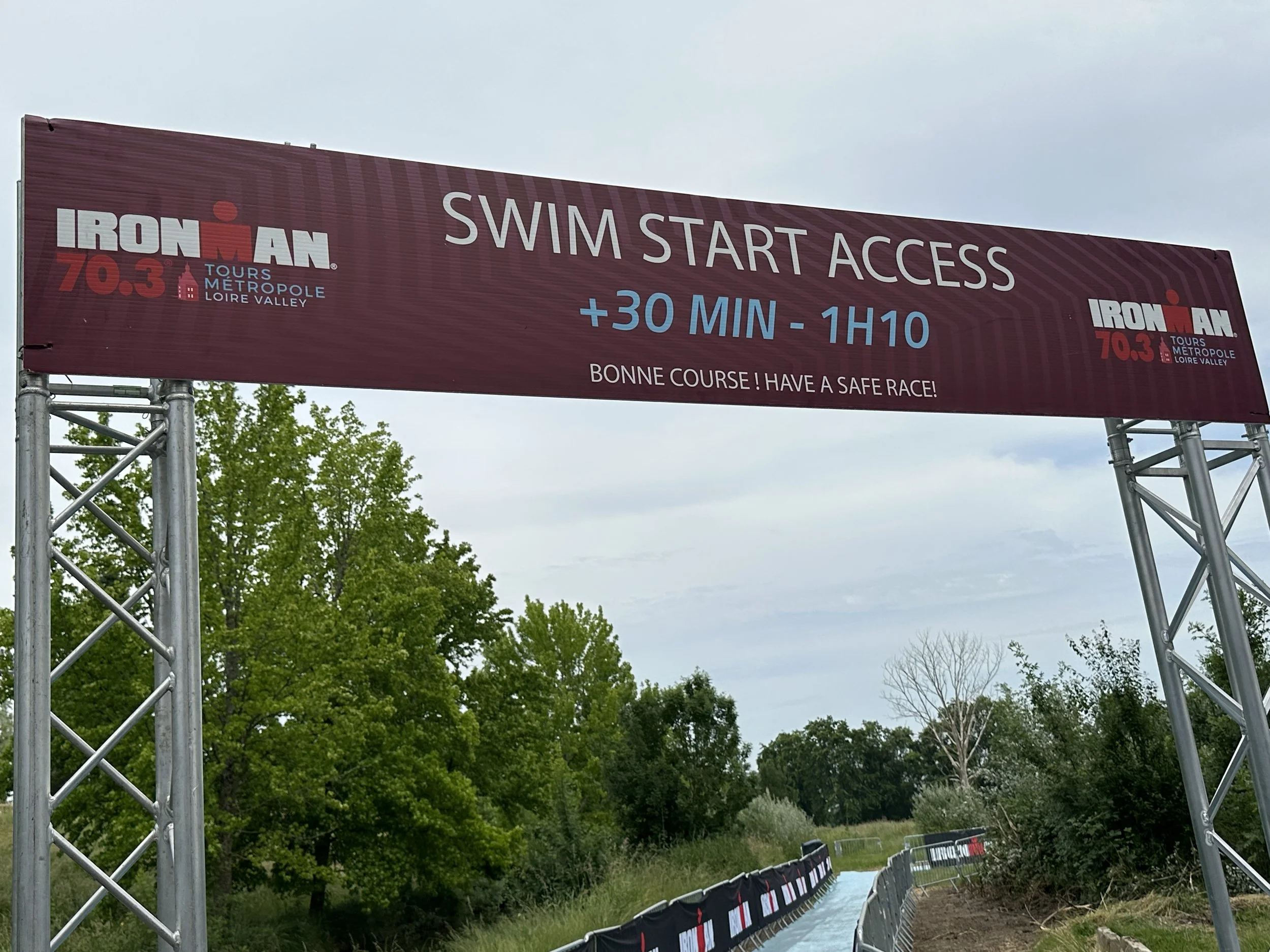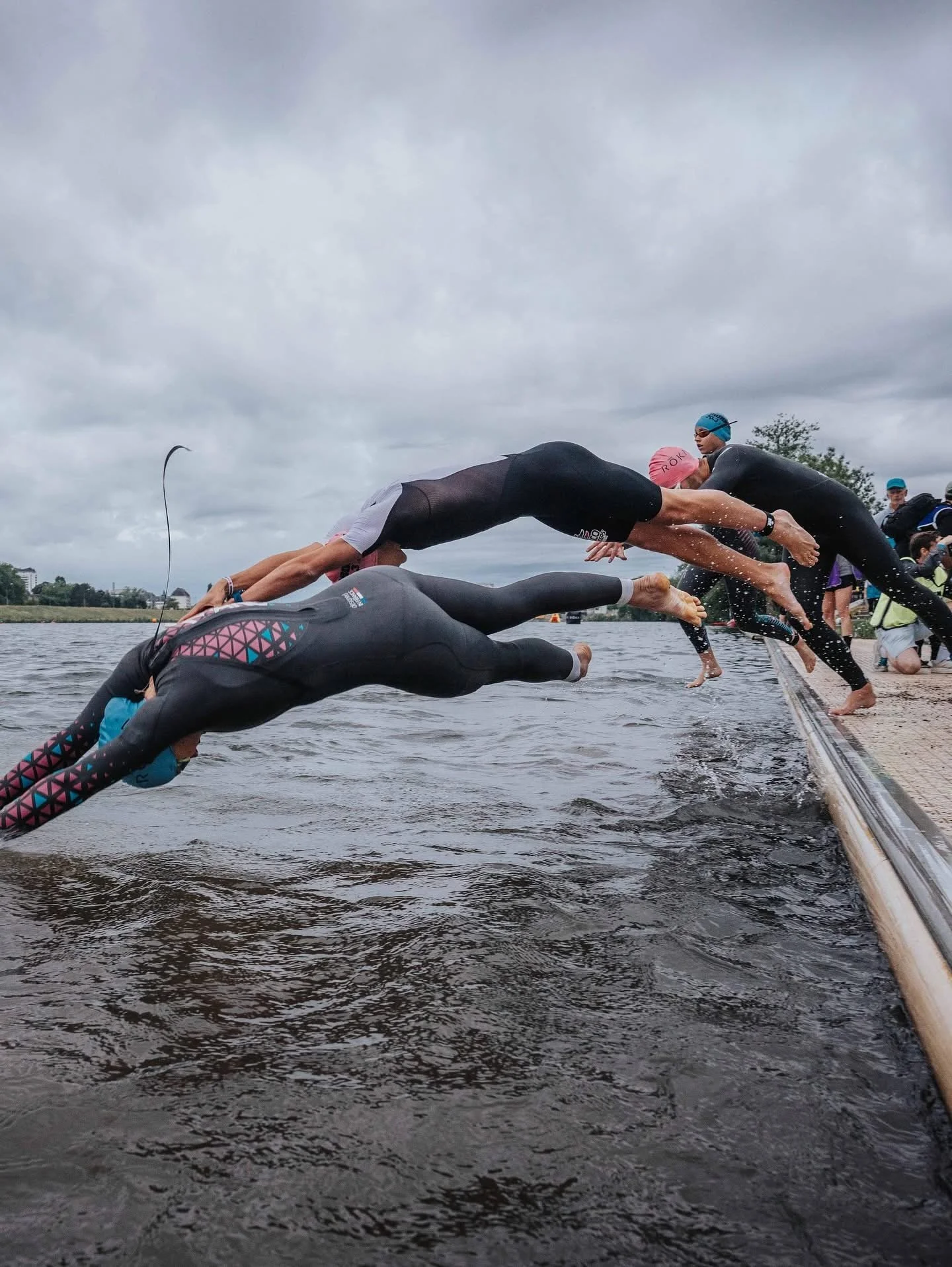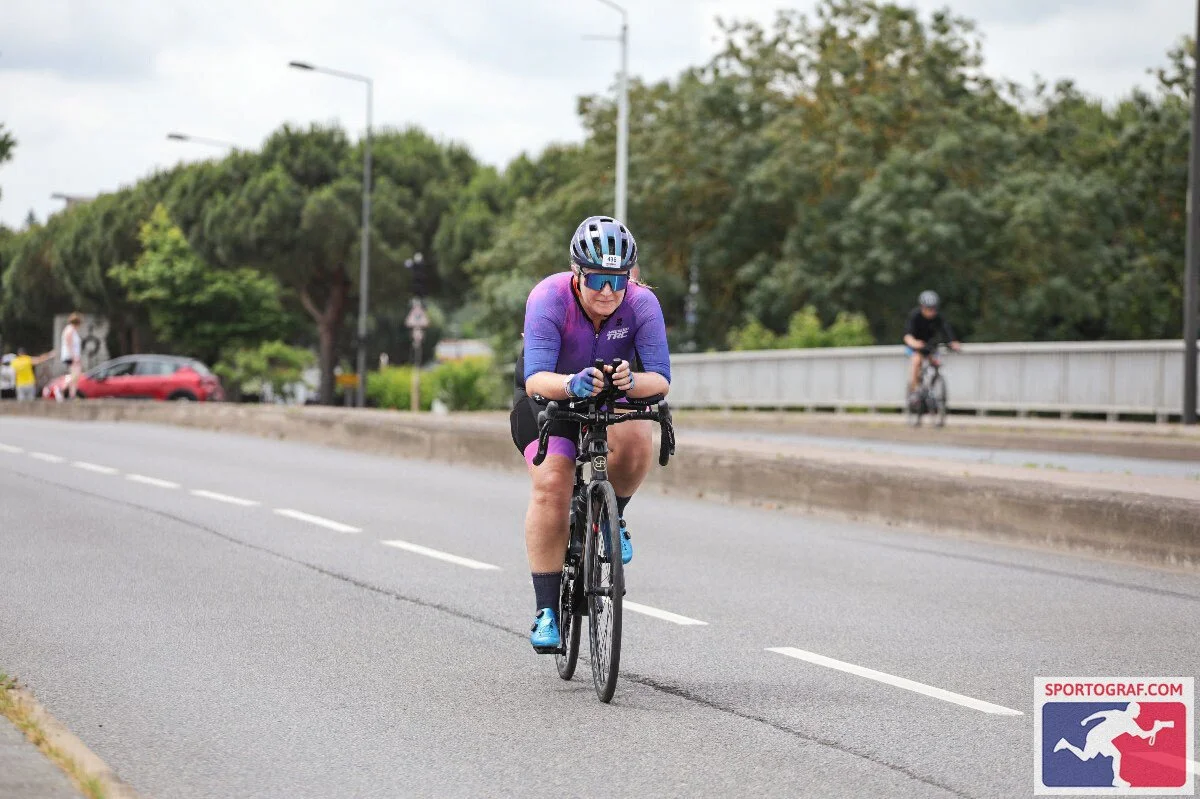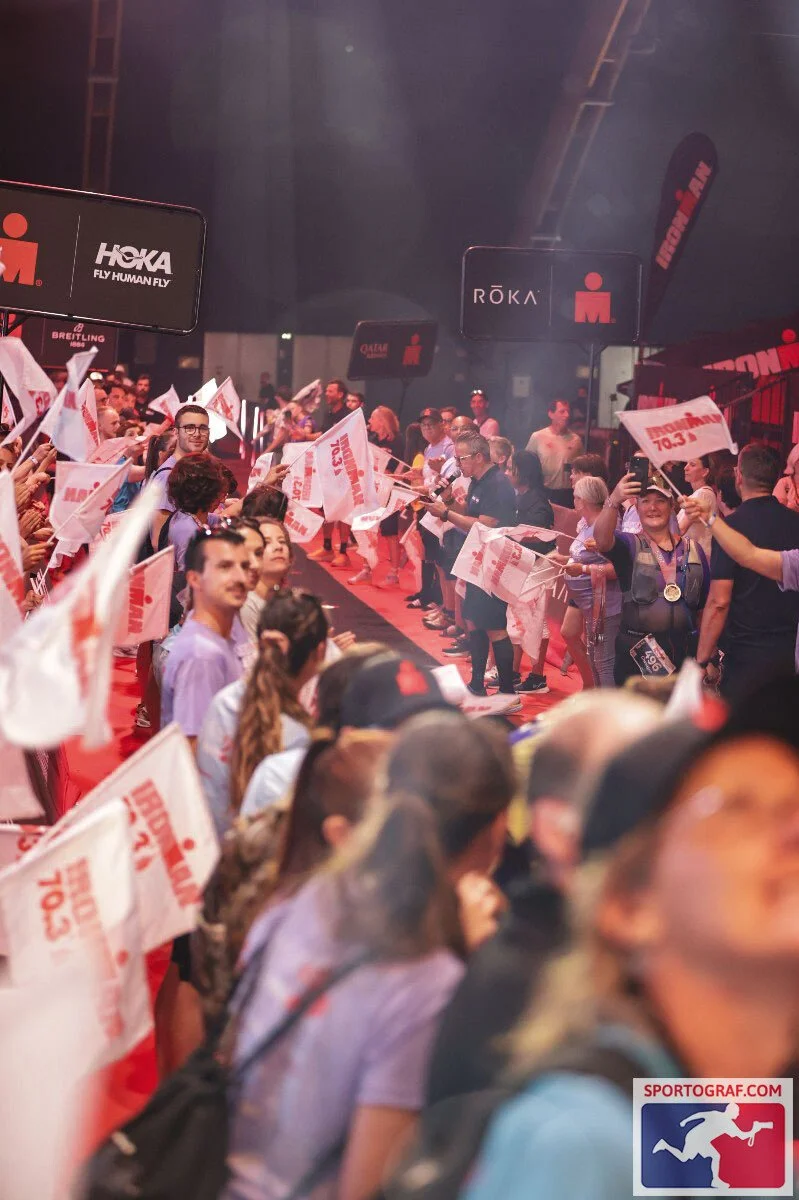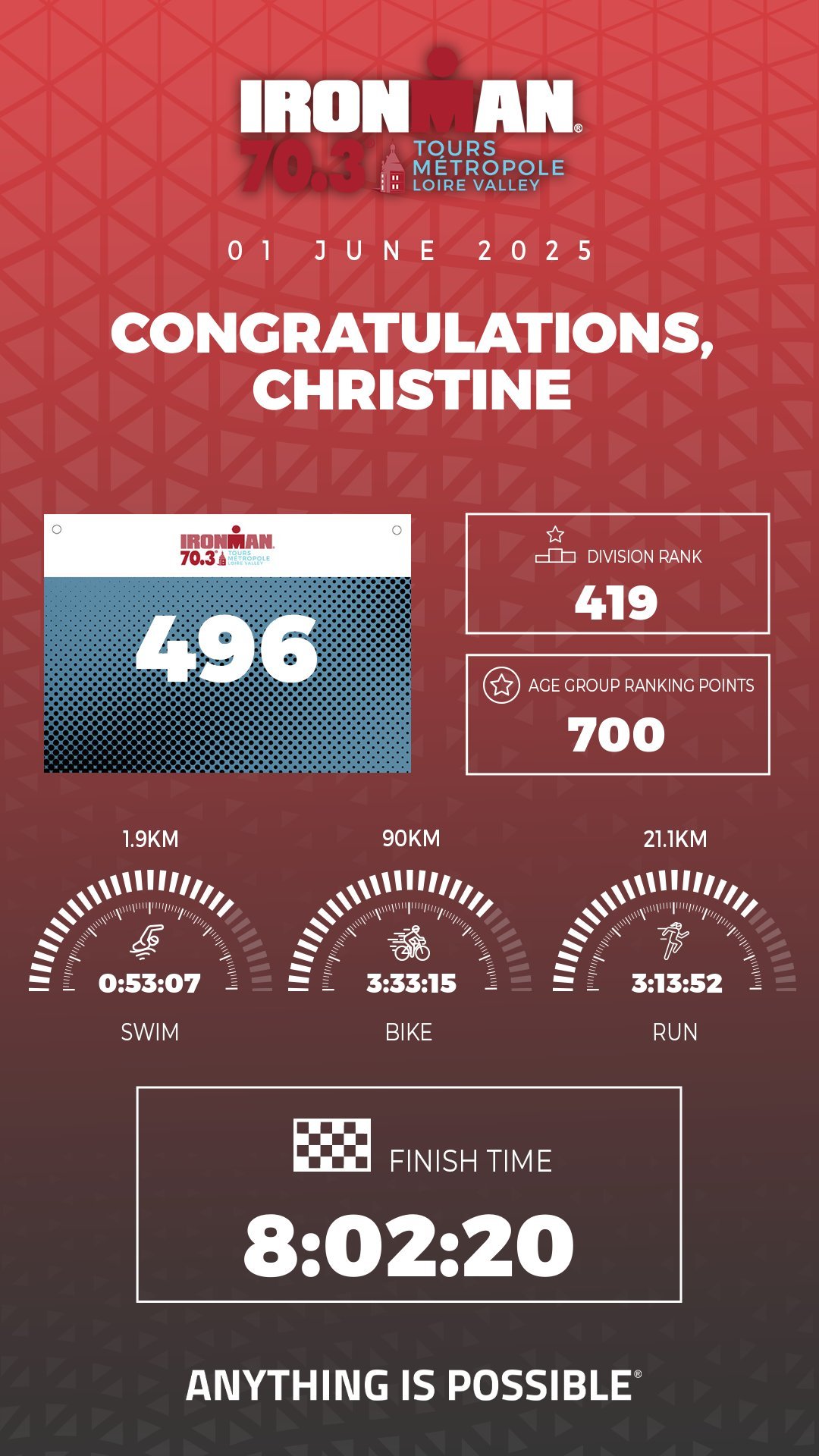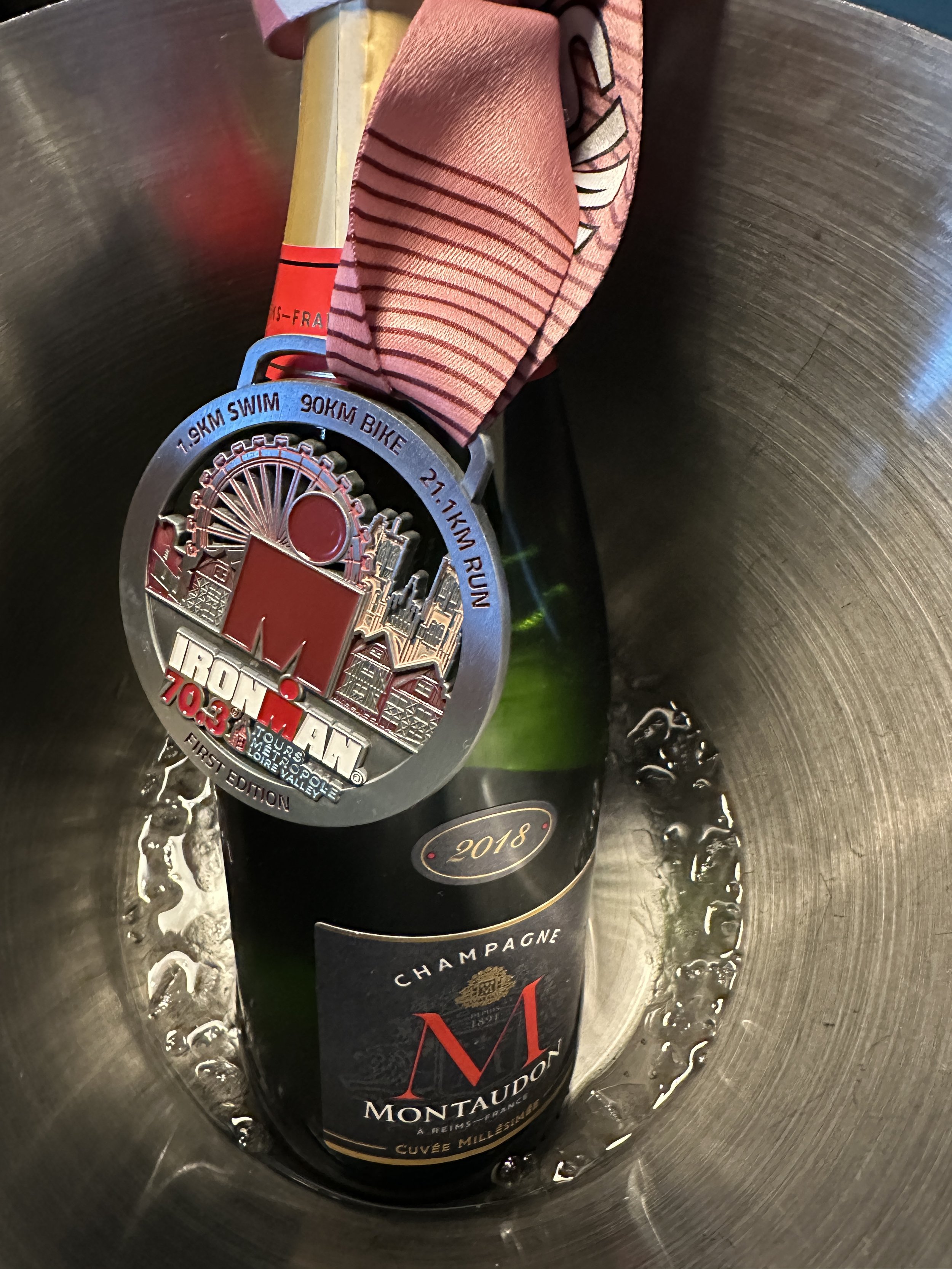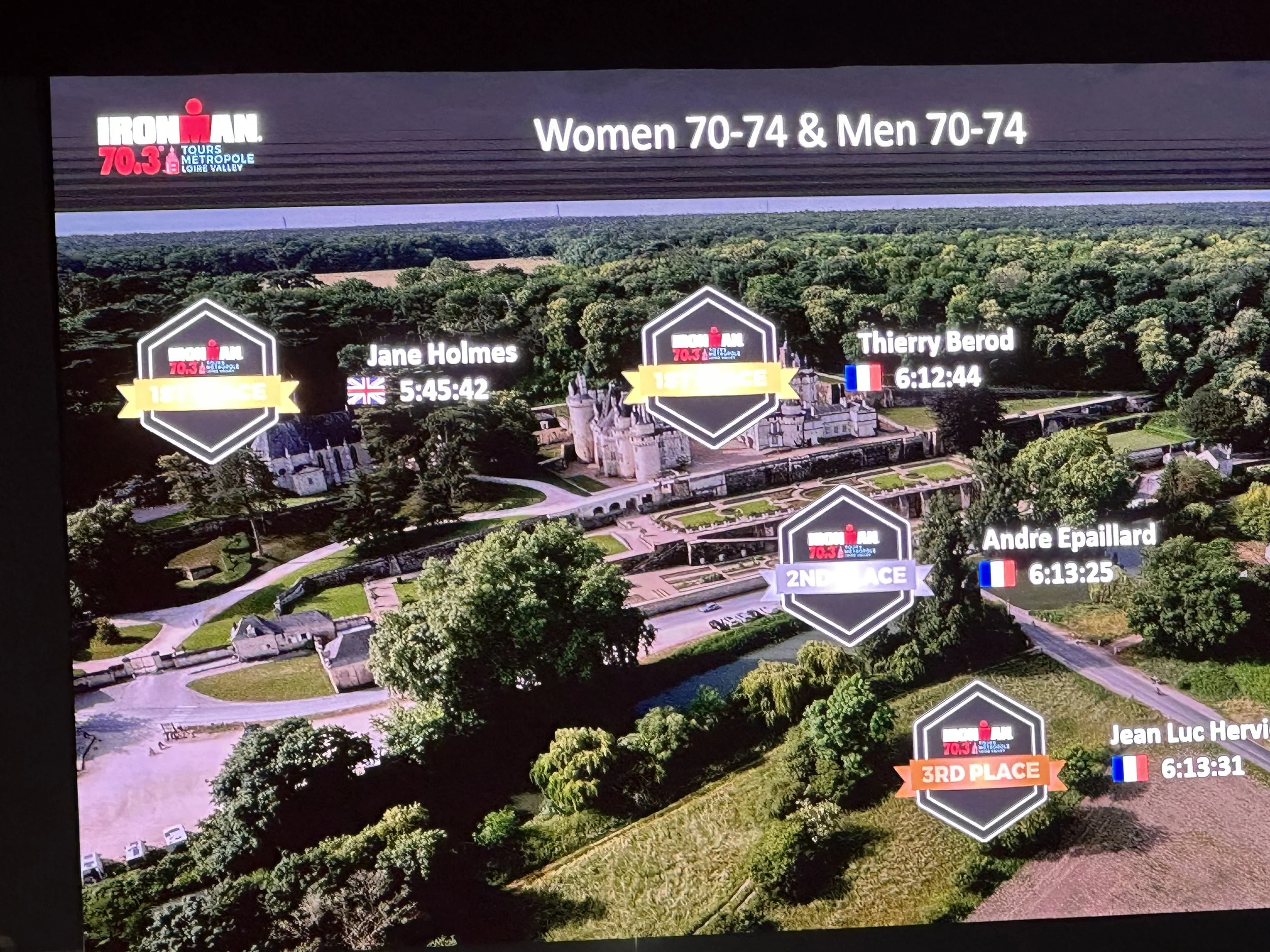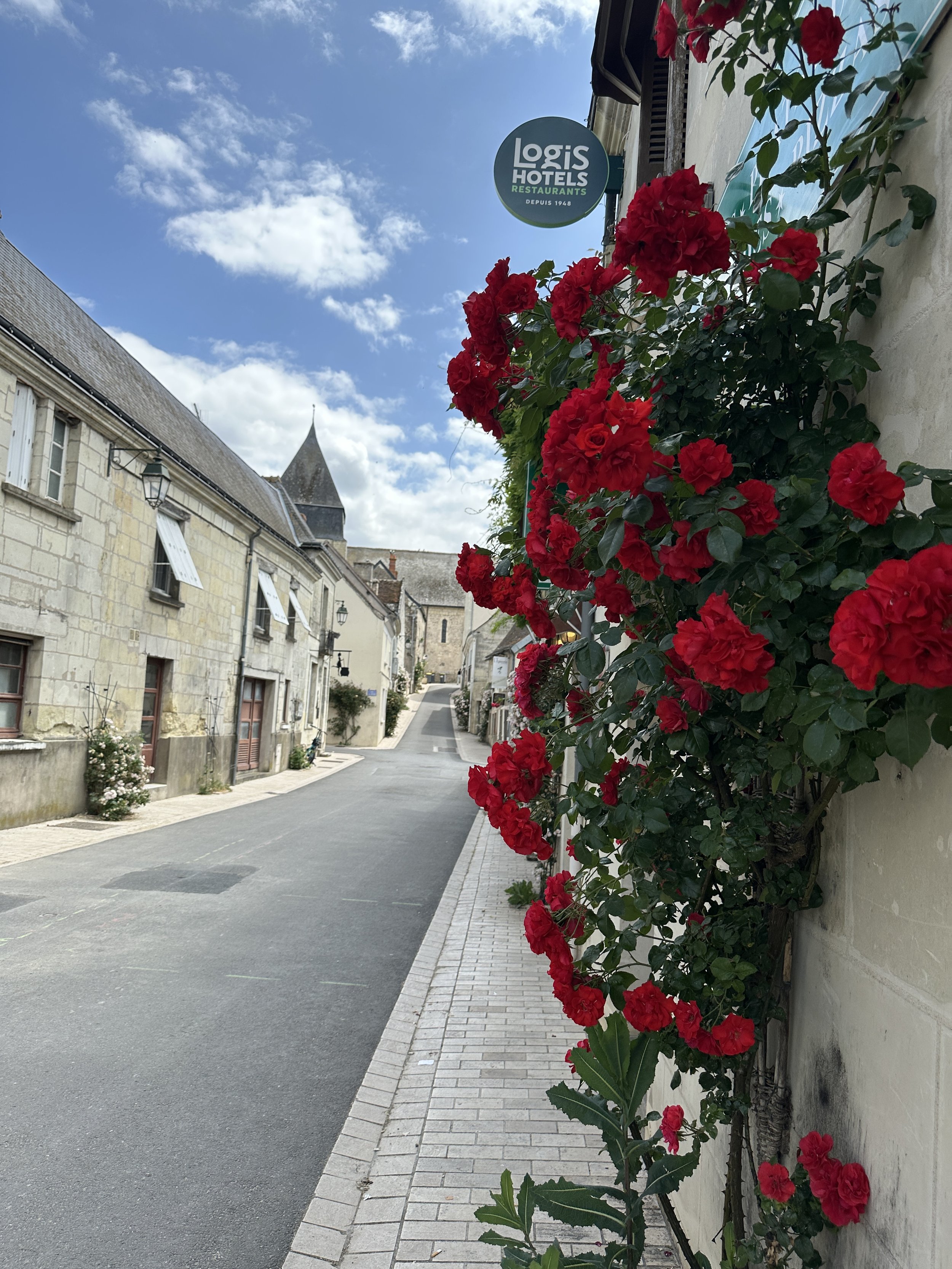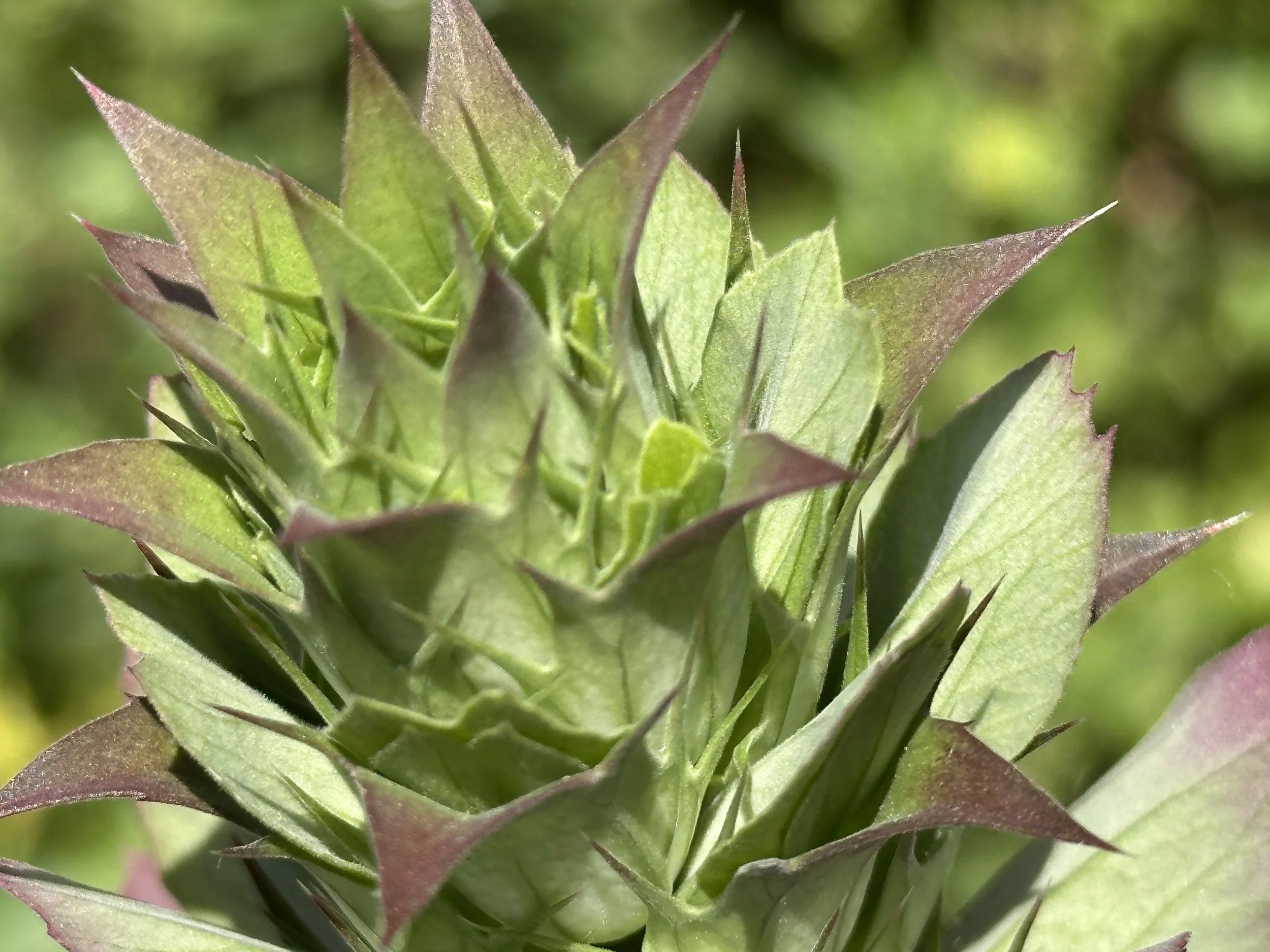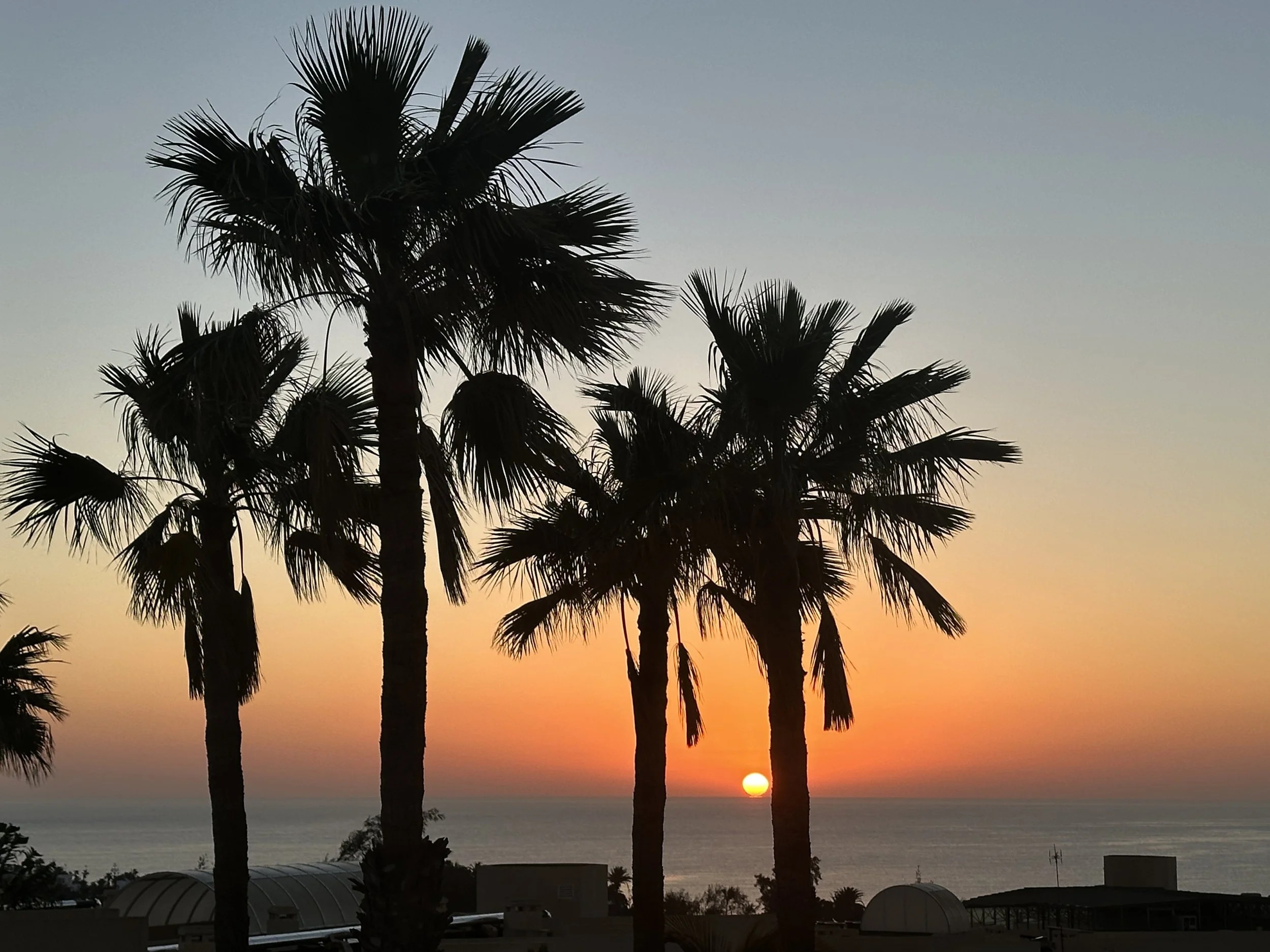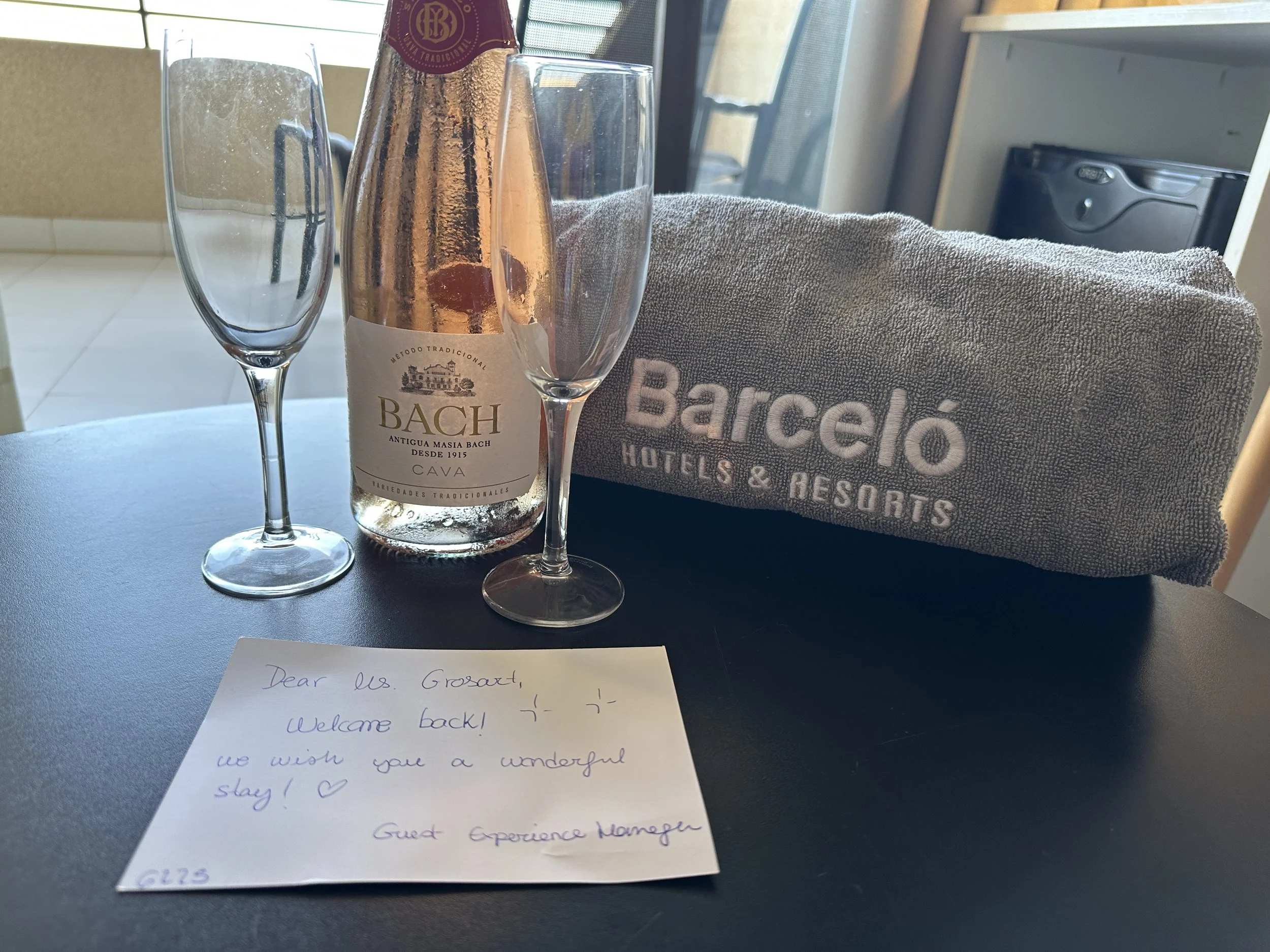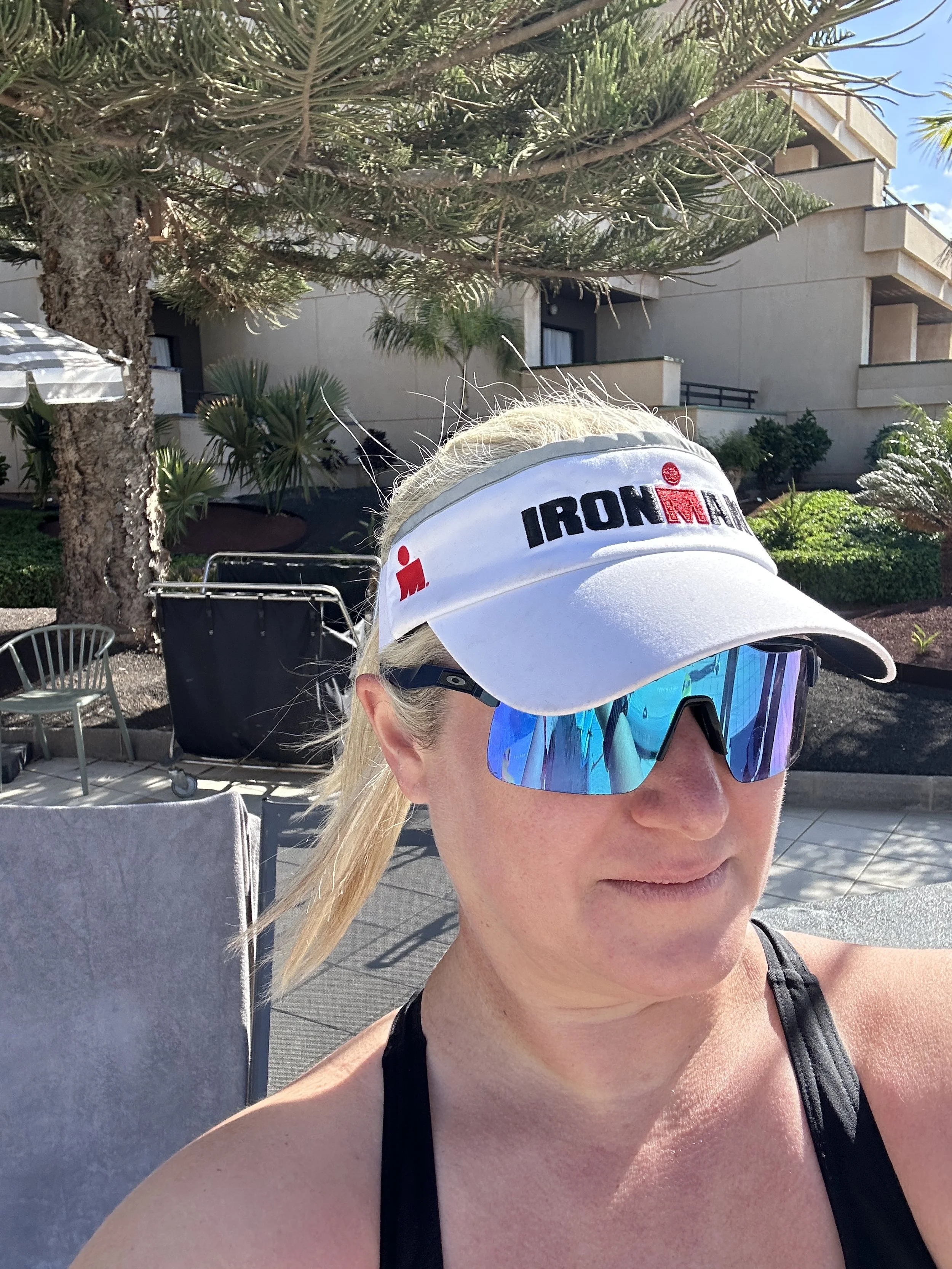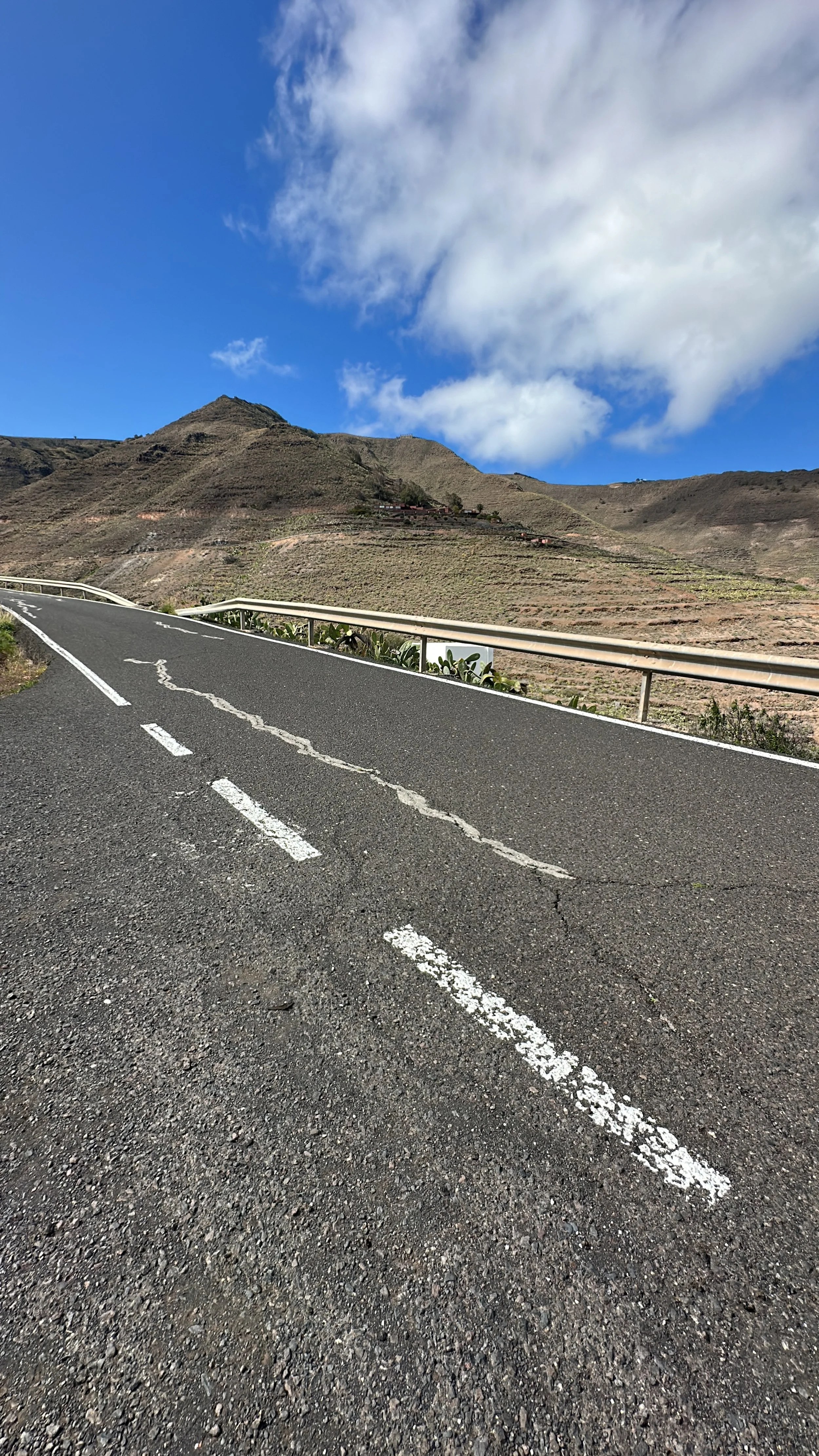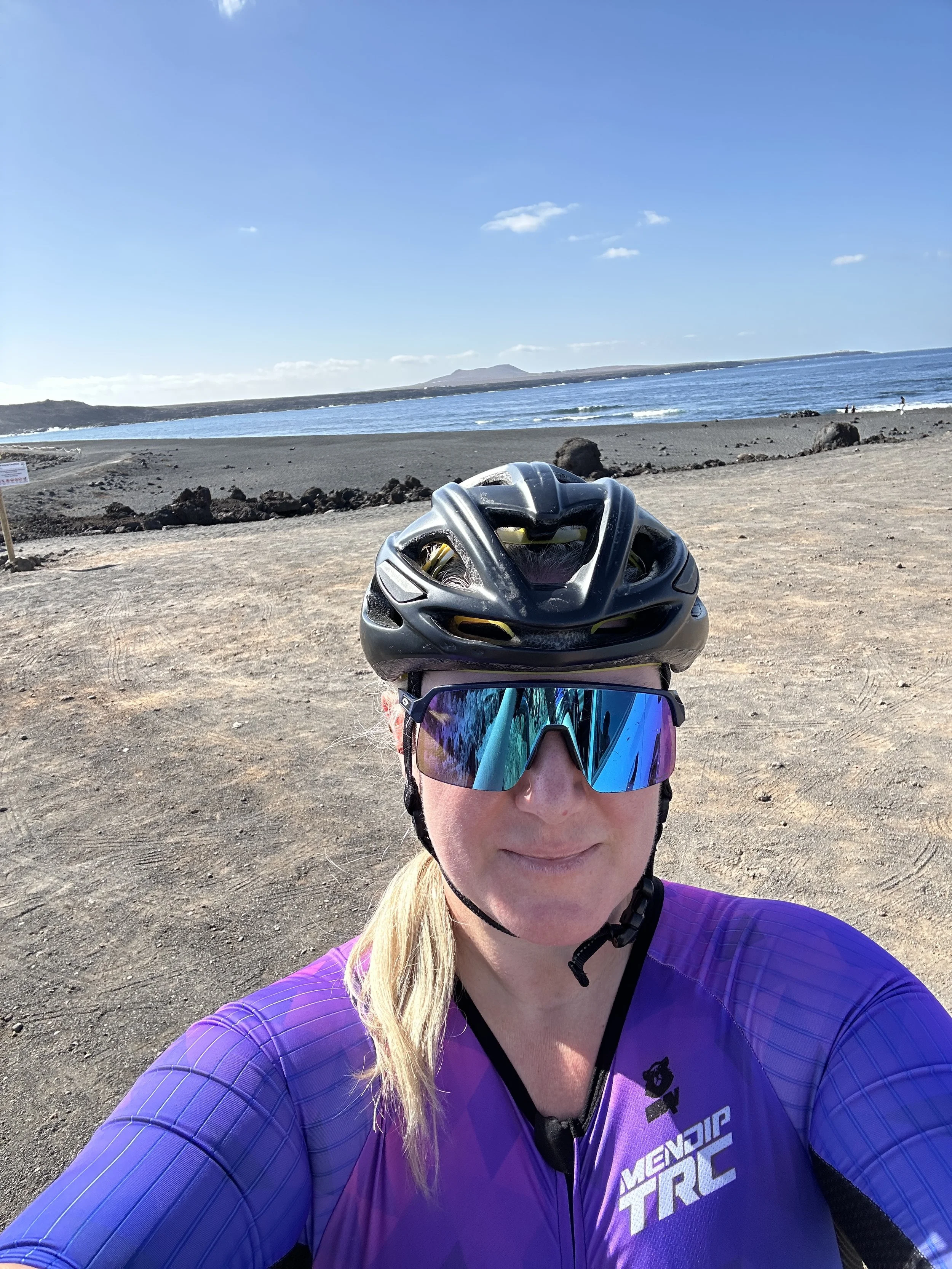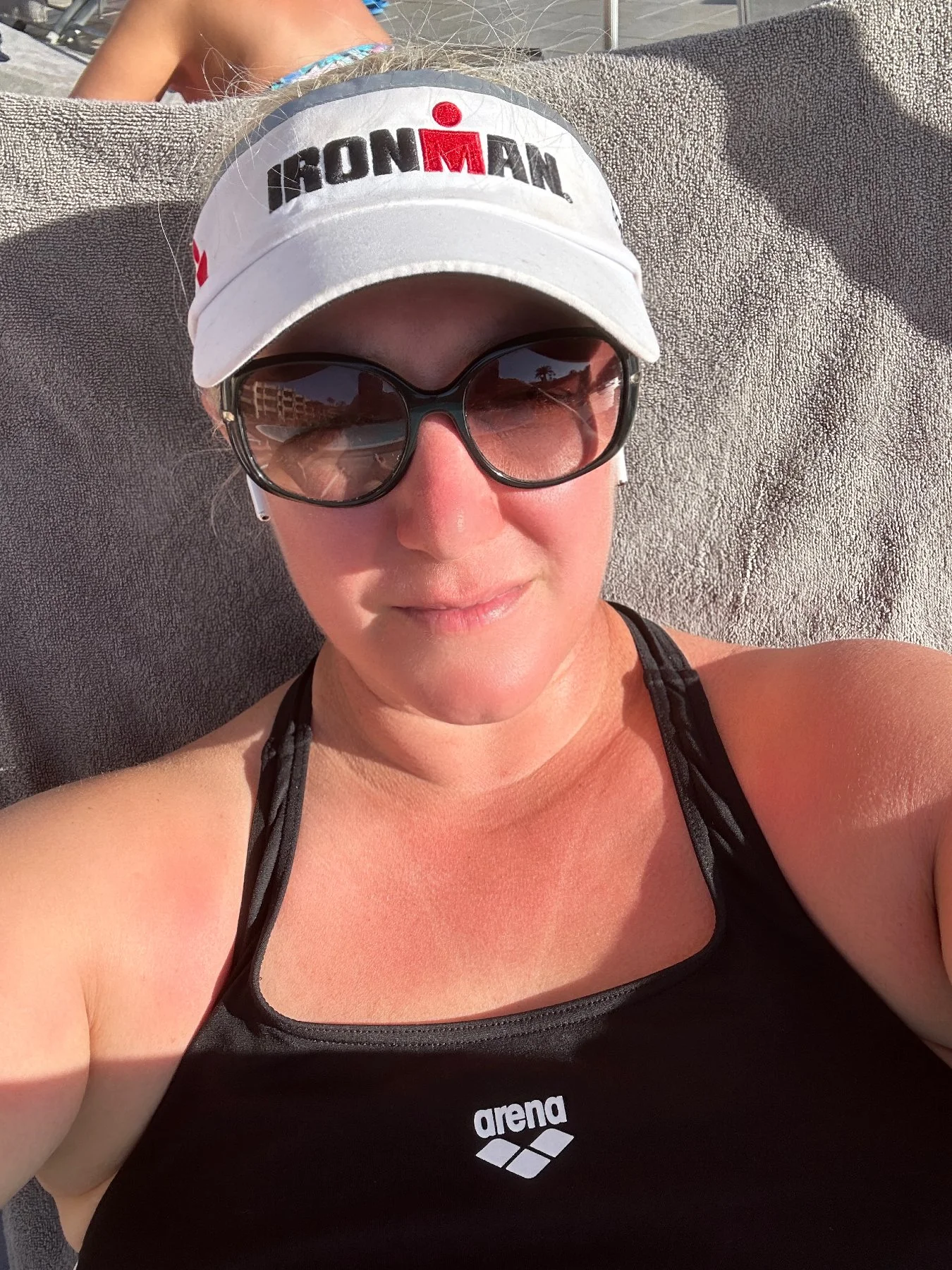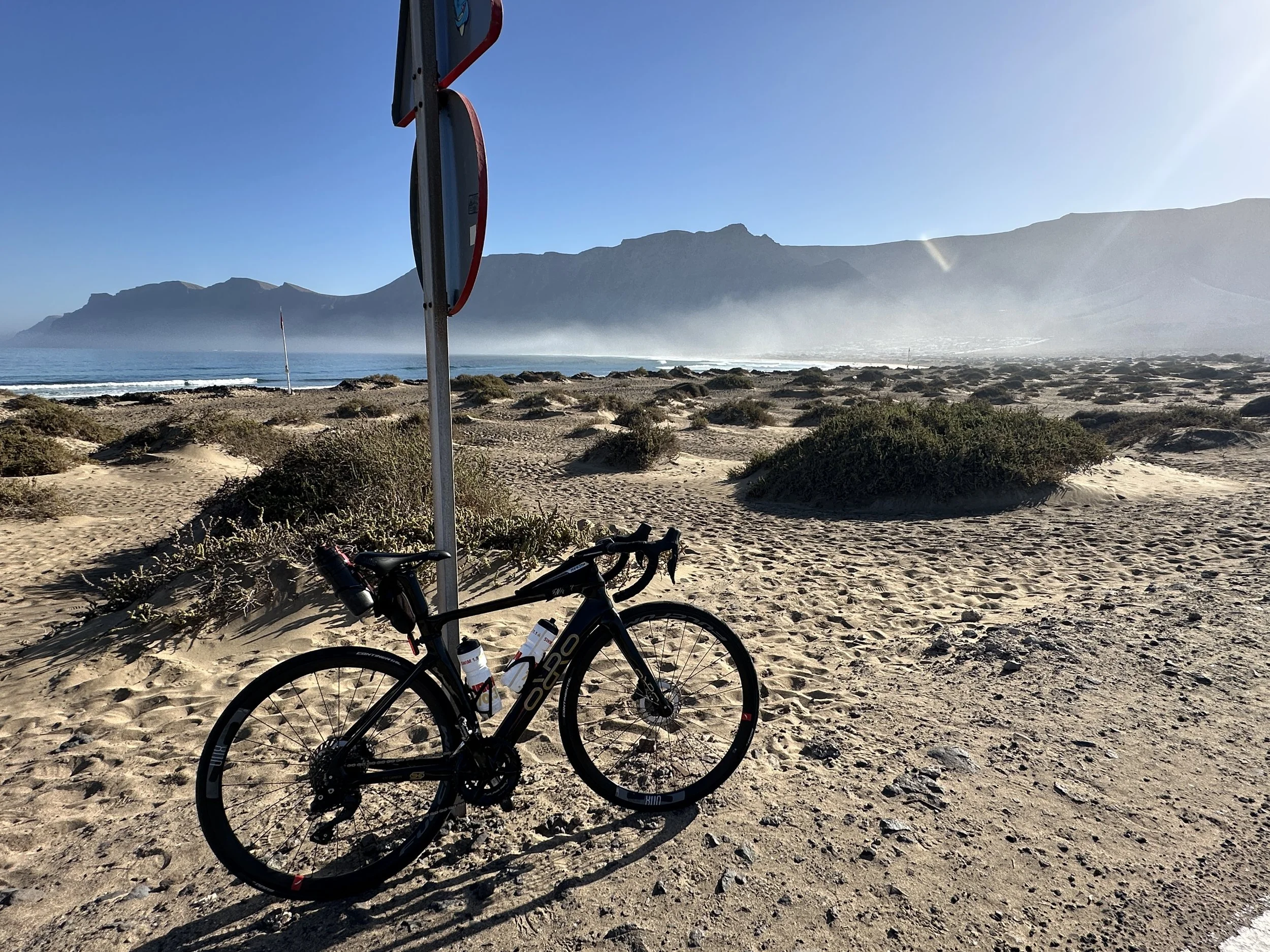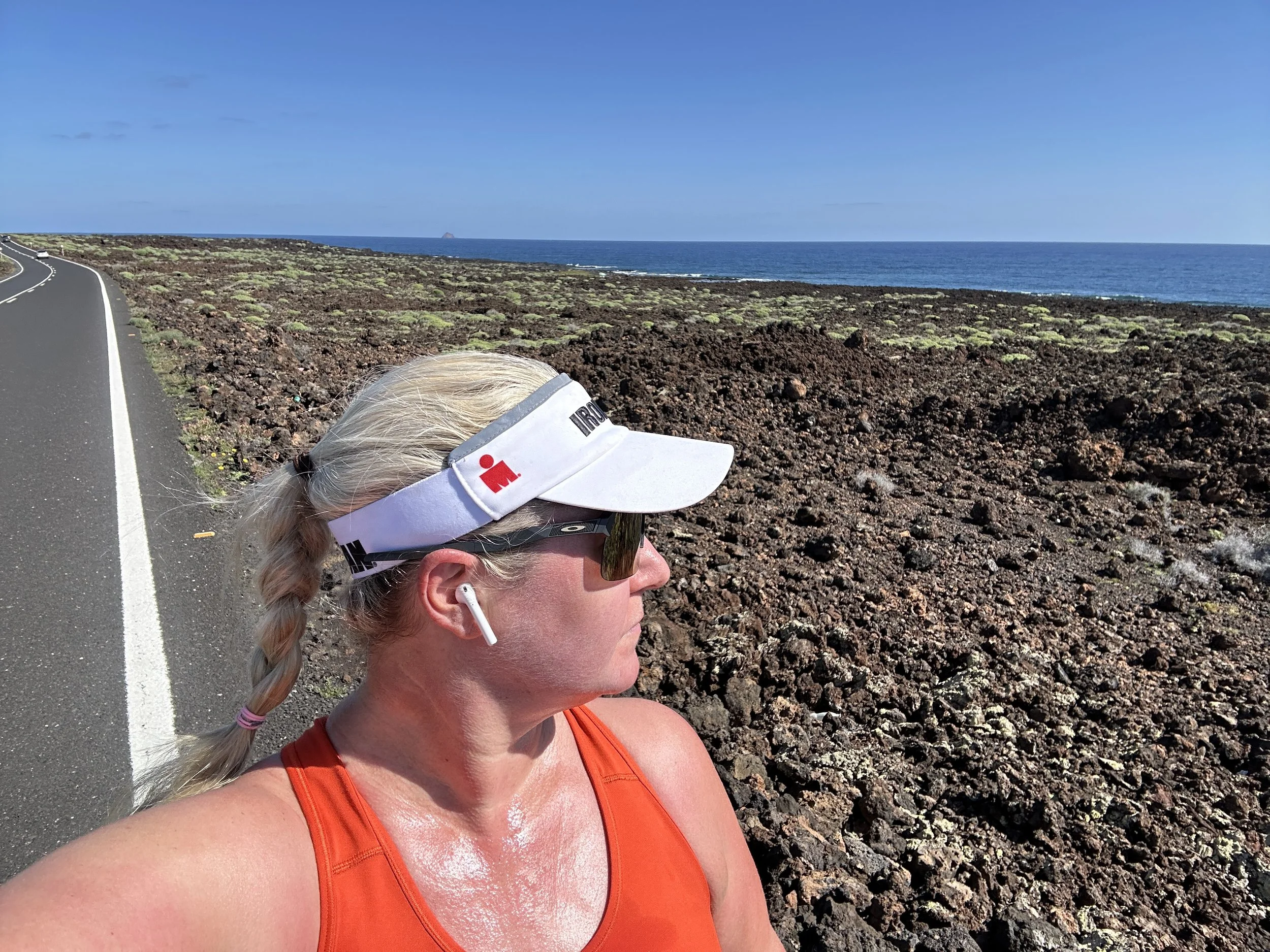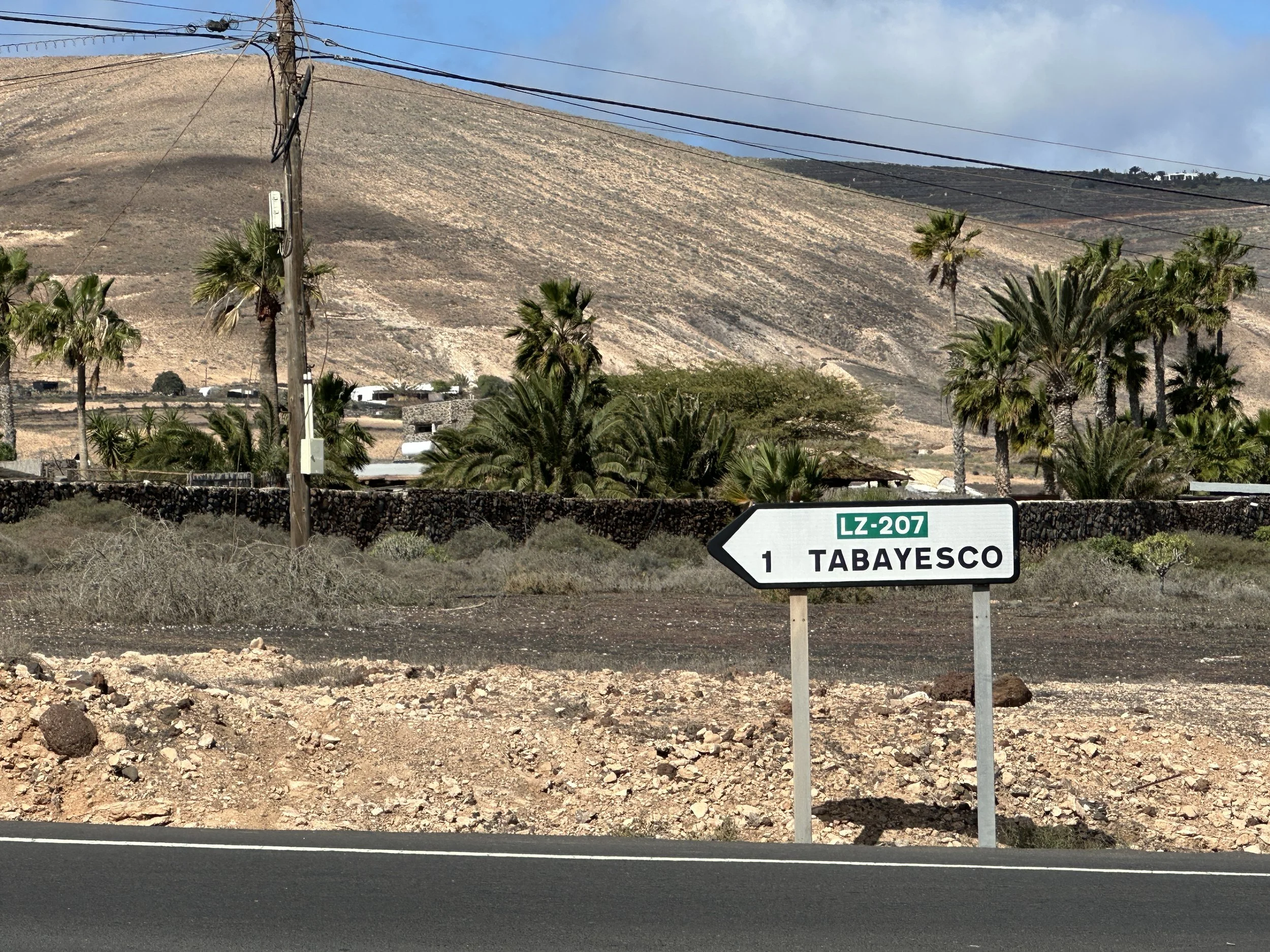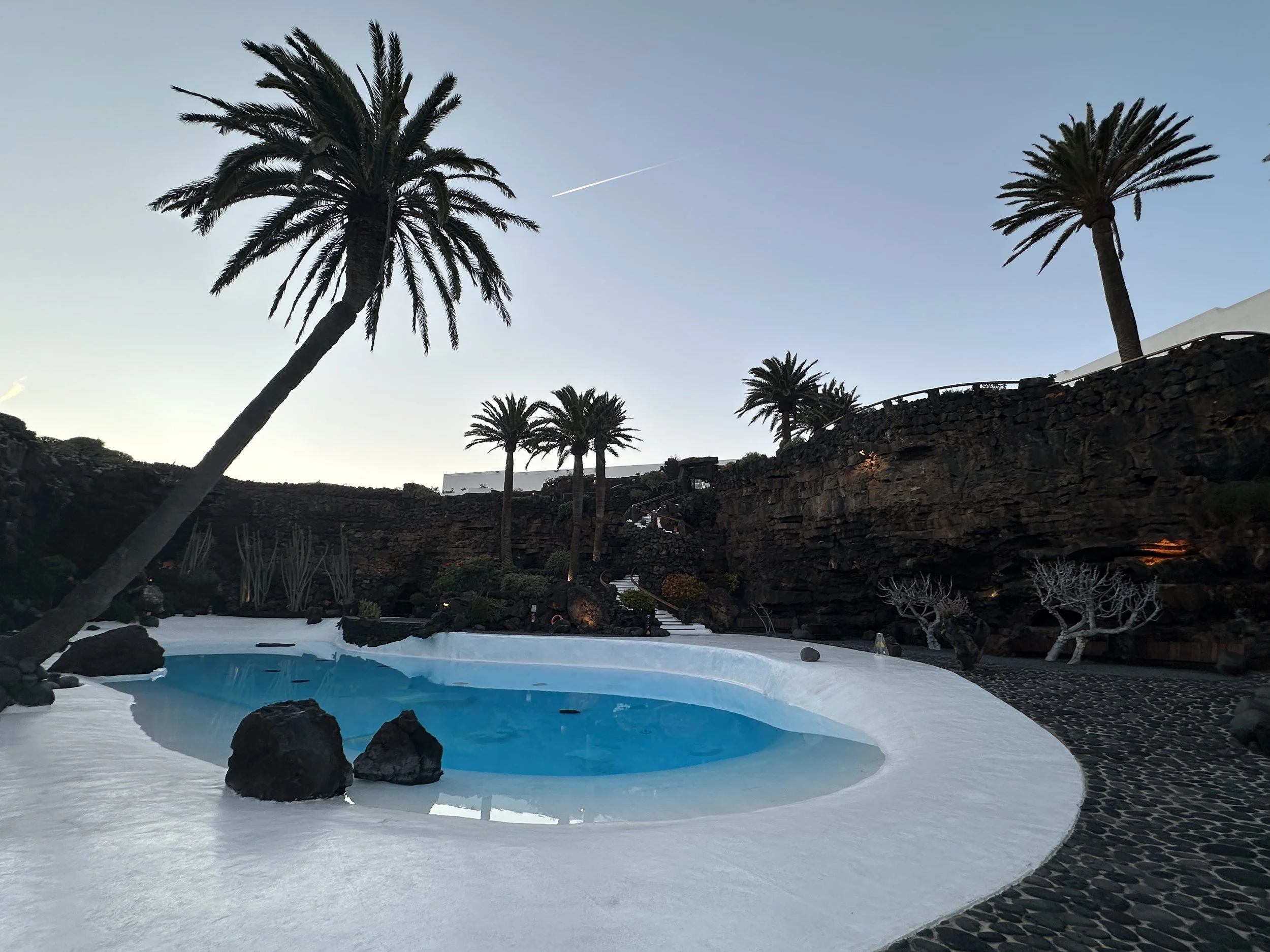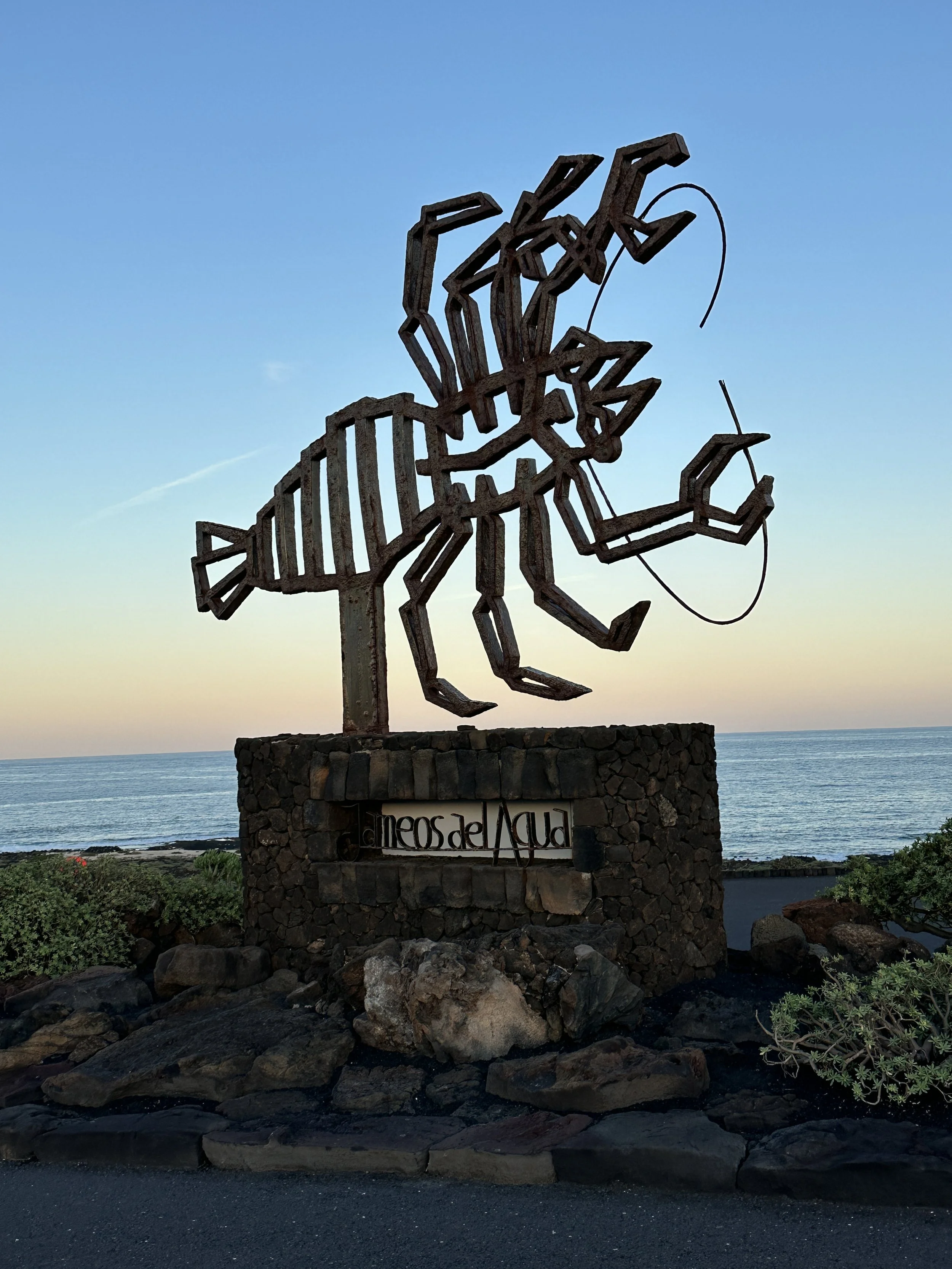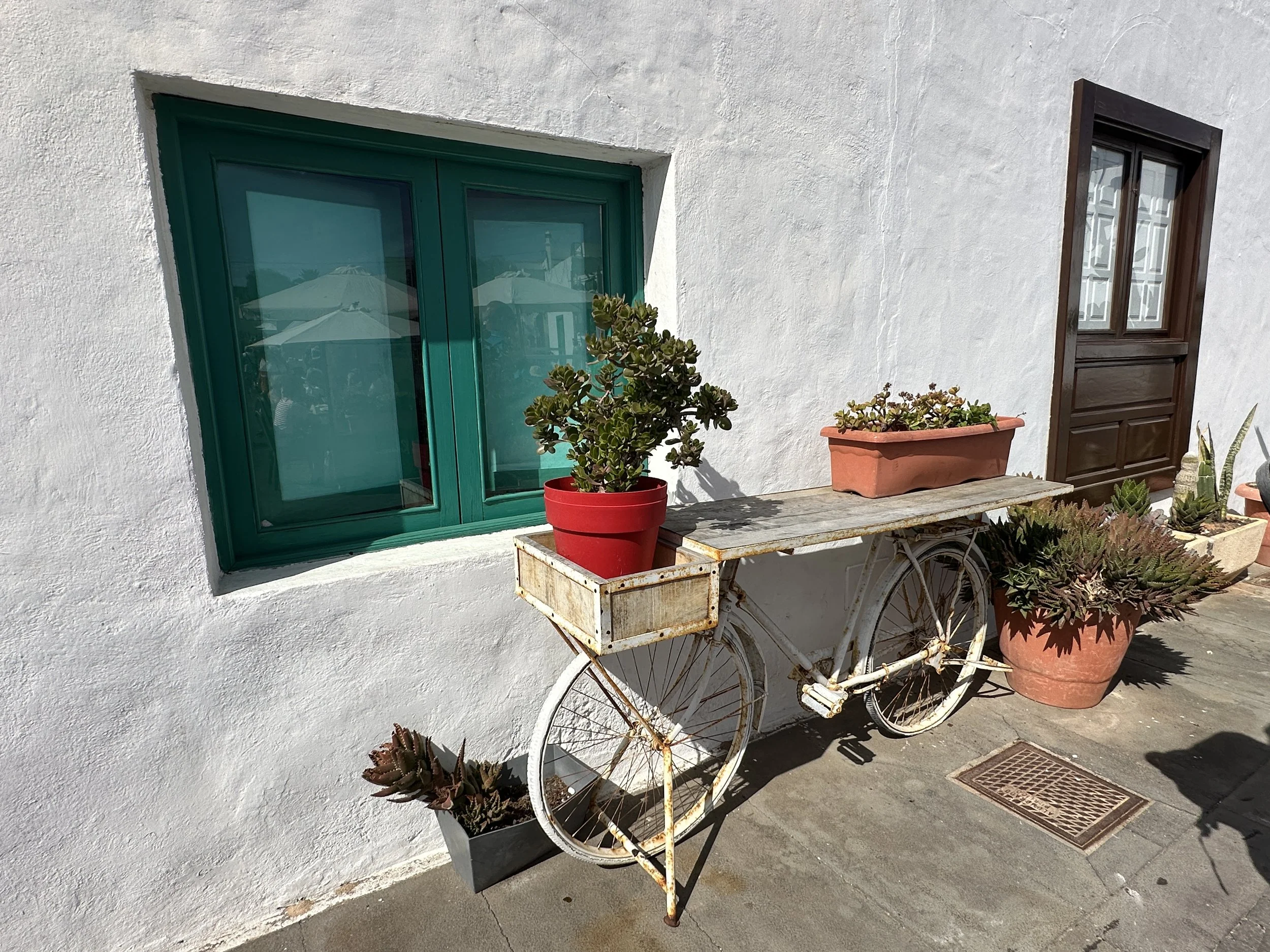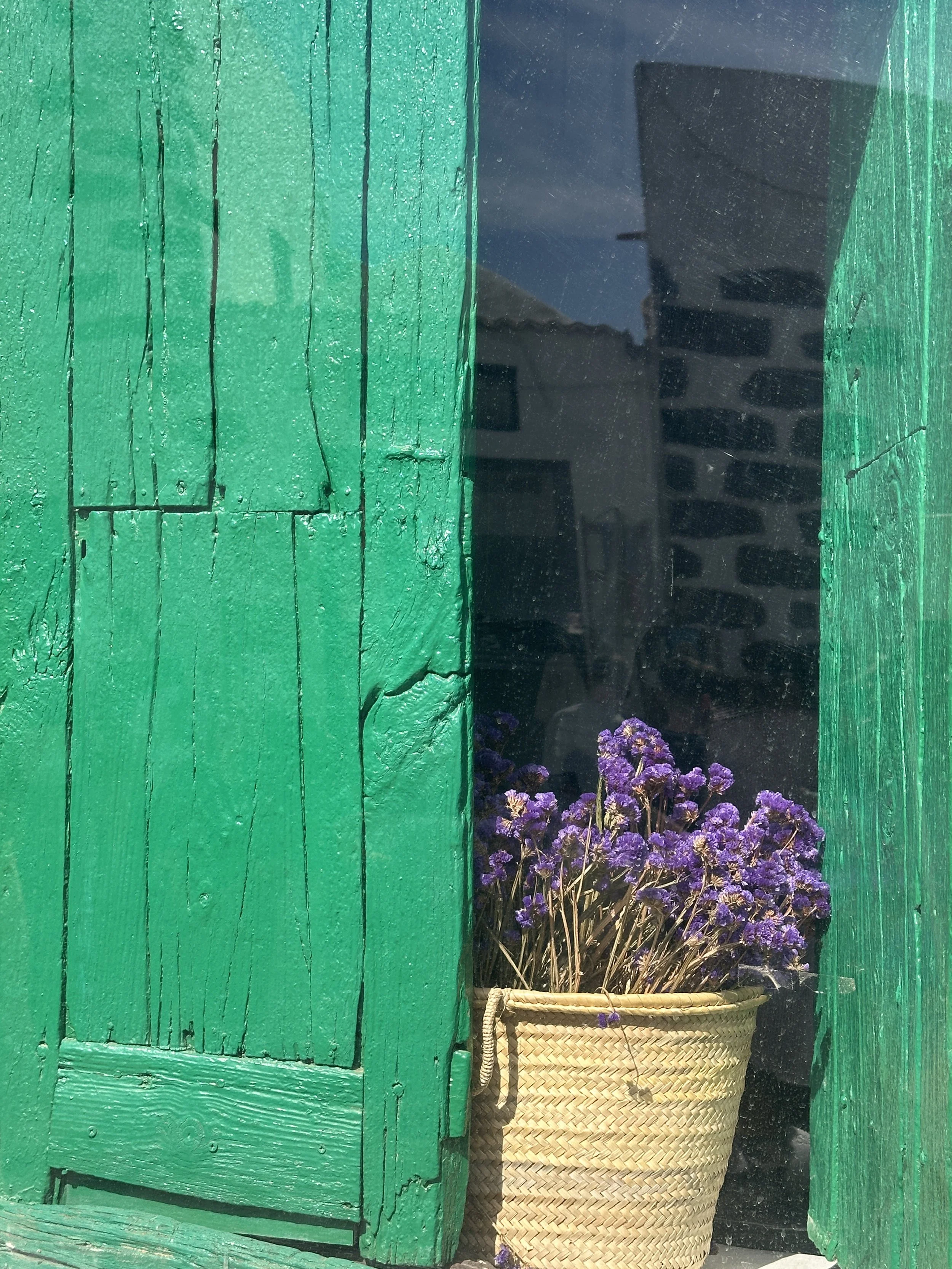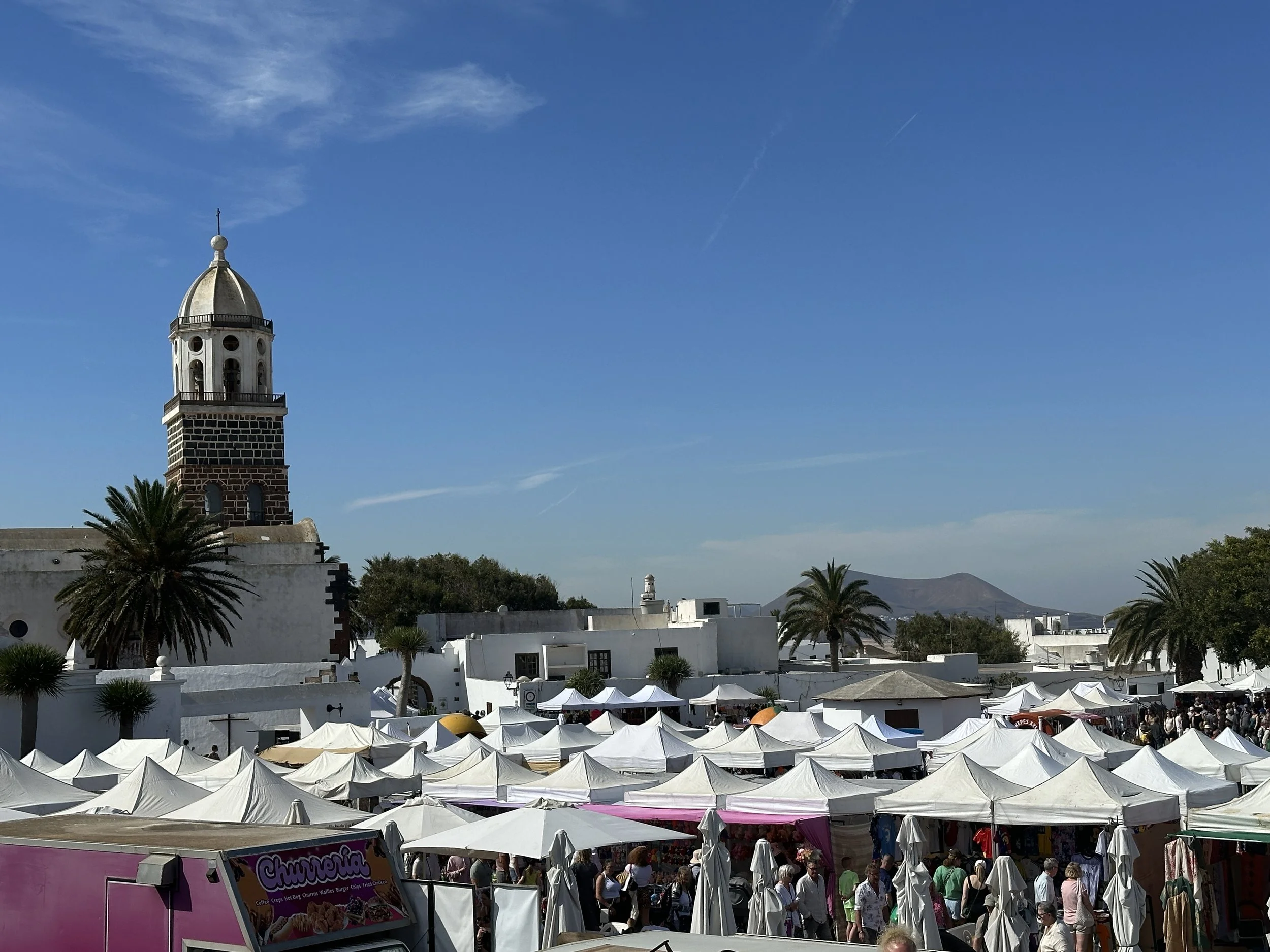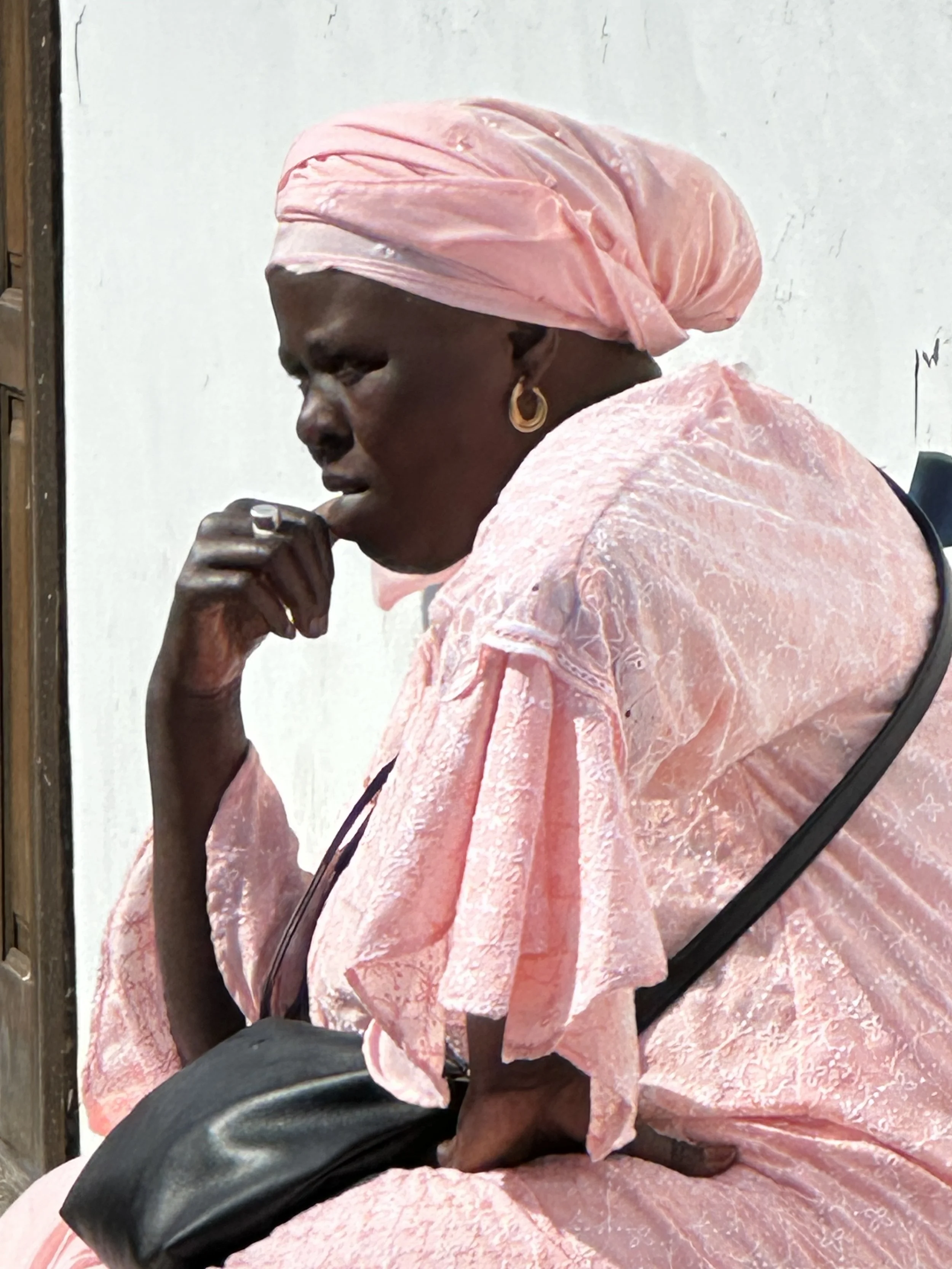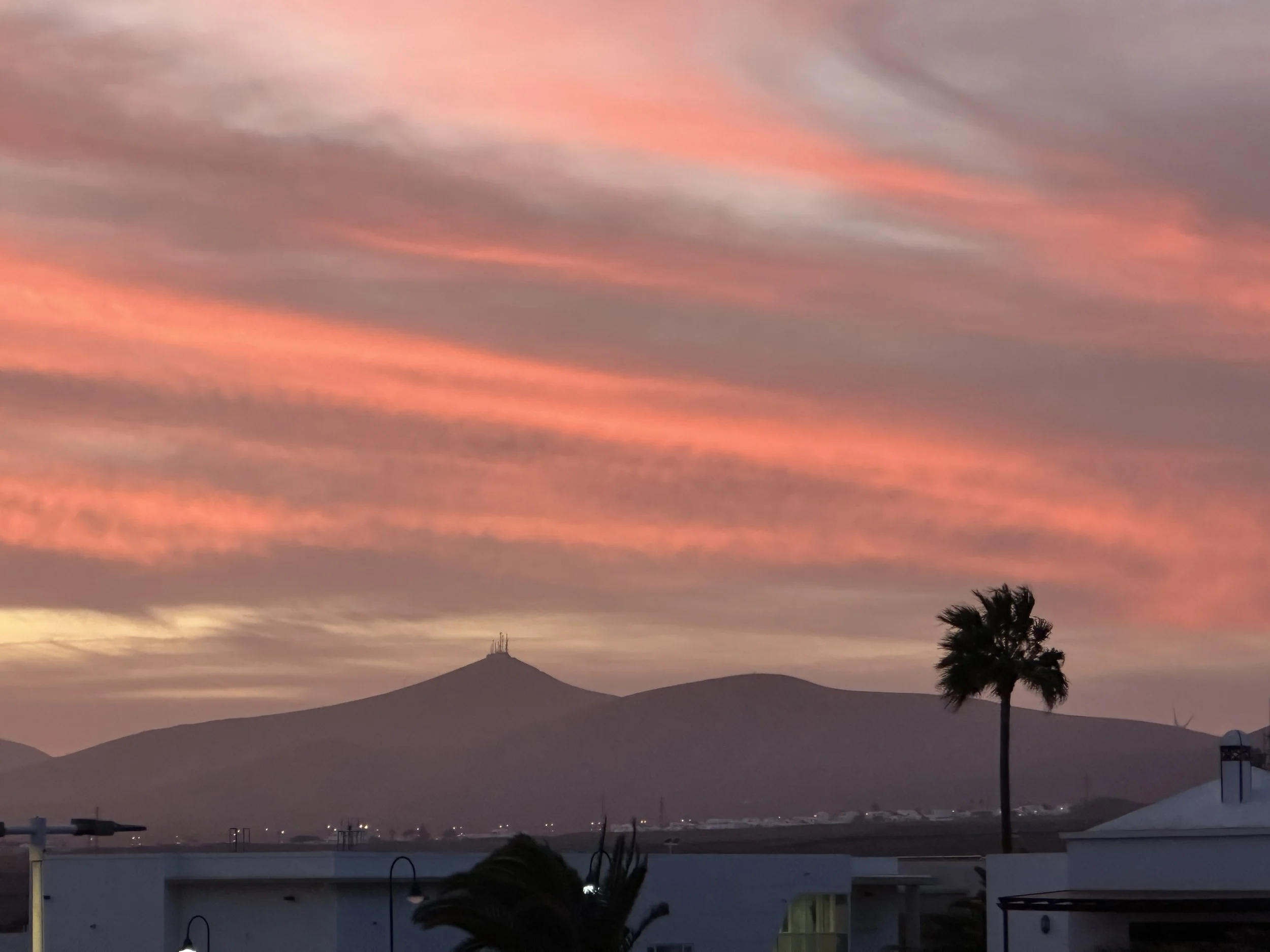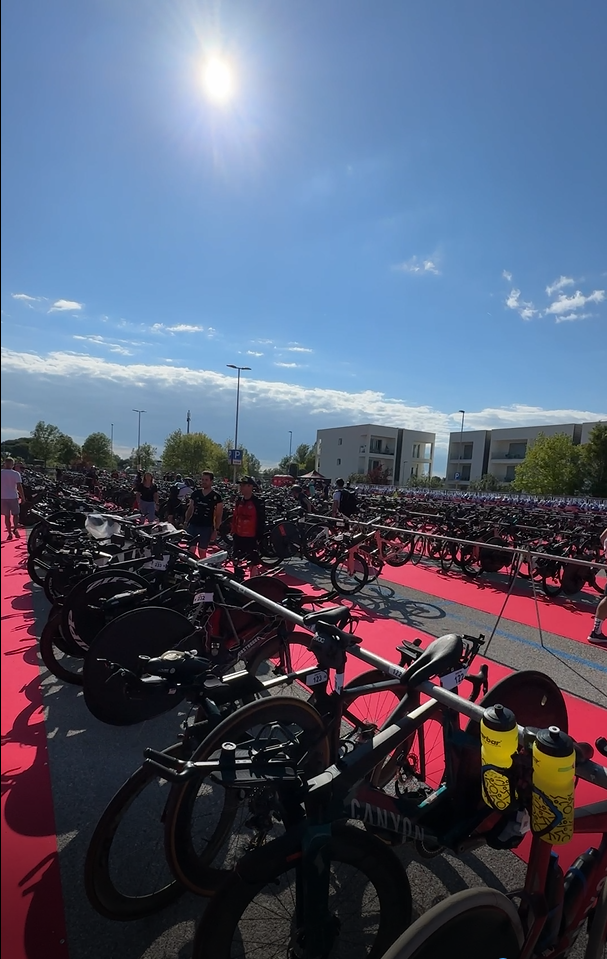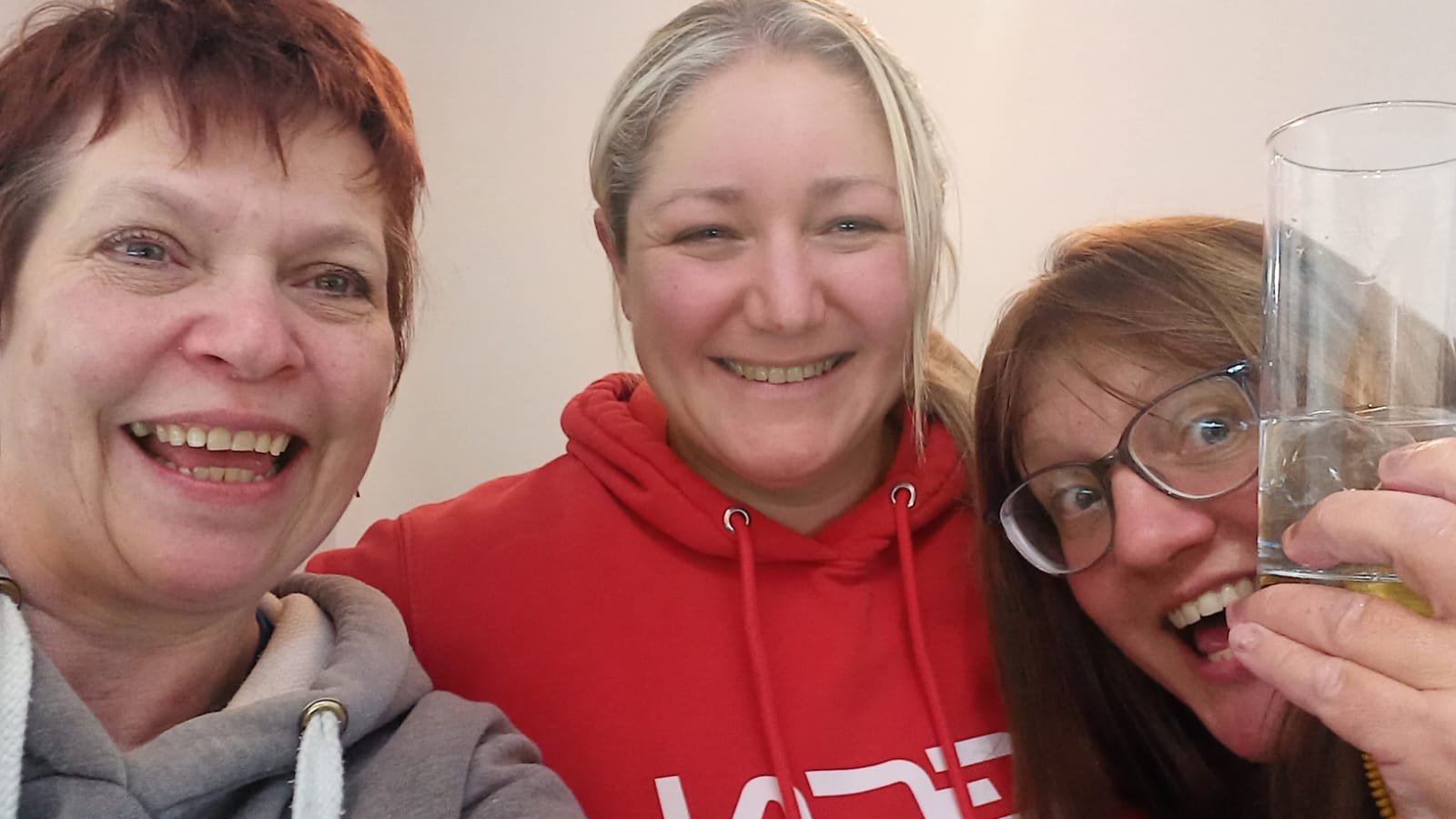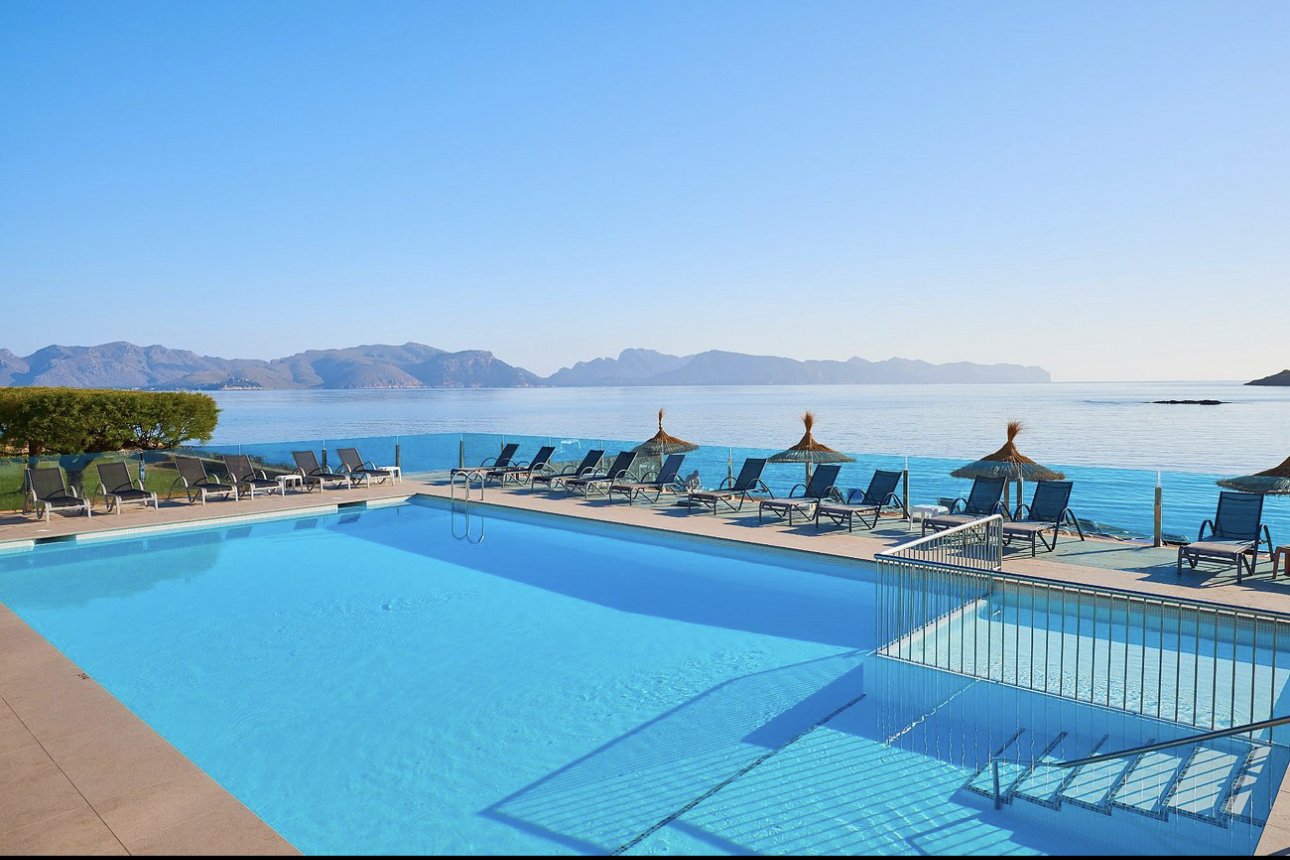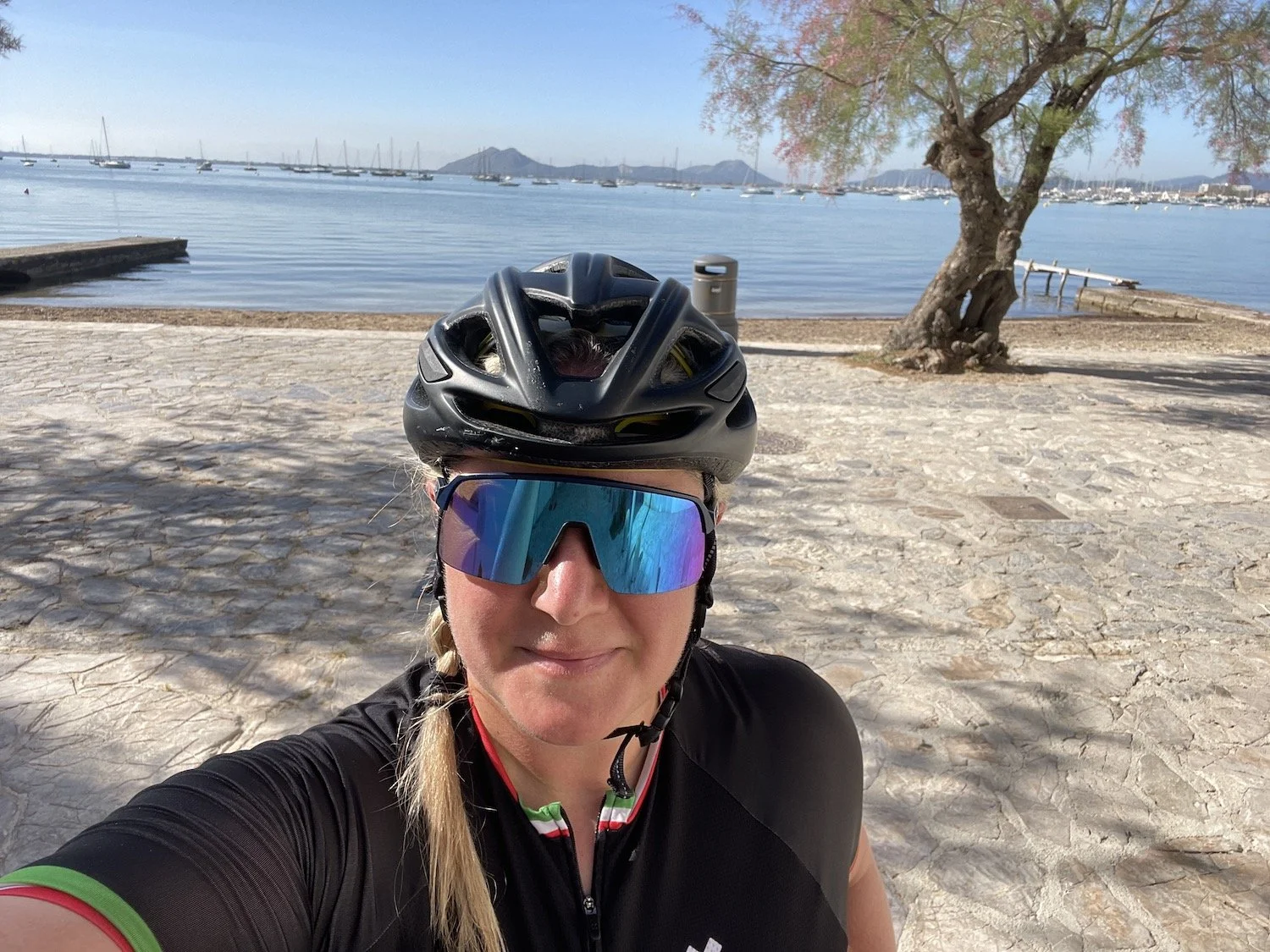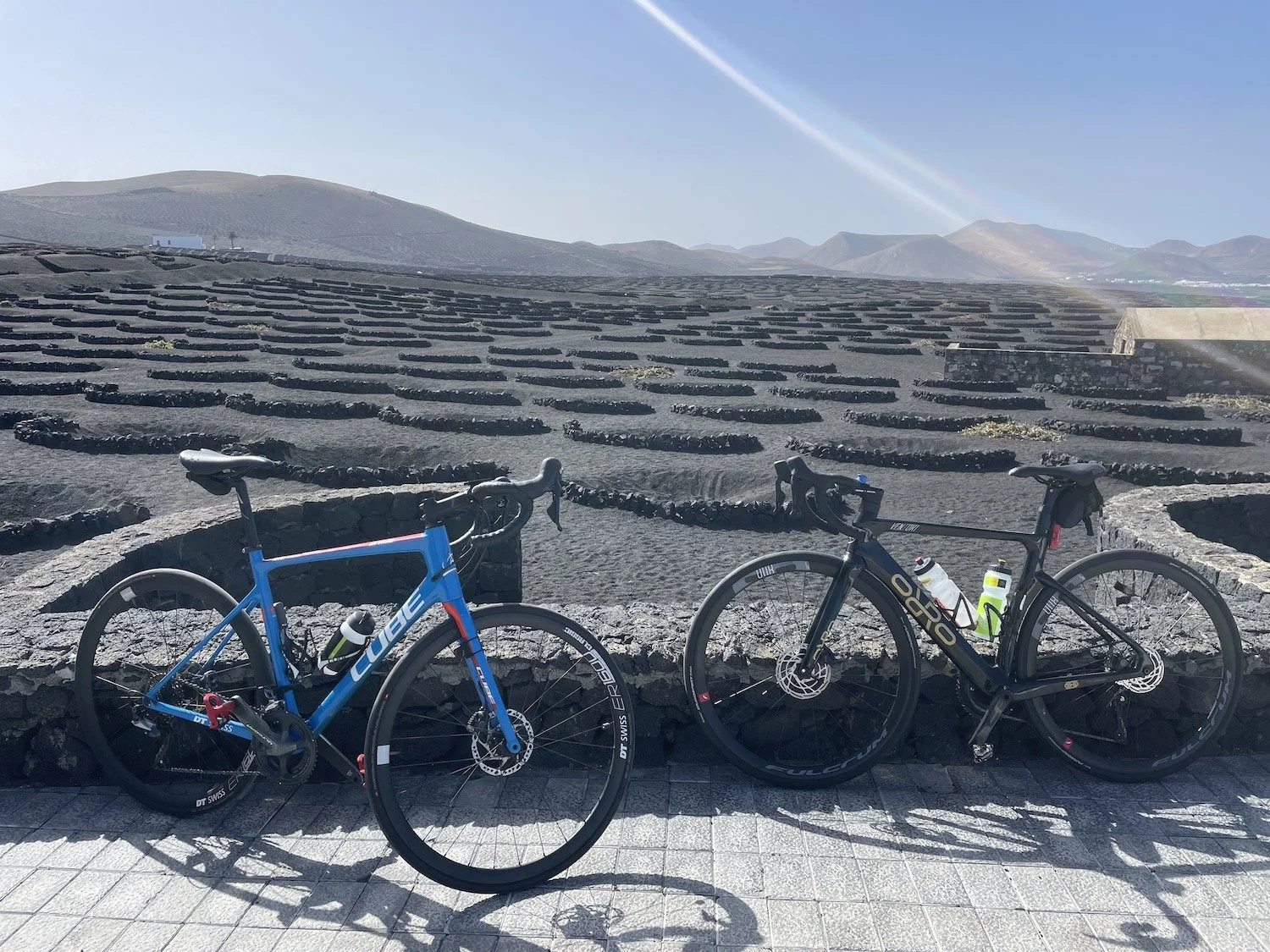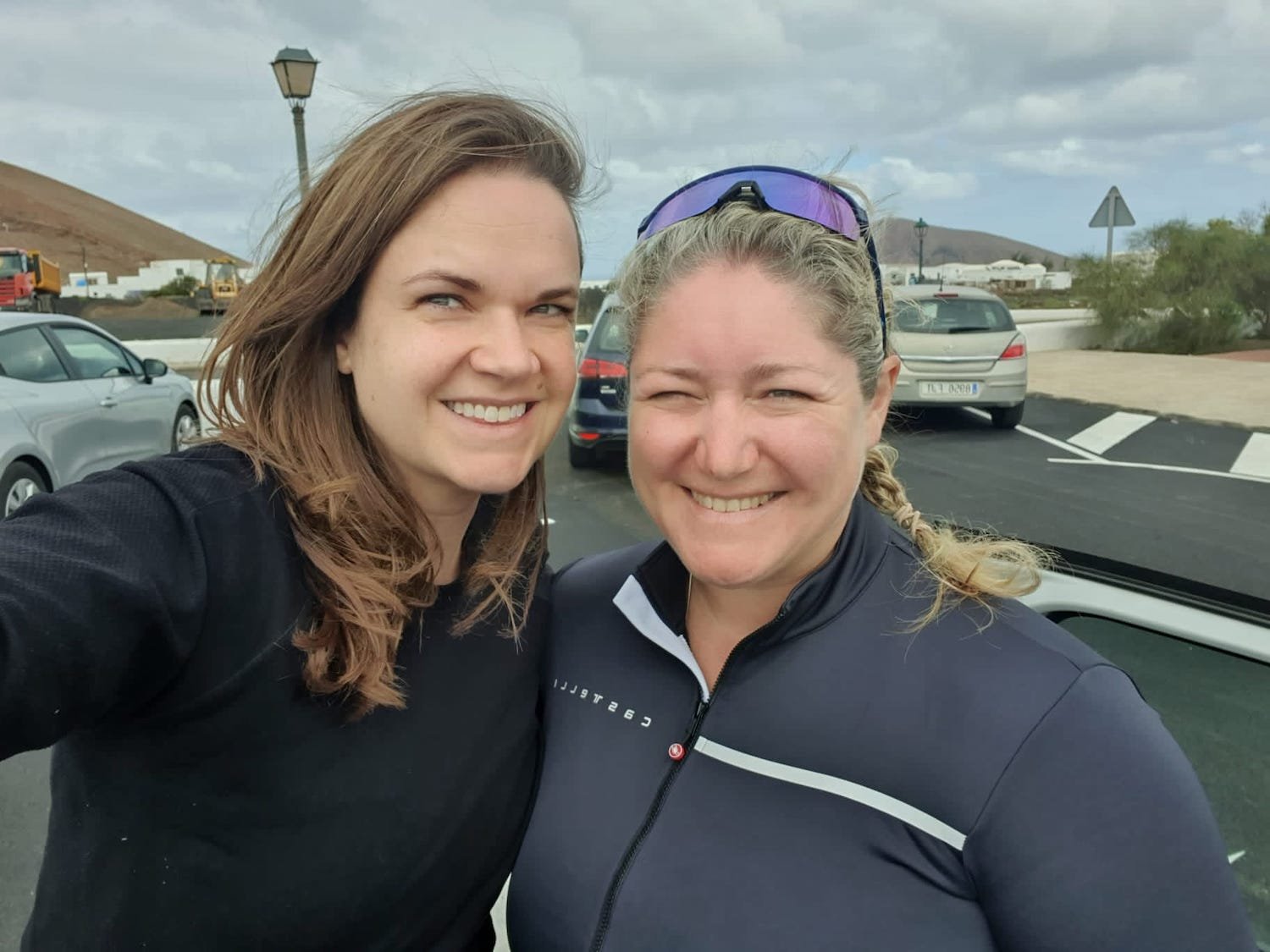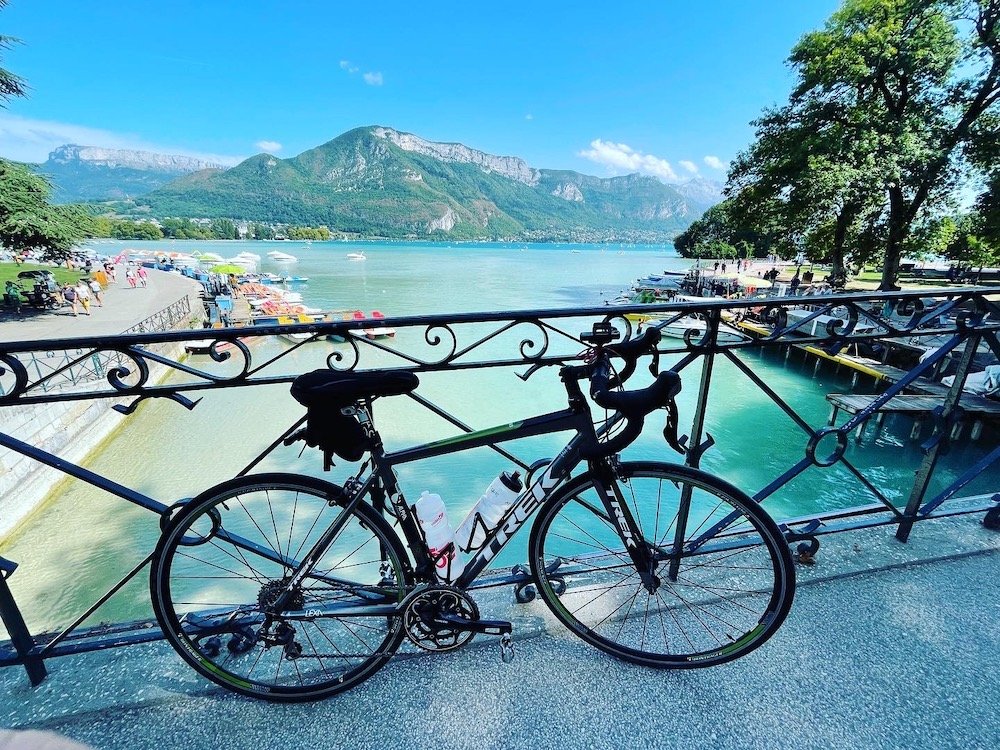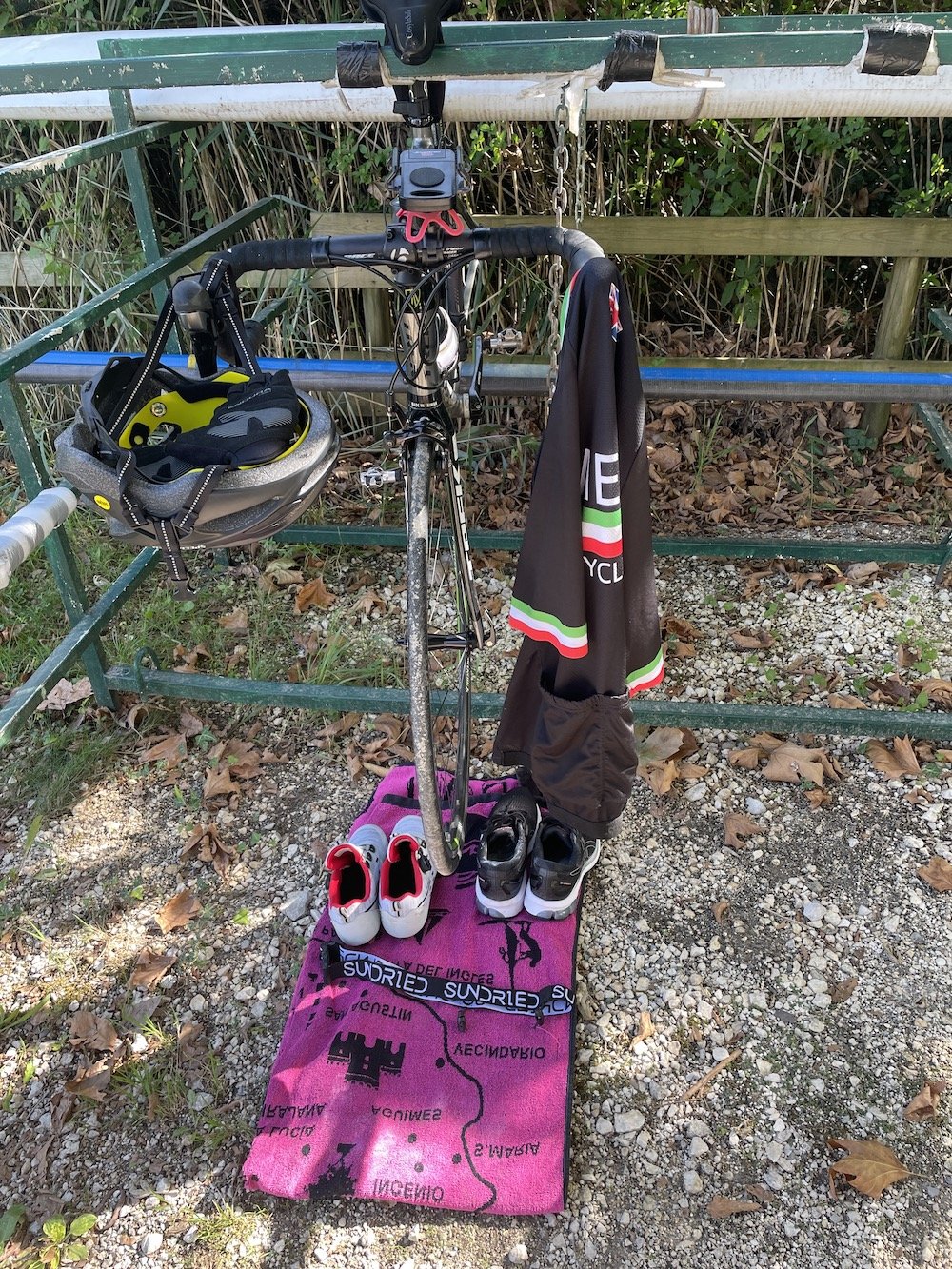The overpriced brick session.
Trialling my new Huub wetsuit. Waste of time that was!
I was in two minds whether to even bother writing about this one.
I mean, it was a complete farce, even though there was some level of achievement involved.
I had booked Weymouth Ironman 70.3 (70 miles across 3 different disciplines – a half Ironman distance triathlon) in case, for any reason, I got sick or couldn’t do Tours in France.
It was because of this entry that I tried to get familiar with the Weymouth 90km long bike course, which had a punchy hill about 70% of the way through.
I never made it. I hit mud on the side of the road at about 40km, in December 2024 and crashed. It resulted in a broken rib, torn rotator cuff and frozen shoulder.
I had spent the summer, post MRI scan, trying to line up surgery to have it fixed. The NHS couldn’t be relied upon not to cancel last minute (costing me weeks of salary as I’d have to take time off working at sea and you can’t just take a day here or there – it is at least 2 weeks as per our crew changes, which equated to a month’s salary). The NHS would never compensate me for lost earnings so that was off the table.
I tried to go private in a local hospital and got as far as pre-op assessment when I was informed by email that the orthopaedic surgeon had “left the business with immediate effect”. I don’t know what he did but he left me and many others fairly and squarely in the lurch.
My hunch to just go abroad seemed to be correct. So, I re-engaged with Operations Abroad Worldwide who arranged surgery and a 3-night stay in Denmark for me.
The service was absolutely superb, cheaper than in the UK and most importantly, I could choose the date so I could limit the financial damage and time off work, missing just one trip if recovery went as planned.
I also wanted to time it around the Weymouth Ironman. I had paid for it after all and my running was improving, despite my swimming still being poor due to a dodgy arm. To compensate, I treated myself to a beautiful new (but very pricey) Huub wetsuit as my other one was now too baggy and causing drag. I needed all the help I could get.
I headed down to Weymouth and two old ambulance work friends came along to offer me support, which is the first time I’d ever had anyone show up at any of my races.
I arrived on site near the seafront to register for the race and spent quite a lot of time wandering round and round looking for the athlete village, where there is normally lots of cool stuff going on. It turned out there was none. Just a miserable marquee, one food stall and a shop full of Ironman merchandise. I’d seen more of an impressive set up at a village fete or even a school sports day. It was very disappointing. Luckily, thanks to the race Facebook page, I managed to find someone to put some battle braids in my hair and I was very grateful to Amy, a complete stranger, for this.
I had a practise swim in the sea. It was lumpy for sure and would slow everyone down, but not unsafe in any way and not undoable.
The swim course buoys were not yet out and the swim entry fencing was still dumped on the floor. I was sure they would fix it the next day.
Saturday came and went, the swim buoys were out, but no way was the course 1900m long. It looked to me like it had been shortened. But there was no notification from Ironman.
The forecast was set to improve on the Sunday of the race with calm seas and no wind until at least 10am, long after the swimmers were out of the water.
I kept an eye on Windy.com, which we use offshore and the forecast was looking good for the swim.
We all went for pizza on Portland and met up with my good friend Charlotte who lives there. It was a jovial evening and I was super excited about the race and happily stuffing my face with pizza when…
The message that shocked everyone.
What fresh hell??!!!
I checked my emails immediately and to my horror, it was true. But the forecast was looking absolutely fine and only the bike and the run might be a bit wet and windy but for gods sake…this is an IRONMAN….if you’re not hard enough…
I was incensed with fury, disappointment and disbelief.
All that time, all that money, all that training, suffering, struggling through an injury, a crash as a direct result of entering this race – and it was now going to be a bullshit bike-run time trial.
No ACDC on the beach, no clapping of thousands of people in unison….
The excuse was the weather but that was clearly utter nonsense.
The Sunday morning alarm went off at 04:55.
As predicted by the WEATHER FORECAST there wasn’t a breath of wind and the sea state was like glass.
Sea state on race morning. Weymouth Bay.
Athletes took to the internet to show their displeasure…
Some people simply collected their bikes and went home. I am many things, but I am not a quitter, so this was never on the cards for me.
I would do this, but I was not happy about it.
My coach gave me sensible ‘nothing you can do about it, so get on with it’ vibes.
Luckily, I had a low number so started within the first few bike waves. We set off only seconds apart and were funnelled into a road that was only half closed. Naturally riders were bunched up and immediately got a wagging finger from a marshal on a motorbike for drafting!
I mean seriously!! Fuck off already!
We set off up the first climb which strung riders out a bit and I settled down, trying to keep a rhythm and chucking gels down my neck so I had enough fuel on board to get the half marathon done afterwards.
The bike went well, no crashes for me and we avoided the worst of the weather. I was pleased for getting up the super steep hill and had kept enough in the bank that it didn’t hurt. I was surprised to see blokes getting off bikes and walking up it.
I rolled into transition after 90km and all my friends and my neighbour who had come to see me missed me completely as the Ironman tracker app was about 10 minutes inaccurate.
As I stepped off the bike, both of my inner thighs cramped just above the knee. Great.
I racked my bike, changed into trainers and a dry running top and set off on the soggy run. Within 2 kilometres, my thighs cramped severely. I necked some gels, grabbed electrolytes at every aid station and eventually it subsided so long as I kept moving after a stop for a good stretch.
The rain was relentless and I swung along in my 5 minutes on/1 minute off strategy which worked really well. Not just for me either, but a lady came alongside me and said she’d been using me as a pacer for ages! Well that never happened before!
It was a two-lap course taking in Weymouth seafront which frankly had never looked so revolting. The crowds were seriously hard core to stand out in that foul weather and I felt awful for my friends who were soaked to the skin waiting for their slow mate to crawl round the course.
I met up with a lady towards the end of the first lap and we joined forces and got into a system, her joining in with my 5 on 1 off. The result was that she got a half marathon personal best – and so did I. I dropped away from her as we approached the finish line so that she could have her moment and frankly, dreadful steamy ‘professional’ photos.
It was my best triathlon running performance to date, so I guess I had achieved something. It was also my 2nd fastest 90km on a bike and considering it was officially a rolling course and not a flat one, that counted as a PB too.
The finishers tent was shit.
We were offered a slice of soggy pizza, a cup-a-soup (WTF???) and half a plastic glass of beer.
For my ~£500 entry fee I was feeling mighty pissed off. Even the medal was small!
I got the feeling that this was a half-arsed event and because 900 entrants were first timers, they didn’t know any different. France and Italy were a world apart from this shit show.
I was given a foil banket (I can tell you as a Paramedic that these are crap) and limped out to meet my friends who were drowned to the core.
I had absolutely no motivation to stay any longer and Lisa and Jo helped me and my kit back to the car which was a good kilometre away.
The first message from my coach, Russel Carter (who had been tracking me all day) was “So how was the brick session?”
He got it – and summed it up in one sentence. There was nothing about the whole experience that made me feel like I’d just done an Ironman – not even half of one!
The Ironman brand has always motivated me and my experiences of races abroad had been superb. But as usual, I had been let down by my own damn country.
Athletes took to the internet to express their anger and disappointment. There were also plenty of annoying people trying to defend the decision. The fact is, Ironman have form for making bad decisions. A bad decision the other way resulted in the deaths (indirectly) of two athletes in Ireland. So, you could understand the caution. But that is no excuse for the inability to read a weather forecast. The call could easily have been made on the morning of the race and we would have just stuffed our wetsuits into bags and lined up with our bikes. Many athletes got up early and swam the course anyway, just to prove a point.
The fact that the swim course had never been set up, tells me this decision was made several days earlier based on a moving forecast and they didn’t make a call until everyone had spent extortionate amounts of money (me included) in the Ironman merch store.
Then there were rumours of pollution in the water but again, these were unfounded and never used as an official reason.
I suspect 900 newbies, many of whom admitted online to having never even swum in the sea (how stupid CAN you get?) and a risky forecast was the real reason for the decision but as it was not part of the cancellation policy, they simply went with an old weather forecast.
The bike start was put back an hour, so any notion that it was to improve conditions on the bike was also BS. Many bikes got caught in foul weather far later in the day than they would have, had they swum first.
In my opinion, the solution for Ironman is simple. To enter an Ironman event with a sea swim, athletes must have completed at least one triathlon with a sea swim previously. This could be a sprint, super sprint, Olympic distance, anything. Ideally without drowning or being rescued. Or even ratification from an approved coach.
Patagonman insist on demonstrable capability before allowing entries, so it is not a new idea.
It would also boost support for smaller triathlon events which are currently struggling for entries. To me this is a win-win and something Ironman should be looking at.
Race over with, I took a week to chill out and had a spin down on the watt bike the next day. I was far less broken than in previous races, so my fitness had clearly sky rocketed.
I enjoyed one final weekend with a friend in my sea kayak and catching up with a long-lost family member, before taking a deep breath and flying into Denmark for my shoulder surgery.
Finally – I was going to get this fixed once and for all.
What will 2026 hold? Hint: Roll on Germany…
Lovely Loire
Château d’Ussé, Loire, France
I don’t think I’ve been on the Channel Tunnel for at least 20 years. In fact, I feel quite old as I can remember it being built!
I usually travel to France with a van full of diving cylinders, so the Chunnel has never really been an option for me.
This time though, I was travelling extremely light in comparison.
All I had was my bike, my wetsuit, a few outfits and training kit.
Being a caver, I’d never been to the Loire region of France which is pretty devoid of caves but full to the brim with chateaus. Over 300 in fact.
I was on my way to the first Ironman event that had been run in Tours Metropole. It was also the first Ironman event with an indoor finish line, and the organisers had planned a stunning bike route which took in the incredibly ornate Château d’Ussé, which apparently inspired the story of Sleeping Beauty.
The Loire is easily reached in one go from the UK and I rocked up at my hotel which overlooked the river Loire.
Tours Metropole evening vibe
I always try to stay in comfort for Ironman races as I can usually hardly walk the next day and need some degree of comfort. This was never more important when I went down with covid during and after my race in Venice. The thought of being on a campsite or in my van would have been extremely miserable.
I spent the next few days doing some recce shake down rides and inspecting the stunning Château d’Ussé.
I didn’t risk a pre-race swim in the river, which was actually a tributary to the Loire, as I have quite a delicate stomach and didn’t want to get sick so close to the race. My arm since my bike crash was dodgy anyway, so I saw no value in stressing it before the race. I was already 10 minutes off my 1900m swim time due to my injury, so my aim was to just finish before the cut off and go from there.
The night before, I managed to find a hairdresser to do some battle braids. This was a serious test of my French as nobody in this region seemed to speak any English at all. This was followed by a shopping spree for race snacks in the local supermarket which was probably the most epic French supermarket I have ever seen. There was a cheese aisle about half a kilometre long and a ‘boutique de canard’ which was just as well, as foot and mouth disease on the continent had meant a £5000 fine at the port for anyone found importing meats or cheeses from anything with four legs.
But nobody said anything about wine, duck or coffee - so I filled my trolley.
There was a pizza and pasta place in the same complex and many athletes had the same idea. The place was half full of ironman T-shirts stuffing their faces with as many carbs as possible and steering well clear of alcohol.
The worst part about Triathlons is the early start. They usually kick off at 7am, with transition areas closing at 06:30, so most athletes are up and at it trying to force breakfast and coffee down at 04:30.
I always buy some sort of bagel and juice from the supermarket to eat in the car on the way to the races. Hotels are never guaranteed to do breakfast early. Not that I care, as I struggle to eat anything so early in the morning. Since the age of 14 it was ingrained in my soul that horses got fed first, mucked out first (all 6 of them) and one got ridden on the gallops before anyone even thought about breakfast. My body got used to it, so rolling out of bed and eating straight away is a huge struggle for me.
Even now, at work on my ship, I get up and do an hour’s admin and some yoga first before I set foot in the galley.
I nibbled on some dry bagel and a bit of yoghurt and decided to rely on gels, jelly babies and Nutella biscuits for the race.
The swim start was the usual queue of athletes all wearing the same-coloured swim hats. We chucked our flip flops, car keys (those of us with no supporters) and ‘after race’ bags in huge collection bins to find afterwards.
The professional athletes go off first and the rest of us inched our way down a blue carpet towards the river’s edge. We all missed the usual athlete’s prayer and ACDC send off, as we were all queuing behind a huge boat shed. I was a bit disappointed, as that was the best part of Ironman. A surge of swimmers set off up the river on the 1900m Roka sponsored swim course. It is a fantastic sight to see. With my dodgy arm, I seeded myself one group slightly faster than my expected time so that I could draft off anyone who came past me, whilst avoiding those who couldn’t swim. Even with one arm I was better than them and after Venice, knew now to stay well clear of breastrokers and doggy paddlers and those that liked to stop dead at random and ‘meerkat’.
Ironman now let athletes go in groups of 6, several seconds apart. The ‘gates’ are volunteers with outstretched arms. Every few seconds they drop their arms and it’s go!
The start was a floating pontoon, so there were various methods of entry, and I hadn’t really thought mine through. Whilst I can dive, it usually entails a bit of faff putting goggles back straight and pulling my swim cap back on. I opted to sit on the side, slide in and push off the pontoon. I was away.
River swims aren’t as buoyant as the sea, so I was grateful that it was still cold enough to wear wetsuits. I held my own on the swim, got into a nice rhythm down the back straight which went with the gentle current and it wasn’t long at all until we were turning at the last huge yellow buoy and heading back upstream towards the exit. I felt I’d had a good swim, and my damaged shoulder had coped, despite holding me up and adding 10 minutes onto my Venice time.
I got out of the water, refusing assistance as someone tried to help and grab my left arm. Oh no, no thank you….
I trotted along the blue carpet unzipping my wetsuit as I went, slowing only at the marshal’s request to walk across the temporary pontoon which bridged some sort of stinky creek. It was a bit like a bouncy castle and several of us were giggling as we laughed at ourselves doing this ridiculous sport. We trotted down the blue carpeted road almost a kilometre to the Exposition centre and the indoor transition area.
Transition is where you change from one sport to the next. As quickly as possible.
Plenty of athletes had been ahead of me and the bike racking was almost empty.
The indoor hall stank to high heaven of urine as clearly the porta loos weren’t coping and presumably blokes just peed wherever they wanted.
I went straight to my blue bag (B for Bike) and kicked off my wetsuit, flicking aside two ‘man spreaders’ who took up an entire gym bench by themselves, leaving no room for anyone else to get changed.
They moved.
I quickly towel dried my feet, got my socks on, gloves and helmet and stuffed everything back into my bag. I opted to run in just my socks to the bike mount line as I was now using SPD cleats and running in these clippy-cloppy bike shoes was just stupid. I was much quicker without them and put them on just before the mount line. I’m not yet good enough to leave my shoes on the bike and put them on in motion. Over Ironman distances the risk of falling are far greater than the time benefits you gain. Even Lucy Charles-Barclay doesn’t do flying dismounts!
I set off, glad to be on my bike and soon settled down into the aero bars, but my arm couldn’t tolerate them for very long. Once the pain crept in, I’d sit up and have a break. Then go again for a few minutes then repeat. I gain about 2mph extra for the same power output on my aero bars so they are worth the effort, but I just couldn’t make enough use of them when my arm and shoulder didn’t like it.
As the bike went on, I started to fade a little, perhaps through lack of fuelling and perhaps because some sneaky rolling hills crept in towards the end and they made me feel like I had hit a brick wall. I’d gone from an average of 30kmph to feeling like I was crawling.
I rolled back into transition well over my 3-hour target, racked my bike and changed into my running gear.
Running is my worst discipline. If you want to create a racehorse you don’t mate two Shetland Ponies together. But that’s exactly what my parents did, and the result was anything other than an athletic conformation. But it has never stopped me from trying. I’ve always loved sport and it has always transcended keeping my weight down, though clearly it has been lifesaving in that respect.
The heat of the day was in full force, and I made a nutritional mistake of finishing up the race with only water instead of electrolytes. The result was cramp in both feet at the same time if I ran, from 5km out.
After 15km my tank was empty and it was too late to refill it. I limped home and finished with about half an hour to spare. A very disappointing result considering I’d really seen an uptick in my fitness, and I had the experience of one Ironman 70.3 under my belt already.
The finish line was one huge party, with indoor fireworks, everyone with flags and glowsticks and cowbells all up the runway. It was like one big disco!
It was a fantastic atmosphere.
I was given my medal and went straight to the bar to grab some food and a pint. I was somehow adopted by Jersey triathlon club, and it was nice to have people to talk to after the race.
I went back to the runway to grab a flag and see the final finishers over the line which was huge party atmosphere.
Once I’d limped round to transition to collect all my bags and the bike, like buckaroo I staggered back to the car and tried to get changed before heading back inside to watch the awards presentation.
A British lady in her 70s had knocked 2 hours off my time. I was in awe of some of these athletes but in a way, it seemed a bit hopeless. No matter how hard I worked, training on a boat, training alone mostly, travelling to get the weather all through the winter and not being able to swim due to my injury, I was still almost last. Never actually last, but always thereabouts. I decided then that something had to change.
I had already lost 20 kg, but I need to shift another 20.
I could run a half marathon, but I needed to run more and get faster. No two ways about it. I needed to do longer bike rides, which is easier said than done when you only have an hour in the gym on a ship. So, my rides at home would need to increase significantly.
I had been doing everything right, but I couldn’t blame my injury alone. I had been training to finish. To just complete. To be miss average.
But now I wanted to be competitive and something in my brain shifted.
I was back on my bike 2 days later, cruising along the banks of the Loire.
I had enjoyed my time in the region and loved the Tours vibe, with the cosmopolitan bars gently lit along the riverbanks and the Al Fresco restaurants in the town.
Trams and bikes were the way to travel, and the air was fresh and the vibe relaxed. They were clearly very proud to have the Ironman come to town with the tri-dot banners everywhere and the entire exposition centre at our disposal.
There is a full ironman distance race at Tours in 2026, but with such limited training time on my vessel and being not allowed to swim at work, that is going to elude me for a bit until I work out a plan.
Race results.
Imposter Syndrome
Sunrise Barcelo Lanzarote
Going to Lanzarote for Ironman training is always mixed emotions. I'm usually out there by myself, as nobody seems to have the time, money or the inclination to join me for two weeks training on the volcanic island so early in the year.
I entered two Ironman 70.3 races in 2025. The first being a new one in France, down in the Loire valley in Tours Metropole. This has a river swim and both a flat bike and running course, so I figured this would suit me well.
However, I learned from catching Covid in the days before Ironman Venice that all my training would come to nothing if I didn't have a backup plan. So, on a whim and given that it matched my work rota, I booked Weymouth 70.3 as well.
This one however worried me because the bike course was ‘rolling’ and even though my weight was coming down, it wasn't coming down fast enough to make me competitive on hills on the bike.
In fact, I was seriously concerned that I might not finish and miss all the cut offs. Added to the fact that my swim was desperate after my rotator cuff injury in December, I wasn't leaving myself much room for manoeuvre.
So, off I went to Lanzarote to really kick start my training for the year.
My coach, Russell Carter, sets me a loose training plan depending on the weather and how I'm feeling and availability of the pool etc.
I generally choose to stay at the Barcelo hotel, as it has a 50-metre outdoor pool, it is all inclusive, so I don't have to think about where the next meal is coming from and it has easy access onto the best bike routes on Lanzarote. It is also close enough to the sea for decent sea swim.
La Santa, on the northern part of the island, is the classic training ground for the professionals. An increasing number of athletes now use the Barcelo. It's cheaper and less restrictive over which activities you can choose you don't have to subscribe to any kind of system.
Even so, a 10-day trip at the Barcelo is not cheap, so I have to make the best of every moment there.
The first job is to pick up the hire car, shoehorn my bike bag into the boot and get to the hotel to get the bike built. This usually involves a bit of faff as my hydraulic brake system often has bubbles in it following the flight.
I always get a bit of impostor syndrome when I wheel out my bike for the first time out the front of the hotel, which is riddled with triathletes who are all faster and thinner than I am.
The first time I went to Lanzarote was when I was brand new to using clipless pedals and I sat outside the front of the foyer pretending to be on my phone, until everybody who looked remotely like a cyclist had disappeared. There was no way I was going to have a clip-in fail in front of the semi-professional triathletes!
Several years on, I still get a notion of anxiety and wonder if I deserve to be there or if I fit in with these people. The good news is, I'm not on holiday with these people. Besides, since I had now completed an Ironman 70.3, I had earned my place there. After all I have a coach and everything!
The best way to shake off imposter syndrome I have found is to ‘just do you’. These other people do not matter, they don’t know me and the only person of concern is my coach – and me I guess. It’s hard and takes some practise, but life feels much calmer when you stop comparing. If you want to feel shit about yourself, at least wait until race day results before you do!
I usually have a shortish shakedown ride to test out the bike, tri bars and to get used to riding again in the wind and the heat.
Next, I ventured to the 50-metre pool. It was extremely busy and really intimidating, not least because my left arm wasn't really working. I could just about manage to get to the end of the 50 metres doing a very slow and deliberate crawl. But I knew whatever my injury was, this was too soon. I couldn't even hold a basic yoga move or keep my left arm out to my side by itself. Warrior II pose was more of a dying swan.
Swimming would just have to wait. I concentrated on my cycling and running, all the while trying to ignore my shoulder.
14km run
One thing on my list that I'd yet to try was the classic climb up Tabayesco. I've reached the observatory from the other side of the island but never the classic climb from the East Coast. It was fairly shallow but prolonged and I thoroughly enjoyed it.
As I neared the top with the cafe almost in sight, I caught up with the lady who had been dropped by her cycling group and was now walking the final section, pushing her bike, in tears.
I knew exactly how she felt and I reduced my cadence, trying really hard not to catch up with her and pass her, as I know from experience that this would have completely destroyed her.
She reached the top, where a member of her group was waiting for her. She looked absolutely finished so I pulled up behind her and gave her a big hug and a ‘well done ma’am’.
She burst into tears again, trembling with exhaustion. It looked to me that she was on the same journey that I had been on, and I was only too happy to pay forward some kindness.
The section of coastal road, just southeast of Órzola, is one of My most favourite parts of Lanzarote. To one side you have the azure ocean, only separated from the road by the crumbles of lava. On the other side, a huge lava field truncated by the odd volcano. The road passes by Jameos del Agua, which I visited on this occasion. I was spoiled with a fantastic five course meal and ended up having to get a taxi home because the waiters seemed to have a never-ending supply of wine.
The evening was finished off with some traditional life Spanish music in the acoustics of the huge lava tube chamber.
Despite my malfunctioning shoulder, I hit an awful lot of personal records on the bike and even managed my fastest 10 kilometre run to date. But swimming was still painfully slow and it was still a mystery as to what I had actually done.
2024 Mash Up
2024 left me gobsmacked. So many things I’ve always wanted to do, a bucket list of joy and so devastatingly interrupted by the passing of my Uncle Phil. I needed sport more than ever to keep me going.
Sitting around doing nothing is not a good way to recover from loss.
Not for me, anyway.
I trained in #lanzarote and #mallorca , climbed #sacalobra (again) completed my first #ironman 70.3 in Venice (when sick!) raced #annecy #triathlon olympic distance, went paragliding over #lakeannecy climbed #alpedhuez for real, learned to fly a drone @djiglobal sea kayaked the length of #menorca camping on sandy beaches with just the best people @muchbetteradventures raced Weymouth 10k, circumnavigated #portland by kayak with @channeleventsuk and saw a dolphin, learned to roll my kayak (work in progress) Dived with #lundy seals and bought some shares in racehorses!! I don’t think I’ve been caving or cave diving once, but there is more to life and I’ll get back to it when the mood takes me.
People keep trying to get me to slow down. Why would you do that? I like my life how it is. Why would I want to slow down? Life is too short, so make the best of it now. It’s not a dress rehearsal....
Allez Allez
If I ever hear those words again, I think I’ll scream!
Orro on Lovers Bridge, Annecy.
June in France is meant to be warm, glorious weather with balmy evenings in the bar.
Sure, up in the mountains you can get the odd rumble of thunder and dramatic flash of lightening with some refreshing downpours, but it’s normally all ok by the morning.
The early heat of the sun lifts the dampness into low hanging clouds until they disperse and reveal another blue sky and sun-drenched day in this beautiful country.
But oh no, not today. Not on the day of the Olympic distance triathlon I had been training for since last August!
My first visit to Lake Annecy was after a caving expedition to the Dent De Crolles cave system in the Chartreuse. I fell in love with the warm, turquoise, clear lake surrounded by snow-capped mountains and the chilled, cosmopolitan vibe.
I returned again in 2022 to start dipping my toe into the world of triathlon and it was the most stunning place to train. With an (almost) pan flat cycling and running circuit of the lake, mountains surrounding the lake to get the climbing legs going and the fresh, clear water to get used to open water swimming – it was perfect.
I cycled up my first Col, the Col de Leschaux and was hooked.
I wondered if there was a triathlon in the area and sure enough, an Olympic distance triathlon was held each June.
This comprised a 1500m swim, finishing just beyond the classic ‘Lovers Bridge’, followed by a 40km bike which included Col de Leschaux (11.8km long/ 3.7% average / 8% max) and then a pan flat 10km run.
I set off in my van which is really a car, to Dover and it felt unusually empty with just athletics gear, a driveaway tent and my bike. I planned to stop in the champagne region of Epernay where the Municipale campsite is friendly and a safe place to stop over for a night. I arrived in good time, enough time to go for a run along the river and canal that threads its way through the Marne.
I don’t know how, but I got completely lost and ended up doing a very hot and scenic 7km. Turns out you cannot cross locks on canals like you can in the UK as they were well barriered off with large gabions.
After my ordeal, I spent the evening in the golden hour drinking a pint by the river.
The next day I loaded the van with food, wine, and pretty much all the amazing things you find in French supermarkets and drove a further 5 or so hours to Annecy. I settled in, did a quick spin on the bike and a swim in the lake and I was ready for the triathlon.
I drove into Annecy to register the day before and despite a parking nightmare, this proved a good move as the heavens opened while I was there and getting soaked and risking the bike wouldn’t have been a clever move.
The children’s race was on the Saturday, and I felt sorry for the little mites as they swam, cycled and ran their hearts out only to be met with horrible weather. They finished their races, shivering and teeth chattering, not really knowing what they had just accomplished – some were very small! Their parents yelled encouragement from the sidelines like their lives depended on it.
I smiled and felt happy for them. My mother wouldn’t even turn up for school sports day, never mind take me to anything like this.
As it turned out, the bike distance in the grown-ups’ race was more like 47km and to complicate matters, the two transition areas for bike and run were in 2 different locations! It was logistically a bit fiddly.
Mountains obscured by clouds and rain. Could have been any field in England…
I had originally booked a large apartment overlooking the lake, very close to town, thinking that camping would be too hard if I was too broken following the race. But given that it was half the distance of the Ironman 70.3, and I was infinitely fitter, plus parking threatened to be a nightmare and expensive, I opted for a very nice campsite instead down in Sevrier, close to where I had stayed before. It was right on the cycle way and short waddle to the lake for swimming.
More importantly, the campsite barrier would open for me in the morning. You have to be careful with French campsites, as often they forbid vehicle movement before 7am and locked electric gates to enforce this.
That’s a big problem if you need to be up and away before 6am for race day.
Thankfully camping L’Aloua were accommodating, and the facilities were superb.
The morning of race day was grey and drizzly. This progressed to a proper downpour. As I pumped up my bike tyres the visibility reduced so much that the mountains surrounding the lake were completely obscured by low cloud and torrential rain.
The French didn’t give a monkeys.
It wasn’t particularly cold, but rain capes and brollies came out and competitors squelched barefooted through the mud into transition.
I started to set up transition in a state of disappointment. All that time, all that training and it had come to this. My forté is descending but now I’d had to go super slowly on the wet, greasy roads to avoid crashing.
The lake had never looked so uninviting.
I racked my bike, wrapped my cycling gear in a towel hoping it would stay mostly dry and put my running gear into a bag which would be taken by the race volunteers to Transition 2 about a kilometre away for the run later.
I sat on the back bumper of my van, trying to shelter under the boot lid as I put on my wetsuit. People dressed in plastic bags wandered past and nothing was dry anymore.
We all walked slowly to the water’s edge after what seemed an eternity, waiting for the briefing. The rain had started to subside, crowds began gathering on the promenade and muddied lawns that grace the beachfront of Annecy. We gingerly stepped into the water to flush our suits, get our faces wet and fiddle with our swimming goggles. A few of us dove into the shallow, crystal-clear water and all of a sudden, the weather didn’t matter. The mountains began to appear again, and steam rose off every bit of tarmac that was wet. There was no sun, but the downpour was giving us a reprieve.
The starter arrived on a large pedalo with his loud haler. This was a mass start, but they did separate the men from the women.
“Les hommes, à droite…. Les femmes, à gauche!!!”
This didn’t help at all, as all it meant was, thousands of athletes of various speeds and abilities were destined to converge at the first, right-handed buoy before setting off across the lake into the funnel under ‘Lovers Bridge’.
This was my first mass start for the swim. I figured if I started near the front, I would be among the faster and therefore better, swimmers.
Oh, how wrong can you be!!
“Trois, deux, un…….Alleeeeeezzzzz”
Everyone threw themselves into the water and a mud churning, washing machine which resembled charge of the light brigade, ensued.
It was little more than aquatic self-defence!
First off, starting to swim was a mistake. We were being kicked in the face by people running through the silt, as the water was still really only waist deep.
I felt that I was wasting energy fighting a losing battle trying to swim beautifully amongst this chaos of all the running, staggering, falling and flapping. I stood up, defogged my goggles and got jogging until the water got deeper and people started to actually swim.
The damage was done.
I’m a reasonable swimmer, with no fear of water but my heart rate had spiked in the maelstrom, and I struggled to get it back under control.
I had also committed the cardinal sin of triathlon – I had done something new on race day. I’d switched sports bras and gone for my training bra which I use for running, to keep my assets under control!
However, I’d never swum in this sports bra, and it immediately felt tight, and I felt short of breath and tight chested. I’d never felt like that in the water before and I had to work hard to ignore everyone around me – quite difficult when you are being kicked and punched from all sides – and slow down.
I moved to the outside of the pack to get some clearer water, but it didn’t work. Some bloke, who had clearly never considered sighting, was zig zagging wildly across the pack of swimmers. He crossed diagonally in front of me no less than 3 times, both ways, and even worse, he was still going about the same speed so there was no escaping him.
I couldn’t go any faster and to slow down and lose him would spoil my own race.
The next time he crossed me he stopped me dead, and I had to bob upright to avoid another mowing down. I instinctively gave him a good hard kick to push him back in a straight line. He was completely oblivious and continued zig zagging and flapping his way wildly to the entrance of the canal, where I finally lost him.
As we entered the canal the water became shallower. I swam as much as I could, worried about cutting myself on any glass or other nasties that might be at the bottom in the thick, gloopy mud. The water turned an opaque grey, and I tried hard not to swallow any of it. We were soon at the carpeted steps and whisked onto the muddy grass by the volunteers to go and find our bikes. I pulled my wetsuit off, tucked my hat, ear plugs and goggles into a sleeve and tried to dry my feet. For distances longer than sprint I prefer to wear socks for the bike and the run. Getting wet socks on in a hurry is always stressful so I decided not to hurry. Once on, I put my cycling shoes on, then gloves, then helmet, then number belt and finally my shades – not that I needed them today!
I trotted in the slippery mud with my bike to the mount line. We set off on a fairly flat run through Annecy, lined with cheering crowds as well as holiday makers who were oblivious to a race happening, and stepped out in front of cyclists at fairly regular intervals.
Orro on Lovers Bridge, Annecy on a gentle lap of the lake after the triathlon.
It wasn’t a closed road event and whilst I got some speed up on my tri bars setting off towards Sevrier, the start of the climbing, several white vans belching black smoke decided they were going to hopscotch the riders and then brake. I decided to keep my momentum and passed both them, and the other riders in the middle of the road where I had both visibility and a clear path. It worked out to be the safest thing to do.
Leaving the carnage behind, I picked off a few more riders and felt good.
I had to make hay while the sun shone (or not) because I knew these riders would all, one by one, pass me again as we started the ascent of Col De Leschaux. And sure enough, they did.
I was heavier than most of them and putting out significantly more power than they had to in order to achieve the same thing.
There is a reason why the pro peloton looks almost emaciated. It doesn’t matter how fit or strong you are – if you are heavy, you will suck on climbs.
Despite a personal record time climbing the Col, I was left with only a few stragglers behind me. All I could do now was descend like a demon and whilst I probably wouldn’t make up the time I’d lost, I definitely couldn’t afford to dawdle. There were cut off times at various parts of the race although I’m not sure how much they were enforced. I seemed to be clear of them.
The rain had stopped, and the roads were not awash as badly as I had expected. I didn’t hang about. I took it steady on the bends but otherwise, went full gas downhill on the aero bars and punched through the irritating further climbs that spattered the remainder of the route.
We rolled back into a strange industrial estate and found a different transition area set up in a school yard. I racked my bike and swapped my cycling shoes for running shoes. I left my helmet and replaced it with my running visor and shades. As I set off at an extremely uncomfortable trot for the 10km run, I was horrified to find that the first kilometre was straight up a sharp hill, alongside traffic belching out fumes and spraying us with puddles. It was horrid and not the idyllic and flat run I’d expected along the shores of Lake Annecy. This was shortly followed by an extremely steep, cobbled descent and some very fiddly turns through the pavements of Annecy, including an underpass stinking of urine.
I didn’t feel like I was going well, despite all my training and I walked a little to try and sort my legs out and get my heart rate down. I had worked very hard on the bike and used a lot of energy which I needed for the run. I had been trying to buy myself time for the run and now I needed every minute of it. It turned out that the bike was several kilometres longer than advertised and much longer than an ‘Olympic Distance triathlon should be.
The run finally found it’s route out along the promenade, and I suddenly realised it was going to be 3 laps. This didn’t match the course that was in the athlete’s guide, which was out and back.
I hate multi-lap runs. Psychologically it is wretched, as you pass the finish line twice, or three times in this case, but cannot go down that finishing chute until the end. You also pass the same spectators who witness your struggle several times over.
At 4km I bonked. And not in a good way!
Like a car running out of petrol, I had run out of fuel, and it was instant. With all the breathless climbing and super-fast descending, I hadn’t taken on anywhere near as many calories as I needed. My little aerodynamic food pouch on the bike still had plenty of items in it that I should have eaten. I had nothing with me on the run.
I stopped at the aid station and grabbed a banana and a piece of cake. I don’t like either, but I was in trouble. I drank some water and set off again, the fire stoked, and was able to keep jogging.
By the time I got to 7km the same thing happened again and I stopped at the same aid station, again. This was definitely not how to do it.
I limped home the final 3km and felt nothing but exhaustion and disappointment at the end.
The atmosphere had been fantastic, with my French being good enough to understand what people were shouting and I was able to converse back. I enjoyed the idea of the event but didn’t particularly enjoy the event itself.
I’m still learning about long course triathlon, nutrition and of course, having to train on a ship 6 months of the year, unable to swim, has its challenges too.
But it’s easy to look at the negatives, especially if you are a fierce self critic like me. There were so many positives about this event, as it was the one I had wanted for so long.
In 2020 I learned to ride a bike and only 2 years ago couldn’t use clip in peddles. I hadn’t swum in open water in a wetsuit and couldn’t bilateral breathe until 18 months ago. My running always halted at 5km with back spasms and calf injuries, all of which had now subsided, thanks to learning new running techniques from my friends. I hadn’t used tri bars on a bike until January this year. I had achieved a lot and built the base for a lot of success in the future. I was strong for sure, but as ever, let down by my weight on the bike and run which I had struggled with ever since I was a child, wanting to be a jockey.
With everything I needed to be competitive in place, I just needed to shift those dead kilograms – easier said than done, but it will happen. Never again do I want to see people flying past me up the Col de Leschaux.
It goes without saying that I would never had got there without the daily support and hard work of my coach, fellow cave diver and 10 x Ironman, Russell Carter. I have an awful lot to thank him for. And importantly, our 100% finish record remains intact.
Ironwoman Part 3
I felt fit, but my lungs had other ideas.
The lady marshall held her arms out to create a barrier for my group of 6. Every time an athlete ran into the water her shoulders got hit as they barged past her. She just smiled and propped herself back up for the next 6.
I mouthed ‘Thank you’ – these volunteers do an amazing job and have a very long day. She smiled and gave me a fist bump before the count down.
3…2…1…
She lowered her arms and I trotted off down the sandy beach into the sea. As soon as it got to hip height, I started to swim.
The water thankfully wasn’t cold enough to take your breath away and I settled in steadily towards the first buoy.
Well, I was off.
I tried to find a reliable strong swimmer to draft but honestly, it was carnage. Most people in my pen couldn’t actually swim very well. One guy was doing backstroke which apparently is legal – but because he couldn’t see where he was going, he zigzagged all over the place, going just fast enough that I couldn’t get past him.
Another woman kept stopping every couple of minutes to ‘meerkat’ and doggy paddle then set off again, carving everyone else behind her up. As the swimmers got more strung out, I found some feet to follow but they didn’t stay straight, and it was more of a hindrance than a help.
I decided to stay wide at the final few buoys as the ones who couldn’t swim decided to use the buoys as a safety float and there was some significant congestion to go around.
Despite this, I found some free water and concentrated on having a clean exit.
The guys at Channel Events who had got me started in sea swimming, advised that as soon as your fingers touch the sand, it’s time to stand up.
I waited for that first touch of the sand then got up to waddle out of the sea. 44 minutes. Considering I was trying not to get out of breath and start coughing, I was happy with that. I was well inside the swim cut off too.
Swim exit. One job done.
Deciding that playing it safe was the order of the day, I walked to transition as did many others. I took off my goggles, swim hat, ear plugs and unzipped my wetsuit as I went.
So far so good.
I went straight to my blue bag and kicked off my wetsuit. Grabbing a towel I tried to dab my feet dry and pulled on my cycling socks, pre-loaded with talcum powder to make them easier to get on.
Cycling gear on, I stuffed my swimming gear back into the blue bag and shovelled down half a sandwich and stuffed some goodies in my jersey pocket. I trotted off to find my bike.
“Lane C, just past the parking sign on the right”. I found Orro and popped my bike computer on before wheeling her to the mount line. I was delighted to see others taking their time and not running. I’d learned my lesson about getting out of breath in T1 at the start of the bike. I wouldn’t let that happen again.
I hopped onto Orro and set off, starting the eating and drinking early. My plan was a 3-hour bike. This would leave me lots of time in the bank for the run, which I already knew would be a disaster.
I tried to reach 30kmph without getting out of breath and trying to keep my heart rate down. I rested on my tri bars and tried to settle down. The first 3rd went well and was quite quick. I soon found that any time I tried to put any power down my lungs protested.
As the bike went on, I just felt weaker and weaker as whatever I had started to really get hold of me.
Despite this, I didn’t stop until my planned wee stop at the final aid station which had porta loos likely to be less busy than transition.
I pulled in and the marshalls held my bike while I sorted myself out. My legs felt like jelly and I still had 20km of cycling and a half marathon to go!
I had timed my fluids so that I had just one small water bottle remaining. This was to save some weight in the last 20km. When I came out of the porta loo, a young volunteer with a big grin informed me he’d filled all my water bottles.
Bless him.
I thanked him, got back on the bike and when I was out of sight, poured 3 of them away. He meant well.
The last 20km was on rough tarmac and into a headwind. Drafting isn’t allowed on the bike part of a triathlon and getting too close to another competitor can lead to a disqualification. So, we sat and suffered, taking the full brunt of the wind. I started to flag but kept the peddles turning and concentrated on saving my legs as much as I could for the run.
I got off Orro at the dismount line and thanks to my recent loo stop, my legs weren’t too bad. My 3-hour bike was 3 hours 38. It was a 90km personal best for me, but I was fuming. On any other day I’d have smashed 3 hours.
I racked Orro in disgust and set off to my red bag. Helmet off, jersey off, cycling shoes off. I changed into running socks which was a good plan as I didn’t have a single blister afterwards. Trainers on, sun visor on, shades back on. I always leave my cycling gloves on to make wiping my nose easier!
Cycling gear got stuffed back into the blue bag and I put on my camelback which had some nutrition and was part filled with water.
This turned out to be a godsend. The sun was out and it was getting quite hot. The aid stations only offered small cups of water and cola. The ability to swig off my camelback whenever I wanted was a huge comfort.
My plan of running 07:30 minutes, walk 03:30 minutes went out of the window pretty early on. My lungs and throat were audibly wheezing and if I even began to get out of breath, the coughing started.
This was damage limitation now. My 7 hours was gone. I just had to finish and even that was looking necky at one stage.
I jogged when I could and walked when I couldn’t.
The run was three laps and psychologically this was awful. As time went on, more and more people finished and just assumed I was on my final lap. One guy shouted “Come on, only 2km to go”. Bless him. He was completely unaware that I actually had another 9km to go!!
The assumption must have been that I was just fat and slow. Nobody knew I was sick as well!
It was the worst feeling in the world.
As I passed the car park for the final time with 7km remaining ahead of me, I did consider just walking to the car and driving home in disgust.
It took all the strength I had to keep going in just an attempt to finish. I jogged when I could and walked when I couldn’t – and repeat.
I kept an eye on the clock and made sure I was always in a position to finish within the cut off time of 8 hours 30 minutes. Beyond that, I would be listed as ‘DNF’ or ‘Did Not Finish’.
Over my dead body was I going to do all that, only to be listed as not finishing!
I jogged when I could, walked when I couldn’t….
I was really starting to feel quite ill.
Pain is only temporary.
You only have to do this once.
I started to worry about getting back to the car and the hotel. I didn’t think I’d be able to collect my bike. Would they sell it if I didn’t go and get it? Could I afford another Orro if I just left it there? It would save packing it for the flight home…
If only my ‘friend’ who said she’d come and support me had actually turned up. If only my family cared. If only my Uncle was still here…
Thoughts whirred around in my head and I tried to block out the comments from people as I passed them. They had no clue.
The finish was in sight. I was going to make it, albeit my aim to have a 7 in front of my finish time had gone. But only just.
As I turned into the red carpet, I managed a jog. The finish line marshalls were amazing and I ran through a Mexican wave of arms and lots of cheering.
The tears came immediately, and they kindly waited for me to gather myself before presenting me with my medal.
People I didn’t even know came up to say well done and all the way back, during my VERY slow walk back to transition to collect Orro, people high fived and clapped.
Now I was barely able to speak. My voice was hoarse and my cough worsened.
I loaded the car which was trashed and drove the 10 minutes back to the hotel.
On arrival they had already reserved me a table and I feasted on all my favourite things hurriedly, before I could no longer taste them.
Scallops, steak and champagne later, I was ready to turn in.
The next morning was like the black death in my room. I wouldn’t let the cleaner in in case she caught whatever I had, so she just posted boxes of tissues through the door and said to call if I needed anything.
Hotel Atlantico, Jesolo are just the best.
I desperately wanted to look round Venice so after some rest and when my cough had cleared up, I headed to the water taxi stop.
Venice was even more incredible than I imagined, and I couldn’t have picked a better venue for my first Ironman.
Almost 3 weeks on, I’m back into training but my lungs are still struggling and I feel weak. With Annecy Olympic distance triathlon (half a half Ironman) looming, I’m desperate to maintain and even increase my fitness, but it will be one day at a time.
I cannot thank those people – they know who they are – for taking time out of their personal lives to support me, coach me teach me, advise me and inspire me.
I apologise now to anyone I have forgotten.
In alphabetical order…
Adam Raines Sports Massage
Andy Sparrow
Caroline Bramwell
Caroline Lance Sports Massage
Cath Pendleton
Dan Brice & the Channel Events volunteers
Ed Collins
Hotel Atlantico
Jason PDQ cycling
Jayme Fraioli Harper
Joan Woodward
Kelli Coxhead
Lisa Page
Louise Minchin
Mark Julier
Maxine Bateman
Mendip Cycling Club
Michele Reed
Mint Cycle Works, Priddy
Nienke Hensbroek
Paul Duckworth
Redd Rises
Russel Carter
Sheena Warman
Steph Dwyer
West Country Triathletes
Click here for a flavour of the day.
https://www.facebook.com/share/v/EGoou5ofe7eq4pJC/?mibextid=KsPBc6
Ironwoman Part 2
Training at work is unique. Running on a treadmill on a moving boat is an art form. Seven Kestrel is 125 metres long and 24 metres wide. There are not many places you can go. You can’t pop back to land when you fancy and the amount of mileage you can clock up in a day, mostly spent at the computer, is very limited.
The boat is always moving, even in the calmest of weather. The diving bells are up and down, the 120 tonne crane is always busily leaning over the side, lifting and lowering things and the ship’s heading changes regularly.
In rough weather, despite being quite stable, the vessel lifts, rolls and heaves and sometimes the bang of a wave against your porthole makes you jump out of your skin.
Seven Kestrel working at a windfarm. Image: Subsea 7
Russel and I use Training Peaks combined with Strava to track my progress. We converse mainly over WhatsApp which is the offshore communication channel of choice. Our schedule has to work around weather, port calls when the medic (me) is super busy, and crew change days which move multiple times over one week.
The great thing about having a coach is they do all the number crunching for you. It wasn’t long before Russel got the measure of what I could and could not do and he was soon dialled in to giving me training sessions that were spot on. Hard enough to get me fit and faster and stronger, but not so hard that I couldn’t finish them.
Jesolo 70:3 came around and I’d planned the whole thing meticulously to perfection. The hotel was superb and had a nice spa to relax in. I rented a car so I could get about easily and run up and down to the Ironman village for registration and shopping.
Oh my word – shopping!
There were so many lovely things in the Ironman village I had to restrain myself from buying all of it!
Registration was painless and I took the time to write a little note for my uncle Phil who I’d lost only a few weeks before. He was basically the Dad I never had.
I was going to miss his funeral. But I’m certain he wouldn’t have wanted me to throw away all that hard work on his account. I knew he’d be watching and behind me all the way.
I popped my wetsuit on and walked down the pristine sandy beach to the water’s edge. It wasn’t as cold as expected and the waves had gone away as the weather started to settle. I didn’t really feel like I had much energy, so I just did a slow 400m swim and got out.
Russel said I was likely to feel sluggish during tapering week, so I put it down to that. Then I went and changed by the car and jumped on my bike.
My Orro venturi went beautifully with her new tyres and tune up at the Ironman village. The Italian traffic though was a little scary, so I bailed early and ran for safety back to the car.
The evening was spent packing the Ironman specific bags for transition.
Transition is considered the fourth discipline of triathlon. It is where the athlete switches from one discipline to the next, dumping swimming gear for the bike and then the bike for running gear. There are two transitions; T1 is from swim to bike and T2 is from bike to run.
For the professionals, races can be won or lost in transition. In regular triathlons, your bike, trainers, helmet, shades, cycling shoes, towel, race belt which holds your race number, all reside in a neat pile under your bike which is ‘racked’ on your numbered station, usually hanging on a scaffold railing among hundreds of other bikes.
At Ironman events, things are done slightly differently, otherwise the transition area would look like a burglary at a jumble sale.
Athletes are given coloured and numbered bags: Blue for Bike, Red for Run. They hold all your equipment you need for the next phase of the race.
Transition opens the day before the race and athletes started to congregate at the entrance to the two huge transition areas.
Blue bags are hung on pegs with your corresponding race number and the same for the blue bag rack. They started to fill up, with 2800 athletes taking part. I racked Orro on number 721.
I planned to walk the triathlon routes the next morning as it would look very different once all the bikes had been racked. It is imperative that athletes remember how to find their bikes or you could be in transition a lot longer than planned!
My next job was to go and find some food. I don’t have a sweet tooth and anything sugary or sticky will go untouched, so planning my nutrition for something useful to me that I would actually eat, always proves difficult. A mouthful of sandwich and focaccia seemed the way to go, along with some dried papaya, mini pizza crisp breads and tasteless carb powder for one of my water bottles.
I cut everything up into bite size pieces and put them in ziplock bags ready to stuff into my cycling jersey and transition bags on race morning.
As I walked round transition, I felt lethargic and had developed a dry cough. It seemed to come out of nowhere and initially I just put it down to the hotter climate. As the day went on, my voice changed and the coughing became more regular. I started to feel wheezy in my upper chest. I prayed it was an allergy of some sort but deep down I knew I was getting sick.
I forced a pizza down the night before the race but didn’t really want it and couldn’t really taste it. I drank full fat coke in an attempt to stifle my cough, but it didn’t work. I headed to bed early, struggling to get to sleep as I kept on coughing.
I woke the day of the race before my 5am alarm. The hotel Atlantico Jesolo amazingly had laid on breakfast super early for the athletes and the volunteers staying there.
I was still coughing. I just didn’t know what to do. I had to get on that start line in the hope that this was all a fuss about nothing. Better to start and not finish than to not start and find out it was just an allergy.
I stashed my food in transition, checked my bike tyres and changed into my wetsuit. Any bubbly excitement was killed by the incessant cough and generally feeling rubbish.
The party atmosphere was electric, and I desperately wanted to enjoy it, but I stood in the heat of the swim pen knowing full well I was getting sicker by the minute.
I figured I could only really die on the swim, so planned to get that part over and done with and the rest would be just academic.
For various reasons, the traditional spectacle of a mass start had been curbed to staggered starts. Swimmers were initially divided into ‘pens’ according to their swim speeds and then let go 6 at a time, 10 seconds apart.
Marshalls held the swimmers back and we were standing around in the heat for a long time as 2800 athletes started the swim, 6 at a time.
I should have started in a faster pen, but knowing I was sick I decided to play it safe and go in the slowest group.
That was a mistake.
As I got closer to the start line, we filtered into lanes on the sand. I felt quite emotional at this point. I was on the start line of an Ironman 70.3. This was real.
In a few seconds I would start swimming and would not let up racing for another 7 or so hours.
https://www.instagram.com/reel/C6mDHmIitMx/?igsh=c2hhN2k5eXJ0aDd5
Ironwoman - Part 1
“Everybody put your hands in the aaiiiiiirrrrrrr!!”
The tannoy boomed across Jesolo Lido beach, Venice, Italy as 2800 athletes dressed in wetsuits and wearing yellow swim caps, raised their arms in unison.
Stomp stomp clap - stomp stomp clap…it went on.
I wanted to join the party, I so badly wanted to join.
Instead, I stared into the abyss, knowing I was doomed to failure. I had started coughing the day before the Ironman 70:3 triathlon race – a dry, hacking cough and I’d started to feel ‘achy’ and just not right.
I’m in that lot somewhere….
My voice had gone hoarse, and I was getting breathless doing nothing, with my heart rate refusing to budge from 106. It was normally 56 at rest, owing to the 8 months of intensive training I’d done for this very moment.
Now, I was staring out to sea, looking for the distance between jet skis in case I needed to hail one for help. This was not how it was meant to be and the situation I had dreaded.
Ironman is probably the best-known brand of triathlon. Triathlon is a multisport competition, beginning with a swim, followed up by a bike course then finishing up with a run. In between each discipline is the process of ‘transition’ where the athletes must switch between sports, and this is all done against the clock as well and is included in the total time. Practising putting your socks on, with wet feet quickly, is a thing!
Triathlons have varying distances. From super sprints which are very short with only a few hundred metres of swimming, 20 or so km or cycling and a 3-5km run at the end. Then there is the extreme end such as the holy grail of the ‘full’ Ironman, which is:
Swim: 2.4 miles (3.9 km)
Bike: 112 miles (180.2 km)
Run: 26.2 miles (42.2 km) or, a full marathon.
In total, a full Ironman Triathlon covers 140.6 miles (226.3 km).
Given I work on a ship at sea 6 months of the year, a full Ironman wasn’t realistically achievable. Despite being surrounded by the ocean, it is not permitted to swim. It’s probably not the best idea to hop off a North Sea dive vessel into 160m of water with 6 thrusters going, saturation divers and ROVs in the water and currents running…besides, it would be considered a suicide attempt, and definitely career-ending.
Despite this, you can’t explain this to folk at home who just say, “Can’t you just swim off the boat?”
No, I cannot. And that is why.
My office, Dive Support Vessel - Seven Kestrel, working at a previous office, the Claymore platform, North Sea. Taken from another previous office, Boka Atlantis.
So, swim training is limited for me. I only get so much time I can reasonably spend in the gym and the gym on board is also limited. Some days, you cannot go in due to bad weather and some days other people will be using the equipment you need, and your time window has passed.
When I get home, I have to run my house and do adulting things, plus try to make time to see friends that I miss when I’m away so much. It can be a lonely existence just training all the time without having any social time with people I know. Most of them are at work midweek when I’m off on shore leave.
So, it is not as idyllic as it sounds.
I figured a half Ironman, or an Ironman 70:3 was achievable and still quite a challenge.
I was aiming at an Olympic (standard) distance triathlon (Swim 1500m, Ride 35.5km, Run 10km) in my favourite spot Lake Annecy, France, but was worried about getting registered and getting a slot. I got itchy feet and wanted an interim challenge.
It was as if Facebook read my mind. A Venice-Jesolo Ironman 70:3 advert popped up. A pan flat course for both the bike and run seemed idyllic. Without blinking, I signed up.
Then I told my coach.
Russel Carter is a legend in cave diving circles. Understated, but hard core, his mantra is well known within the Cave Diving Group of Great Britain: “If you weren’t hard enough, you shouldn’t have come!”
A significant support diver in the expeditions in the 1990s in the Doux de Coly, France, Russel moved on to Ironman triathlon and didn’t do that by half either, finishing no less than 10 full distance Ironman races. Some of these were on particularly tough courses, such as Lanzarote and Mallorca.
Russel Carter racing Ironman Barcelona. He’s in there somewhere!
He had been following my progress as I dabbled in sprint triathlon over the last few years and was always on hand to offer advice or check in on how I was doing. It was no surprise then that when I asked, as a level 3 triathlon coach, if he’d like to coach me to Annecy. Of course, he agreed on the proviso that I kept his 100% finisher record intact.
A half Ironman wasn’t on the table. Now we were going to have to get down to work.
An Ironman 70:3 is basically half the full Ironman distance. I guess it suited me, being little miss average. Always the bridesmaid, never the bride. Good enough, but never the best.
Given I’d limped round sprint distance triathlons finishing in the bottom 20 with no real clue about how to train for multi-sport, this would be a proper challenge.
I’d held an amateur jockey’s license in my 20s, riding in 3-mile steeplechases and raced kayak marathon, finishing mid-divison – and I won the high jump on school sports day and 2nd in the 400 metres! I was on the school netball team – always goal attack, never goal shooter even though I scored the most goals…and I was in the hockey team and went to ‘away’ school competitions. So, I wasn’t a complete slacker at sport. I considered this an achievement, given I was not blessed with athletic genes, or the sort of parents who come to watch me compete. Neither of them turned up to my first horse race.
My second race on board Clashbridane.
But athletics was another game altogether.
I mean, why be crap at one sport when you can be crap at three?
I grew up knowing how to ride a racehorse but couldn’t ride a bike. Everything I did was in the shadow of an absent father and an uninterested, unsupportive mother who said no to anything that cost money or involved any effort on her part, such as getting out of bed early or driving anywhere.
Triathlon is not a cheap sport. I could only embark on it once I had learned to ride a bike in 2020. Plus, I had to get myself a decent job to be able to be able afford it.
I spent the deep winter and early spring taking myself away on solo training camps in between my work rotation, first to Lanzarote then to Mallorca. The sea was calm and warm enough to swim in and the cycling is world class. The running through the volcanic landscape in Lanzarote was preferable to the streets of Alcudia in Mallorca, but I kept on increasing the mileage under the daily watchful eye of Russel.
Fearless do Kendal
Louise Minchin, Caroline Bramwell, Christine Grosart, Cath Pendleton, Imogen Sykes
“Reveille Reveille Reveille!”
Cath Pendleton’s strong Welsh accent reverberated through the Fearless house.
Christ on a bike. Was it that time already?
We were all getting up to go swimming in Lake Windermere. In November. In the rain. As you do….
The Fearless gang, some of us anyway, had headed up to the Kendal Mountain Festival for a weekend of cycling, swimming, running, kayaking, watching inspirational talks and films, catching up with friends and getting Louise Minchin tipsy, so she had to run a 10km off road race with a hangover!
The weather was its usual November offering in the Lake District – grey and drizzly. Not put off, a gang of us headed North with bikes, kayaks and our tow floats and moved into an Air BNB for a long weekend.
The Ice Queen ‘Merthyr Mermaid’ Cath Pendleton swims in Windermere
I was super keen to go for a bike ride with Caroline Bramwell, who wrote ‘Loo Rolls to Lycra’ – her ironman journey with a stoma. I was also keen to go swimming with Cath Pendleton, known as the Merthyr Mermaid. If you haven’t seen the documentary about her Antarctic swimming, it’s an absolute must. No wetsuits here. She did it in her cozzie.
I’m not into this ice swimming lark so I took my wetsuit, which I was still getting used to. This didn’t stop the snatched intake of breath when I put my face in the water. It was cold. Very cold.
I put Caroline, who had done her swim, into my sea kayak so she could shoot some video. With her hands tied up with cameras, she started to drift down Windermere as she handed me different sets of swimming goggles to try on. My open water ones leaked, so I was after another pair.
While Cath was off networking at the festival, Caroline and I set off for a cold and really rather hilly bike ride. Our plans to cross Windermere with our bikes and ride down the opposite side of the lake were thwarted when a big sign said the ferry was closed. Arse.
Ladies that do cycling
Caroline Bramwell and Christine Grosart
This meant a bit of a different route, taking in a main road with quite aggressive traffic but we managed and finished our 39-mile ride in the nick of time to get back for a shower, change, quick slap of makeup and a taxi into Kendal for Louise Minchin’s gig on stage.
Safely in the VIP lounge at the festival, we prepared to go on stage. I was feeling much less nervous as there is nothing like having done something before, to quash the fear. Something I reiterated when Louise asked her ‘panel’ how to manage fear. Fear isn’t necessarily a bad thing – it keeps you alert and aware as to what can go wrong. Fear can be healthy. But when fear turns to terror, that is the time to call it a day.
I’d spoken at Kendal in 2018 and knew the audience would be kind. I’d also spoken on Fearless in Chester at the book launch, so with these under my belt and with a great presenter, we were in safe hands.
Cath Pendleton, Christine Grosart, Caroline Bramwell, Louise Minchin
Our view from on stage
Flanked by Caroline Bramwell and Cath Pendleton, we were more like Fearsome than Fearless, and the session was fun and heart-warming. What I hadn’t banked on was a book signing afterwards. Fully expecting to leave that to Louise and sneak away to catch my caving friends over at the Petzl Underground Session, I got roped into also signing the books as the queue spilled out of the door. Cath and Caroline were well ahead of the game and had wonderful little straplines to write alongside their signature.
Armed with a sharpie, feeling a total fraud, I just signed my name. This was not at all what I was used to, and I could see Caroline was struggling with the same imposter syndrome.
Cath got around her nerves by talking to everyone at length and making the queue go even slower. It was exhausting and humbling.
Finally, book signing done, we headed to the local Pizza express for a well-earned meal and drink, catching up with the ladies from Her Spirit too.
The group thinned out a bit as we went on a bit of a mission to find a nice pub afterwards.
It was of no consequence to us that Louise had a 10km trail running race to do the next morning, as we continued to top up her wine glass.
Trying to hide Louise Minchin in a pub takes quite some doing and it wasn’t long before folk started staring and whispering and one slightly worse for wear held her captive in a one-way conversation for a while.
I can’t imagine being so famous that you are recognised wherever you go. Thank goodness for online shopping I’ll bet!
We spent the last day of the festival actually watching some films and talks we had planned to see. I particularly enjoyed finally meeting Jenny Graham and hearing about her round the world cycling endeavours. As the weekend drew to a close we all headed home in the grizzly weather exhausted, motivated and with plans afoot for more fearless adventures together.
Mallorca Part 2 - The Pig.
With Sa Calobra under my belt, it was time to enjoy the other ‘classic’ cycling routes the island had to offer. On my bucket list was Cap Formentor. This lighthouse was a picturesque beacon at the end of a stunning ride with climbing, pine forest, fast descents, scenic cliff tops and a tunnel!
Because of all of this, it was extremely popular, and I was soon tangled up in a long stream of cyclists of all nationalities, winding our way up the first hair pinned climb above Porto Pollensa.
It was a proper day out, covering 61 kilometres and 933 metres of climbing and I spent just over 4 hours on the move.
The lighthouse route had been closed for some time, and newly opened it not only attracted cyclists but tourist vehicles. These were a concern, as hundreds and hundreds of rental cars shoved their way towards the lighthouse, weaving in and out of cyclists and as the lighthouse got ever nearer, the traffic jam grew.
I rode past the stationary cars which couldn’t get into the lighthouse car park which was rammed and decided that I didn’t want to be here. It was too busy, too many people, too many bad manners. The café looked like it was going to be a miserable affair, so I ate my flapjack, didn’t particularly enjoy the view, and left. It was even busier on the return ride, and I was grateful to get back down to Pollensa and pull in to the famous Tollos bar for a well-earned beer and lunch.
After a rest and a bit of swimming, my last ride was out to the ancient town of Petra on a very flat and fast cycle route. A 65km round trip, interrupted by lunch in the town centre in a café full of cyclists, and that was my cycling trip to Mallorca over.
I absolutely vowed to come back as I had fallen in love with the island. There was just so much more to do.
I returned in September and of course, headed straight back to Sa Calobra, this time for an evening ride in an attempt to catch the sunset. I timed it perfectly, although I paid for it a bit as the darkness fell quite quickly as I descended back to the car.
Sa Calobra at sunset. Photo: Christine Grosart
The ascent was super slow as I had made the mistake of thinking I could do it the day after riding up the highest and hardest climb in Mallorca – Puig Major.
Nicknamed ‘The Pig’ this climb went on a bit but wasn’t particularly steep. I rode all of it, no walking, only stopping a few times for a snack and a drink as I’m still a bit wobbly feeding on the bike, especially when pushing up a hill.
Puig Major is a category 1 climb, 13.9km in distance with an average gradient of 6.2%, gaining 830 metres of climbing.
Ascending Puig Major
I was pretty sure I wouldn’t have been able to do this earlier in the year and avoided it for that reason. My cycling fitness had been improving with the help of Jason at PDQ cycle coaching. Although I hadn’t lost much weight, climbs were getting easier.
I was delighted to reach the mountain lake at the top and pass through the tunnel which marks the official end of the climb.
I had a fast and fantastic descent among several other cyclists and treated myself to lunch at the popular Kingfisher restaurant overlooking the marina in Soller.
Completely addicted to triathlons now, I had been talked into an end of season open water tri in Minehead. There was a small issue – I hadn’t really swum any distance in the sea. Whilst I was a strong and fairly quick pool swimmer, I hadn’t done much more than bob about in the ocean. I mean, that’s what it’s for – and diving and snorkelling, of course.
I thought I had better get a move on, so I tentatively stepped off the sandy beach by the hotel, complete with my new swim float, and procrastinated a bit. I picked a mooring buoy not too far away and decided I’d swim to that and back. Baby steps.
As I put my face in the water, I tried to slow my breathing and kept telling myself to stop being so silly. It wasn’t the same as diving, nor snorkelling, which I do without a single thought.
This was different. I felt vulnerable, totally dependent on my own buoyancy and breathing technique and reaching the mooring buoy felt like a huge milestone. I like to know what’s beneath me, and I like to see what is anchoring that buoy to the seabed. Crazy.
As a diver I don’t give a monkeys. But swimming on the surface, I was paranoid about absolutely everything.
I got back to the beach and gave myself a silent pat on the back.
“Now go out and do it again. But further this time.”
As I increased in confidence I concentrated on my stroke, distance, and time rather than being paranoid about what was beneath me and actually began to enjoy it.
I stopped worrying about whether I could see the sea floor or not and put my efforts into ‘sighting’ the buoy ahead and keeping to a straight line.
The beach next to the hotel was Ok but the water was a bit shallow as it passed over reefs. I needed a much longer swim.
I set off on my bike to the long beach in front of Porto Pollensa and out in much deeper water, was the perfect line of mooring buoys to swim along. I began to relax and enjoy it and before I knew it, had swum 1400m, the distance of the Annecy triathlon swim which I was aiming for in 2024. And I’d done it in well inside the cut off time.
Running of course was my nemesis. Running in Mallorca is a horribly sweaty affair, and I didn’t enjoy it at all. More work needed there, unfortunately.
I had another short ride out to Cala Vincenc, but this time stopped to have a swim in the sea on the sandy beach that always looked so stunning as I rode by. I also managed to grab a table for lunch at the bar which was heaving with cyclists.
Returning to the UK was a shame, but I had a very determined goal. It was the Minehead triathlon that very weekend.
Brilliantly organised by Channel Events, the Minehead tri was a bit of a step up from the beginners’ triathlons I’d been entering. There were lots of expensive, specialist tri bikes on the racks and a lot of very fit looking people wearing aero helmets.
It was a sea swim in the Bristol Channel, which was a far cry from the warm swimming pools I’d been used to.
I’d had a quick foray to Yeovil to try on and buy a wetsuit and Channel Events had thankfully laid on a trial swim the day before the race, for people like me. Swimming in the muddy, cold waters of the Bristol Channel was far from appealing to someone like me, who had actively avoided the open water swimming scene.
I arrived early on race day, registered, racked my bike, and was overwhelmed with support and good vibes from the people I’d met at Channel events the day before and Kelli Coxhead who had organised the Cheddar Triathlon.
It was a family atmosphere which was ironic. Nobody in my family was remotely interested in supporting me or coming to cheer me on. Luckily, I was used to it and actually pleased not to have these distractions. I was afforded the headspace to concentrate on my race.
The swim was an aussie style mass start off the beach, and it was super exciting. My swim was good, and I even passed a few people, playing it safe and starting at the back. The first transition up the beach to the bike was hard running uphill on sand and my running fitness, or lack of, was already starting to show.
I had a good bike section, but being hilly and me being heavy, I couldn’t pass anyone. Then the run, which was disastrous. It was entirely my fault as I hadn’t really trained for it. Running hurts my back and sets off back spasm, so I’d just avoided it. The 25% hill in the middle of the run course wasn’t helping either!!
It didn’t matter though. I was hooked.
If I could find a way of sorting my back and improving my running, I’d be heading to Annecy in June 2024.
Interested in giving tri, a try?
Grab yourself this inspirational book ‘Dare to Tri’ by Louise Minchin.
While you’re there, pick up a copy of ‘Fearless’ - you might recognise someone!
Marvellous Mallorca Part 1
The ship roared and wallowed as the dynamic positioning system fought to keep it in one place over the seabed, as the wind started to pick up. Sweat poured onto the deck of what used to be the cinema room, now converted into a cardio gym on the Dive Support Vessel Boka Atlantis.
I gritted my teeth as the movement of the ship made my predicament even harder. I was halfway up Sa Calobra in Mallorca, an iconic climb for cyclists apparently. The new Watt Bike Atom indoor training bike on board the Atlantis was reacting to every % of incline that this hill threw at me, and my heart felt like it was going to burst as my lungs screamed for air.
Desperate to pass an HSE diving medical, with the help of a friend, I had taken reluctantly to the exercise bike to shift some weight and deal with my fitness, both of which had downward spiralled out of control in the final years of a miserable relationship.
I needed something better, something more – and I needed to feel like me again. Not someone’s ‘other half’. I’m not half of anybody, never have been. I needed Christine the gritty, determined jockey back.
I punched my way up the hill and collapsed in a heap of sweat and whining.
Roll on two years later and N+1 was really taking hold (that’s the formula for how many bikes a cyclist should own…. however many you have – N – just add one….).
I had Orro gravel bike (with slick tyres, not doing any of that off road nonsense) and now Orro Venturi road bike with Di2 (posh electronic gear shifters) and the now redundant £400 Trek ladies road bike which had been relegated to my indoor Wahoo trainer. No regrets with that one, my first ever road bike, I rode that up Mont Semnoz blissfully unaware it was a category HC climb (really hard!)
Orro Venturi on holiday
I actually love climbing. But I’m so heavy that I’m painfully slow. Luckily Orro Venturi has better gears for climbing than my gravel bike, so I started to get brave and decided to take myself to Mallorca. It is, apparently, a mecca for cyclists.
Sun, turquoise blue seas, Spanish tapas, cold beers, and scenery to die for. And Sa Calobra. The real thing.
Booking with Jet2, who seem less likely to trash my bike than other airlines, I packed up Orro in pieces and set off to the island I had not visited since a family holiday when I was just 9 years old. I had spent most of it snorkelling and doing handstands in the pool with a new Spanish friend, while my mother and grandmother loafed by the pool doing absolutely nothing.
I was bored. I was happy to come back and at least see some of the island and get some proper miles in.
Hotel Astoria, Alcudia
I settled into the hotel which was in the ‘German’ region, Alcudia, and the hotel was spotless, with fantastic food, wine, and ice-cold pool with bali beds to lounge on. I rented a car as I thought I’d need it to get me to the start of some of the mountain climbs, not quite being up for big hills in the middle of +100km rides just yet.
I built my bike in the on-site bike ‘garage’ where it would live all week and sorted out a route for the next day. I love Komoot and use it in conjunction with Strava to plan my routes.
Hotel Astoria Alcudia
Not wanting to stray too far on the first day, I lined up a nice little loop to Porto Pollensa, then down to Cala Sanc Vicenc and back round Pollensa to Alcudia where I had the most amazing lunch by the marina.
Cala Sanc Vicenc
Truffles, goats cheese and olives - all my favourite things!
48km shakedown done, I was ready to have a go at Sa Calobra.
There had been a lot of rumblings about closed roads and access as one of the hairpin bends had collapsed in the winter storms. The road to Sa Calobra was indeed closed, but only between 8am and 4pm….
It was accessible via Puig Major, the hardest climb on the island…Not overly keen on that just yet, I went to bed ruminating and annoyed at having a potentially wasteful day ahead doing nothing until 4pm when the road finally opened. I’m not really an evening rider – I prefer to be in the restaurant and bar by 6pm!
For no reason at all, I woke at 4am. Irritated, and knowing there was no way I would get back to sleep, I got up.
Clouds starting to clear at the start of the Sa Calobra route.
Maybe it comes from riding racehorses, where you are not allowed to be scared or overthink, or maybe cave diving which is much the same – or maybe I just have this ability that allows me to do crazy things and remain totally focussed. I didn’t even think about anything – I just put my cycling gear on, check listed my bike and bag, filled my water, and walked out of the hotel to my car, much to the dismay of the night shift hotel staff on the desk.
It was dark and drizzling.
I put Orro in the back of the car and drove through the dark and rain for a solid hour, half of which was hair pin bends, to the viaduct where many cyclists meet and greet either at the start, end, or part way through their day.
I stopped at a garage that thankfully let me in at this ungodly hour and bought two packs of ham and cheese sandwiches, some juice, and a strong coffee to go. I ate one pack for breakfast – obviously the hotel had no intention of serving me breakfast in the middle of the night – and I kept one pack for after the ride.
I pulled into the parking spot. Not surprisingly, it was completely empty. The road works had not started.
I tried to sleep in the car until it started to get light but to no real avail. It kept raining but gradually started to ease off as daylight tried to break. Dark, heavy clouds ever so slowly began to break and lift but I wasn’t going to be treated to a glorious, sunny ride. The descent was going to be lethal on wet tarmac, but I didn’t care. I had my determined head on, and I was going to do this, no matter what.
Just as well really, as I had no idea about what manner of hell I was about to endure.
The beeps of large road maintenance vehicles and orange flashing lights approaching the viaduct was my cue to leave.
I hopped onto Orro and felt a little bit emotional as I rolled out of the car park, thinking about my friend who had helped me lose so much weight, get fit again and be myself again. I hoped he’d be proud of me, which was promptly followed by being glad he couldn’t see me as I struggled to clip into my pedals. I hadn’t been riding clipped in for very long and it was all still a bit hit and miss.
The unique Sa Calobra archway
Sa Calobra is unique as you start by descending it first to a dead end by the sea, before climbing back up it.
As I swung away from the car park, I suddenly remembered my cycling mates telling me that it was the climb ‘up’ to the start of the descent that got most people. I wasn’t sure if they were talking about approaching it via Puig Major (not my problem today) or the sharp little switch back climb that I was soon confronted with on the way up to Coll dels Reis, where the descent starts proper.
I plodded on the wet road, storm clouds slightly lifted but not really giving in and was grateful at least that the Mallorcan sun wasn’t beating down on me.
Delighted to have reached Coll dels Reis, I knew this pinch point in the rocks would be the finish official point for the Sa Calobra climb.
I set off gently, taking in the stunning vistas and immediately had to stop to photograph the bizarre road which curves around in a complete loop and passes under itself beneath a beautiful archway.
Once past the famous landmarks, I began the descent.
Oh my word. Ok, I was going slowly as I knew the road was wet and with the road closed behind me, there was no traffic. No cyclists. Which meant no help if I was to crash.
I possibly have the record for the slowest descent of Sa Calobra and, even though I was slow, it didn’t half go in a bit.
I descended through the cliffs on the constantly winding and hair pinned road, first through mountain scrub, then becoming greener and finally through other worldly pine forest with huge boulders strewn among the trees. The distance played on my mind. If it was taking me this long to get down, how long would it take me to get back up?
I don’t remember taking much more than an hour on the watt bike on my ship at work. In fact, my personal best up Sa Calobra was 80 minutes. I started to doubt if I’d manage that today.
As I reached the small port at the sea front, I passed through the slightly ugly coach car park with barriers and speed bumps before rolling up to the sea front. It was quiet and the sun hadn’t quite made it.
Port of Sa Calobra
Looking desperately for coffee and a loo, I spotted a hotelier half-heartedly dragging plastic chairs out onto the terrace. I asked if I could get a coffee and he pointed inside.
One strong coffee and loo visit later, I was ready to go. My sandwiches had worn off and I was left with a couple of Giant bars to get me up the hill.
The official segment starts just beyond the coach park, which is just as well as the first ramp out of the port was very steep.
The first part of the climb gains height quite quickly but fortunately mostly in the shade. It’s not long before you reach a clearing at the side of the road and can look down on the port and see how high you’ve climbed already. But there was still an awful long way to go.
Once through the famous pinch point in the rocks, fortunately no coaches here today, the route passes through pine forest strewn with huge boulders. The light started to stream through in rays split by the trees and it looked like something from a fantasy film.
I kept the pedals turning but began enjoying the scenery and relaxed into the ride. Bend after bend, ramp after ramp the climb continued winding up the valley in no real direction. I stared at the highest point I could see, wondering if that was the top, or not. It looked an awfully long way up and so, so far away. I kept moving.
Eventually, I caught sight of the collapsed part of the road and the brightly coloured cones and workmen starting their day. The end was in sight.
At just this moment, the sky went dark, and a cold wind howled up the valley. A deep, loud rumble of thunder echoed across the valley. “What on Earth….?”
I didn’t even have time to finish the sentence in my head when the heavens opened. It was as if someone had just turned on a fire hydrant and was pointing it right at me.
Water ran down my face, down my neck, into my eyes and saturated everything I was wearing in seconds. Luckily, I’d packed my gilet – which was as much use as a chocolate teapot, but at least it was another layer as I knew getting cold was going to be an issue now. I stopped to put it on, ate another soggy piece of flapjack and knew I had to keep moving to stay warm. In Mallorca.
As I turned the pedals, I started giggling.
What would Mark Julier say if he could see me now? He was the guy I was cycling with in Lanzarote when it snowed, and we had to bail out back to the hotel by taxi – bikes and all.
Then I saw another cyclist. A small French guy had begun his descent and got caught in the monsoon. He was off his bike and sheltering under the sagging leaf of a fern.
I asked if he was Ok in French, and he replied that his mate was coming to get him. Sure enough, as I crawled up the ever-steepening hair pins, a Berlingo van pulled up beside him and bundled the sodden rider and his bike inside.
No way on Earth was I going to try to blag a lift now – but they didn’t offer anyway! I was so close to the top.
I met another lady starting her descent, looking bewildered and she had stopped on a bend clearly wondering whether to continue. I hoped she wasn’t using me as a barometer of whether continuing was a good idea or not. I started giggling as I passed her and she started giggling as well at the ridiculousness of it all. I didn’t look back to see what decision she had made.
On the last little straight, I could see the archway where the road bizarrely passes under itself. I was absolutely drenched. Thinking I was almost at the top, I was slapped in the face yet again by a really quite steep ramp which is the final section of road before the narrowing in the rocks, which marks the top of the Coll des Reis.
I didn’t stop for another photo. The last bit of downhill was going to be greasy and cold. I descended carefully, shivering, back down to the car.
The clouds had broken and cyclists had started to arrive from having ascending Puig Major, taking in the two mountains in the same day. Good luck to them.
I stripped off all my wet gear and huddled into a towel, trying to eat a sandwich at the same time. Once my dry gear was on, I chucked the bike in the back of the car and grabbed a coffee from the little café just under the viaduct.
This was not how I wanted my first ascent of Sa Calobra to be. But in typical Christine style, I did it the hard way.
In love with Mallorca
Evenings with great food, wine and GCN+
Tri Cheddar
One thing I love about cycling – and being so terrible at it – is that there are things you look at and say you can never do.
And then you go and do them.
You train, get better, learn more and engage your friends to help – and then things happen.
Never in a million years did I think I would be able to cycle up Cheddar gorge, the iconic geological landmark that I’m fortunate to live only 40 minutes away from.
It is steep, full of tourist traffic and I regularly see seasoned, skinny cyclists suffering as they grind away round the inclined bends formed by the historical and now underground, river.
Then I saw an advert for a triathlon being held in Cheddar. And I was on shore leave, so really I had no excuse.
There was a super sprint distance and a sprint distance, the latter including an ascent of Cheddar Gorge.
Me being me, I absolutely refused to wimp out and bypass the gorge. I figured the super sprint was barely worth me getting out of bed for. The fact that I can’t even run 5km at the moment was pushed firmly to the back of my mind…..
I became obsessed with the gorge.
I had only attempted it once, during the Mendip lakes and Lumps sportive and, on my gravel bike on a boiling hot day, didn’t get very far up the gorge before I resorted to walking like many others.
I knew I would have to train for this. I set about the watt bike at work on the Seven Atlantic, that fortunately has just had two watt bike atomx bikes installed. I set up Rouvy and downloaded the gorge route and almost immediately stalled on the first steep bend and could barely turn the pedals on the second.
Surely it couldn’t be THAT hard?! I mean, it said 20% in places but only for a few metres.
Somewhere in the back of my head, somebody told me that it wasn’t so bad in real life. Righto.
So I put a shout out on social media to see if anyone wanted to come and help me get up the gorge.
Almost immediately Andy Sparrow, a good friend and fellow caving instructor and keen cyclist, piped up and said he’d be delighted to come with me.
Christine and Andy
Now, Andy is no spring chicken but he also extremely deceptive and very capable. I was a bit worried he’d leave me for dust. Luckily Andy hadn’t been cycling in a while and he also lives at the bottom of the gorge. Admittedly this didn’t give us much of a warmup or lead in to the climb, but we met up and set off anyway, Andy continually picking up my bike with one hand in awe of its lightness.
On a damp, grey day we swung out into the bottom of the gorge, luckily with not so many tourists to navigate and the climb starts in earnest as you pass the entrance to Goughs cave.
On any other day or any other year in fact, I would only be here to go diving in Goughs. Access to the cave for cavers and divers has now sadly been rescinded but hope is on the horizon that we may be able to go back one day. Goughs is a beautiful dive, but the carry is a pest, so it’s always worth bringing along caving friends to help which is always a fun, social affair.
We passed Goughs and you get a small amount of relief on a gentle incline before it really starts to ramp up.
I was delighted to pass the rock gabions, as this was where I had dismounted and shamefully walked the rest of the way the previous year.
I locked onto Andy’s back wheel and ignored everything around me as I concentrated on keeping that rear wheel in the same place the whole way up. So long as I did that, I would make it. So long as Andy didn’t stop of course!!
We made it through the first ‘steep bit’ which is a very narrow and steep pinch point in the road. Always worried about meeting a car head on here, I kept out in the middle of the road so I could see further and also flatten out the ramp which was upwards of 15% incline.
A little reprieve after this, and the next one came soon. On the approach it looks steep but not too bad – then, once on the bend it just keeps going as you fight to keep the wheels turning. Desperate and with no cars coming, I stayed as far out to the right and the middle as I could to shave the steepness off the bend. Andy was growling and clearly having his own battle just in front.
Then, the ramp dropped away quickly. Phew. Just one small sting in the tail left as we passed Reservoir hole (you’ll note that my Mendip cycling routes are identifiable by cave entrances…) and we had made it up the steep part. I was ecstatic although I could barely speak.
The rest of the way was a gentle incline all the way up to the top of the Mendip Hills where we cut across Charterhouse and followed the triathlon route back to Cheddar on a 20 or so kilometre loop.
My French G.O.A.T mascot wearing his Cheddar Tri jersey, from Stolen Goat.
He wasn’t stolen, I bought him fair and square in Annecy.
The Cheddar triathlon loomed. It’s a long time since I got up early on a Sunday to do any kind of race or exercise or anything. Diving doesn’t count. It’s stressful on the body for sure but it’s not exercise as such.
I decided to camp in my van overnight down in Cheddar to save an early start. This was a bit of a mistake as, after a fairly uncomfortable night, I woke with my age-old back pain. There was nothing much I could do to fix it at this stage and whilst I can get away with swimming and cycling with back pain, running is unforgiving.
I checked my bike tyres, gave it a final wipe down and set up my kit in transition. I always like clean, tidy equipment when I go to the races; must be a hangover from my horse racing days – always be well turned out!
Transition is where you change from one sport to the next and there are lots of rules around it such as making sure you put your helmet on before touching your bike.
Transition area
I laid all my stuff out in the small space provided and racked my bike with its sticky numbers and made sure it was in the correct gear for setting off.
Waiting around for the swim is always annoying. We watched the first waves set off. I am always surprised at how many people attempt triathlons who can barely swim. Some are doing a very slow breastroke and some doggy paddle. I can’t imagine what it must be like to have a lack of confidence and ability in the water. But I needn’t have worried too much, as almost all of these people can run and they all finished way ahead of me.
My transition area
I filled my time with lying on the floor in the cubicle, trying to stretch my back out as it was threatening to spasm.
I have to try not to set off too fast in the pool as I learned a stark lesson in my first triathlon when I struggled to regain my composure on the bike and overshot a tight bend in the road. You can’t save much time in the pool in a sprint anyway so I kept it smooth and well under 10 minutes.
It was a cold day, so I grabbed a long sleeved jersey when I got to my bike and was glad I did. I set off trying to keep my heart rate down for the gorge ascent. Even though I had done it twice before now, I still doubted myself and plodded up through the steep hairpins. I felt slightly better as I saw one guy walking the narrows but also sorry for him – that could so easily have been me. Once you stop on a steep climb it’s extremely difficult to get started again.
Gorge accomplished, I set off across the chilly Mendips and made the most of the fast descents, taking a little care as they were still very wet from the weeks of rainfall we’d had.
Back at transition and trainers on, I knew it would be catastrophic. My back was stiff as a board and the right QL muscle was in full on spasm. Apart from being painful, it severely restricts my movement and gets worse when running. The spasm is so strong it pulls my pelvis out of alignment and the chiropractic sector has made a small fortune out of me since 2009, when my spine threw a herniated disc in the middle of kayak marathon training.
Grateful for support from my closest friends, Jo and Jayme who came along to offer encouragement.
Nothing I could do about it now. I half jogged, half waddled to the halfway point of the run, desperately looking for the right shaped rock to lie on. I found one and to the bemusement of the marshalls, rolled around on a pointy fist-sized stone, hoping to get the spasm to release and let me at least run a bit. It sort of worked, but by the time I got back to the finish line I was crippled. There is nothing more annoying than knowing you can run, but an injury is stopping you and the crowd are all cheering you on thinking you are just fat and slow. They have no idea how much pain I’m in or that my back is twisting me up so badly that I can’t actually stride out even though I wanted to.
I wasn’t even breathless, I could just hardly move.
So, I finished but yet again insanely disappointed in myself that my old back injury was plaguing me yet again. Would I ever be able to run pain free?
Instead of celebrating my achievements in that I had cycled up cheddar gorge in a triathlon – something I wouldn’t have believed if you’d told me a year ago – I just beat myself up for being so terrible at running. Maybe my body just isn’t designed for it. Short stocky people just don’t win triathlons, do they.
Not happy with just finishing, I wanted to be competitive. It wasn’t enough to be just happy not to finish last. But I drank some champagne anyway.
Something had to change.
Lovely Lanzarote
Farmara, Lanzarote
Now I really do have imposter syndrome.
Lanzarote is where it's at when it comes to triathletes. Anyone who is anyone in cycling or triathlon goes to Lanzarote. So what's all the fuss?
I wasn't particularly interested in diving there...nor caving there (nice lava tubes apparently but you're not allowed to dive them - so I immediately lost interest in taking caving diving kit).
Cueva de Los Verdes, Lanzarote
But I'd just taken delivery of a new road bike. It was barely out of the box when I stuffed it into a rental bike bag and put it on the plane (the fully integrated cockpit meant I could forget dismantling it to shoehorn it into a hard box - just wasn't happening).
Never in my life have I taken a bike on a plane...but luckily Jet2 were quite accustomed to it and I was met with very good customer service from them at the airport and my bike arrived intact.
The hotel check in queue left a lot to be desired, but once settled I was able to build my bike and get some sleep.
The next day I decided to out for a shakedown spin from the hotel. One thing that Lanzarote is famous for is wind. And it’s proper wind!
The volcanoes offer very little shelter and it’s not uncommon to battle 30mph winds on the bike. Descending fast might be fun, but it is super dangerous in Lanza. The road surfaces however are super smooth and the traffic is very patient and tolerant of cyclists.
Moonscapes, architecture, volcanoes, cactus, lava fields and coffee. All in a day’s cycling on Lanzarote.
Over the next fortnight I rode 220 miles, climbing 16,149 feet and sea kayaked 23 miles. On the advice of a colleague Andy ‘Wish’ McColl I joined him on some day trips with Sea Kayaking Lanzarote and also some coaching sessions which really showed up my capability – or lack of – in a sea kayak.
The first trip we took the ferry over to La Graciosa, a small island off the northern tip of Lanzarote. The ferry seemed quite used to sea kayaks and happily loaded them on board whilst we grabbed coffee and a snack.
I ended up making friends with two British guys; one was an ironman athlete and coach; the other had done triathlons, iron mans etc and they were great company and happy to have me along on bike rides. Mark Julier insisted in giving up a day of his programme (ok, it was his rest day) to come out for a ride with me to th every highest point of the island. A bit nervous as my climbing speed is sloooooow, I grudgingly agreed. He kept feeding me bananas until we finally got to his favourite cafe at the observatory and he ordered us both his favourite sandwich.
The views were stunning but I couldn’t help pointing out that the sky looked a bit ‘dark’. At that very moment, the heavens opened and were accompanied by a clap of thunder and flash of lightening. We decided to have another coffee and sandwich and wait for it to blow through.
Almost an hour later the sky had got darker, more lightening happened and we realised we were in for a cold, wet, miserable downhill ride for 2 hours. Nervously we started to get our bikes ready. My Di2 (electric gear shifters) started playing up and we couldn’t get the bike into a lower gear at all. After some fiddling we got it moving but the heavens opened even harder and we ran for cover. It became clearer over time, as a dozens of different nationalities of cyclists turned into the cafe utterly frozen and drenched, that we weren’t going to be riding home.
Keen to get ahead of the game, we made the decision early to get a taxi. Unbeknown to us, this was the smartest thing we could have done.
A large taxi turned up, happy to take both us and the bikes. As the driver stepped out of the vehicle he insisted on showing us his phone, pointing at it frantically saying ‘Look! Look! I never see this before!"
On the way up to us he had taken photos and video of what looked like snow. Confused and not convinced, we put our bikes in the car quickly. Still feeling like complete wimps, we set off back towards Costa Teguise.
Snow in Lanzarote! Mark with his favourite sandwich up at the highest point on the island.
We couldn’t quite believe what we were seeing. Rivers of brown mud ran down the roads and mountain run-off surged across the road. The fields to either side were smattered in snow as the sleet continued to hammer down. The temperature was sub zero. We started to realise just how dangerous attempting a descent would have been. Apart form hypothermia, a crash would have been inevitable as the roads just weren’t rideable. Now feeling rather more smug than stupid, we arrived back at the hotel for a well earned drink.
Barcelo hotel complete with 50m swimming pool - and a cat.
While I was out there I received a random message from my old school friend Debra Bond. She was staying at La Santa – famous for triathlon training camps – so I met up with her for a classic ride around the Taminfaya national park. It was so amazing to catch up with an old school friend I’d not seen for decades and it was as if we’d never been away.
We had a nice lunch and then set off with a howling head wind that seemed to follow us all round the park. It was brutal heading back to La Santa but a good leg stretch.
Sea Kayaking Lanzarote gave us a lovely tour of the north western coastline of Lanzarote, to a place called Famara. It got a bit choppy and the soaring cliffs treated us to a dramatic landscape. We were surprised to see what looked like little fishermans huts embedded in the cliffs and realised they were actually houses!
I spent another day with them learning some self rescue skills -which are much harder than they look - and watching other paddlers trying to drown Wish as he did some capsize recovery drills.
Lanzarote is a serious playground. It has all the things I like, even though I didn’t bother with any diving or caving - but it’s there if you want it.
For me, it was a wonderful way to be spoilt for sports and to be able to cycle, swim and kayak until my heart’s content was a total joy.
I made some great friends and it really inspired me to continue my triathlon journey.
Chris kayaking Famara
Returning to La Santa
Amazing geology at La Graciosa
Early morning rides in Lanzarote
Taminfaya
El Moggo
Paradise
Amazing Annecy
“The Marmots were singing, the vultures circling and I froze my a** off!”
Sometime in the early 2000s, en route back from the epic Dent de Crolles cave system in the Chartreuse, France, we swung by a town called Annecy.
Lovers Bridge, Annecy, France
It frankly, took my breath away. A clean, cosmopolitan town with tree lined streets casting gentle shade over the many restaurants and bars, over looking a warm, mountain lake with a mountainous back drop. The canopies of parapentistes circled the mountain slopes, dormant ski lifts awaited winter and water skiers zoomed about all over the lake, dodging pedalos with beer swilling tourists.
It was idyllic and I vowed to go back.
It was almost 20 years before I did.
With a triathlon looming, what better excuse than to train for it on the banks of the stunning lake Annecy.
I was delighted to join a new vessel and a new company after the Licanke expedition. The Seven Atlantic is well known as one of the best flagship saturation diving vessels in the north sea. She didn’t disappoint. A friendly crew and lovely working environment, with a great back-to-back – I was able to settle into my training without issue.
In the queue for France
I couldn’t find anyone who wanted to come with me to France at short notice. The upside was, it left me free to do whatever I wanted, whenever I wanted.
I loaded my van with a sea kayak, bikes, swimming gear, camping gear and pretty much anything I thought I might need. It was weird going to France without any diving kit.
Figuring as a free agent, time was my own, I saw no reason to bomb it straight down to Annecy. Besides, campsites have weird opening and closing hours there so it made sense to arrive in daylight and not be trashed when I got there.
My Orro gravel bike in the champagne region of France.
I was super motivated – captivated even – by the Tour de France Femmes. It had been some 30 something years since it had been allowed to take place. One of the stages passed through the champagne region of France. A quick search on Komoot and a few emails to the Epernay campsite and my plan was forming.
I set up shop at the campsite after an uneventful journey and planned my ride for the next day.
The route was 45 miles or so and took in all the famous vineyards such as Bollinger and Moet & Chandon.
It was warm, sunny and there were a few tell-tale signs of the tour that had passed through a couple of months earlier. I was super grateful for the municipal water fountain which also doubled as a book swap library!
The route was somewhat lacking in cafes, so by the time I got back to the campsite on just an energy bar or two, I was ready for a good feed.
On the advice of the campsite owner I was directed away from the pizza and frites I had been longing for and instead ended up in the best rated restaurant in Epernay. It didn’t disappoint I have to say.
I got on the road the next day down to Annecy and checked in at the campsite. The sky was a little moody and being September, the weather had started to become a little unstable.
Warm, sunny days were met with windy, thundery nights, sometimes with some serious mountain lightening storms.
It was during one of these evenings when the temperature dropped and the wind began to pick up, my fellow campers and I treated ourselves to the local burger van.
Campsite by lake Annecy
As I tucked in beside my awning, a lovely Welsh couple sheepishly wandered over to me. Looking up as they approached, they said "Um, I don't suppose you've heard?" They looked sombre.
"Oh" I said "Has she, ummm....."
They nodded.
The Queen had passed away. The mood on the campsite was strange. It was peaceful, people of all nationalities stopping to chat to each other - and several of us cracked open a bottle of something fizzy that we were keeping aside for some occasion.
We raised a toast.
RIP M'am.
Each day I got out to have a mini adventure. First I managed to ascend my first mountain on a road bike – the mini Col de Leschaux. Biting off more than I could chew, I went for Le Semnoz at the end of the trip which wasn’t the smartest idea. The Marmots were singing, the vultures circling and I froze my a** off!
Even less smart was not taking a jacket as it’s really quite cold at the top of mountains! I was glad to get back down to the col and into the warm sunshine again.
My sea kayak gave me lots of fun on the lake and I paddled right into Annecy itself which was a stunning experience.
I found the most perfect little boat stand which made a great bike rack for practising transitions and I had a little circuit set up – swim in the lake, jog along the pontoon – transition to bike, lap of the campsite then transition to running shoes….jog round the campsite….
Unfortunately the worry of leaving the bike unattended prevented me from doing the full distance, but it was great for practising transitions.
Not long after I drove home I had the small matter of the Great Exmoor ride, which was a complete blood bath – ok, I finished it but doing such a hilly route when I was still sore after my escapade up Le Semnoz, was a daft idea.
A week later came my first triathlon.
I was delighted to complete it and not finish last. My swim was quick, but I’d over done it and was out of breath for quite a while once I’d jumped on the bike….then, given I had done no running training at all, the 3km time was very, very poor.
I knew what I had to do to improve and vowed to take myself away on another training camp before the next one.
It was fantastic to have three amazing friends turn up – complete with cream tea and prosecco and their cameras – I was so grateful to Lisa, Jo and Paul for coming along and offering support and encouragement. They are the best.
Christine in her first triathlon
Dare to Tri
“There is not enough money in the world to persuade me to do that ever again!!”
These were not the words I had hoped to hear when one of my caving clients emerged from the regular haunt, Swildons Hole cave, high up on the Mendip Hills.
Usually people are tired, but exhilarated. I was surprised that an Olympic triathlete hadn’t taken to her first time caving as I’d hoped. Physically she had no issues at all, but mentally – the underground world just wasn’t for her.
Having previously spent many years at ungodly hours of the morning, up before the sparrows to present BBC breakfast from the red sofa, Louise Minchin was used to putting on a brave face and a front – even when things were going horribly wrong.
Nothing went wrong on this trip and we had a fantastic day – but nothing would encourage her to try it again.
My exploits in caving and cave diving had inspired her to include me in her new book, due out May 2023 – called:
‘Fearless’ – Adventures with Extraordinary Women.
I had no idea how she found me – but I’m so pleased she did.
Not so much that I had featured in her book, don’t get me wrong, which was super lovely – but I had met a GB triathlete…and my mind started whirring.
Louise Minchin tries her hand at caving
Newly single and in need of finding my real self again, plus my never-ending battle to be smaller, lighter and faster, I started to consider the idea that I might be able to do a triathlon.
I had always wanted to – after all, as my good friend and iron man veteran Darren Morley says;
“Why be shit at one sport when you can be shit at three?!”
Christine taking part in her first ever triathlon - and loved it!
The only thing that always held me back was the inability to ride a bike.
Over the last 18 months I had somewhat fixed that – so I had no more excuses really.
Then I read Louise's book; 'Dare to Tri' and I was hooked. I just had to do this!
Langport Triathlon 2022
Another friend suggested the Langport triathlon. A friendly, local event, the super sprint looked perfectly doable. Only 200m swim, 15km bike ride and a 3km run. How hard could it be?
Christine in her first triathlon
Amazing Annecy
“The Marmots were singing, the vultures circling and I froze my a** off!”
“The Marmots were singing, the vultures circling and I froze my a** off!”
Sometime in the early 2000s, en route back from the epic Dent de Crolles cave system in the Chartreuse, France, we swung by a town called Annecy.
Lovers bridge, Annecy, France
It frankly, took my breath away. A clean, cosmopolitan town with tree lined streets casting gentle shade over the many restaurants and bars, over looking a warm, mountain lake with a mountainous back drop. The canopies of parapentistes circled the mountain slopes, dormant ski lifts awaited winter and water skiers zoomed about all over the lake, dodging pedalos with beer swilling tourists.
It was idyllic and I vowed to go back.
It was almost 20 years before I did.
With a triathlon looming, what better excuse than to train for it on the banks of the stunning lake Annecy.
I was delighted to join a new vessel and a new company after the Licanke expedition. The Seven Atlantic is well known as one of the best flagship saturation diving vessels in the north sea. She didn’t disappoint. A friendly crew and lovely working environment, with a great back-to-back – I was able to settle into my training without issue.
I couldn’t find anyone who wanted to come with me to France at short notice. The upside was, it left me free to do whatever I wanted, whenever I wanted.
I loaded my van with a sea kayak, bikes, swimming gear, camping gear and pretty much anything I thought I might need. It was weird going to France without any diving kit.
Figuring as a free agent, time was my own, I saw no reason to bomb it straight down to Annecy. Besides, camp sites have weird opening and closing hours there so it made sense to arrive in daylight and not be trashed when I got there.
I was super motivated – captivated even – by the Tour de France Femmes. It had been some 30 something years since it had been allowed to take place. One of the stages passed through the champagne region of France. A quick search on Komoot and a few emails to the Epernay campsite and my plan was forming.
I set up shop at the campsite after an uneventful journey and planned my ride for the next day.
The route was 45 miles or so and took in all the famous vineyards such as Bollinger and Moet & Chandon.
It was warm, sunny and there were a few tell-tale signs of the tour that had passed through a couple of months earlier. I was super grateful for the municipal water fountain which also doubled as a book swap library!
The route was somewhat lacking in cafes, so by the time I got back to the campsite on just an energy bar or two, I was ready for a good feed.
On the advice of the campsite owner I was directed away from the pizza and frites I had been longing for and instead ended up in the best rated restaurant in Epernay. It didn’t disappoint I have to say.
I got on the road the next day down to Annecy and checked in at the campsite. The sky was a little moody and being September, the weather had started to become a little unstable.
Warm, sunny days were met with windy, thundery nights, sometimes with some serious mountain lightening storms.
It was during one of these evenings when the temperature dropped and the wind began to pick up, my fellow campers and I treated ourselves to the local burger van.
As I tucked in beside my awning, a lovely Welsh couple sheepishly wandered over to me. Looking up as they approached, they said "Um, I don't suppose you've heard?" They looked sombre.
"Oh" I said "Has she, ummm....."
They nodded.
The Queen had passed away. The mood on the campsite was strange. It was peaceful, people of all nationalities stopping to chat to each other - and several of us cracked open a bottle of something fizzy that we were keeping aside for some occasion.
We raised a toast.
RIP M'am.
Each day I got out to have a mini adventure. First I managed to ascend my first mountain on a road bike – the mini Col de Leschaux. Biting off more than I could chew, I went for Le Semnoz at the end of the trip which wasn’t the smartest idea. The Marmots were singing, the vultures circling and I froze my a** off! Even less smart was not taking a jacket as it’s really quite cold at the top of mountains! I was glad to get back down to the col and into the warm sunshine again.
My sea kayak gave me lots of fun on the lake and I paddled right into Annecy itself which was a stunning experience.
I found the most perfect little boat stand which made a great bike rack for practising transitions and I had a little circuit set up – swim in the lake, jog along the pontoon – transition to bike, lap of the campsite then transition to running shoes….jog round the campsite….
Unfortunately the worry of leaving the bike unattended prevented me from doing the full distance, but it was great for practising transitions.
Not long after I drove home I had the small matter of the Great Exmoor ride, which was a complete blood bath – ok, I finished it but doing such a hilly route when I was still sore after my escapade up Le Semnoz, was a daft idea.
A week later came my first triathlon.
I was delighted to complete it and not finish last. My swim was quick, but I’d over done it and was out of breath for quite a while once I’d jumped on the bike….then, given I had done no running training at all, the 3km time was very, very poor.
I knew what I had to do to improve and vowed to take myself away on another training camp before the next one.
It was fantastic to have three amazing friends turn up – complete with cream tea and prosecco and their cameras – I was so grateful to Lisa, Jo and Paul for coming along and offering support and encouragement. They are the best.
